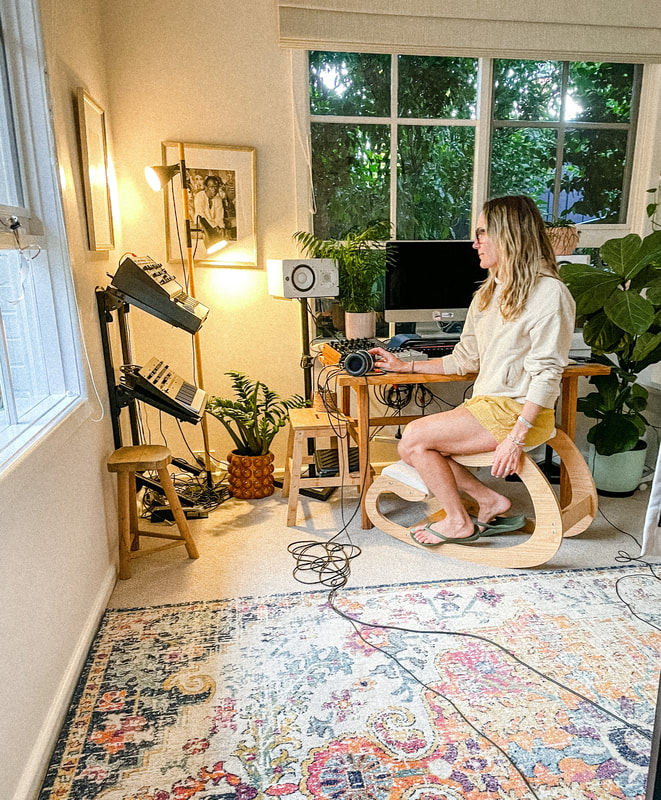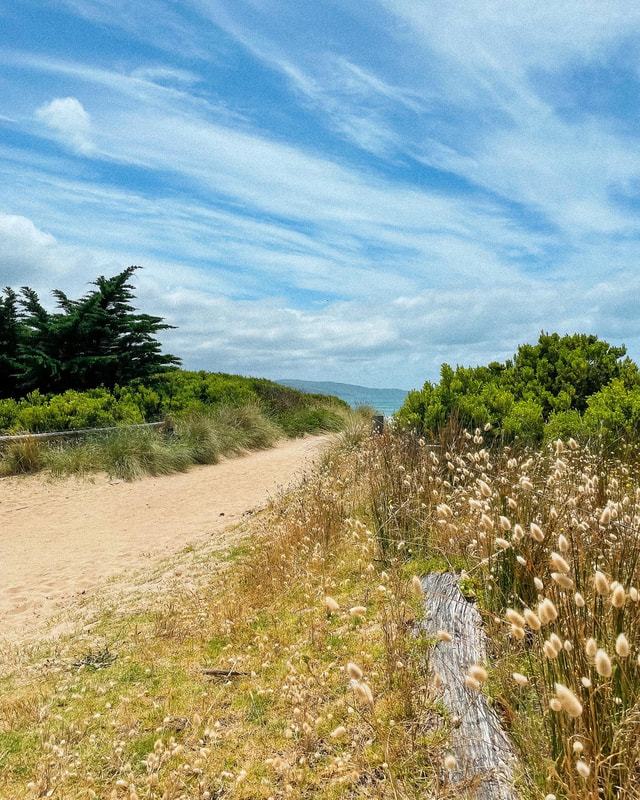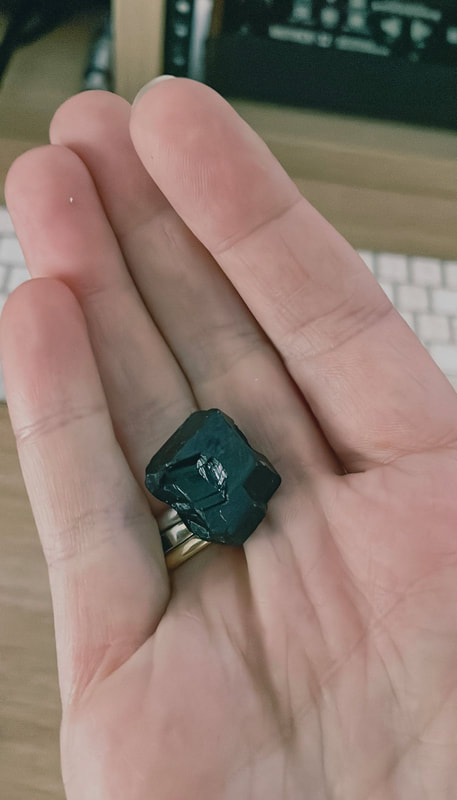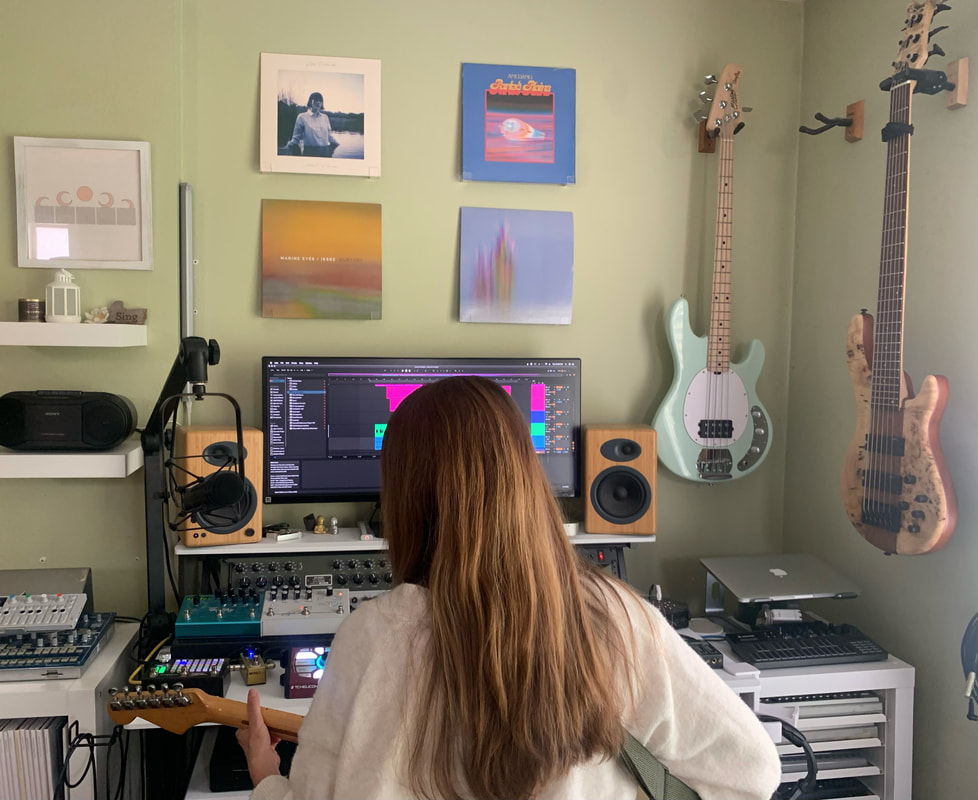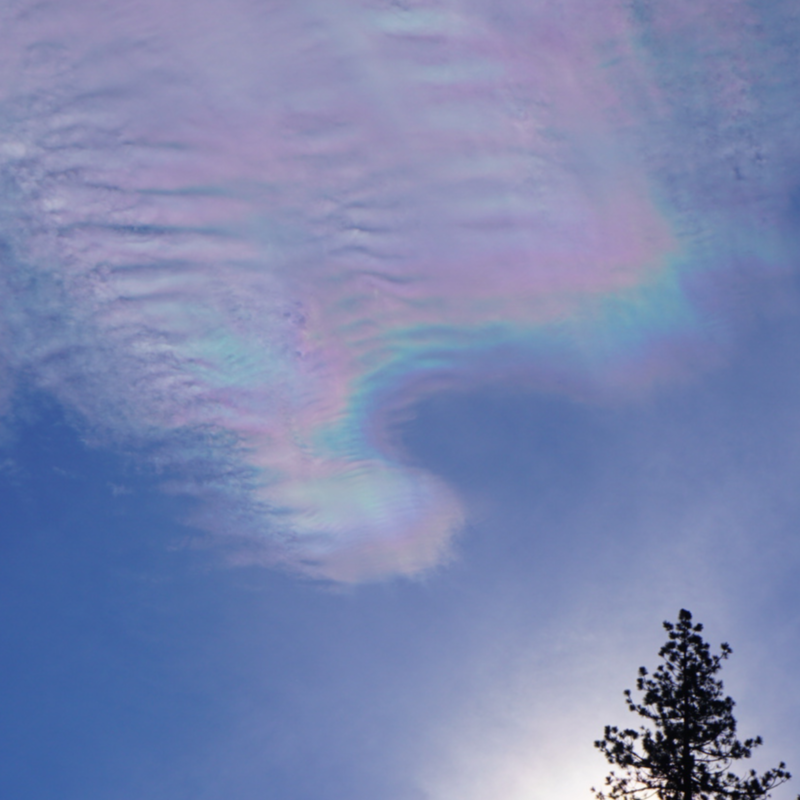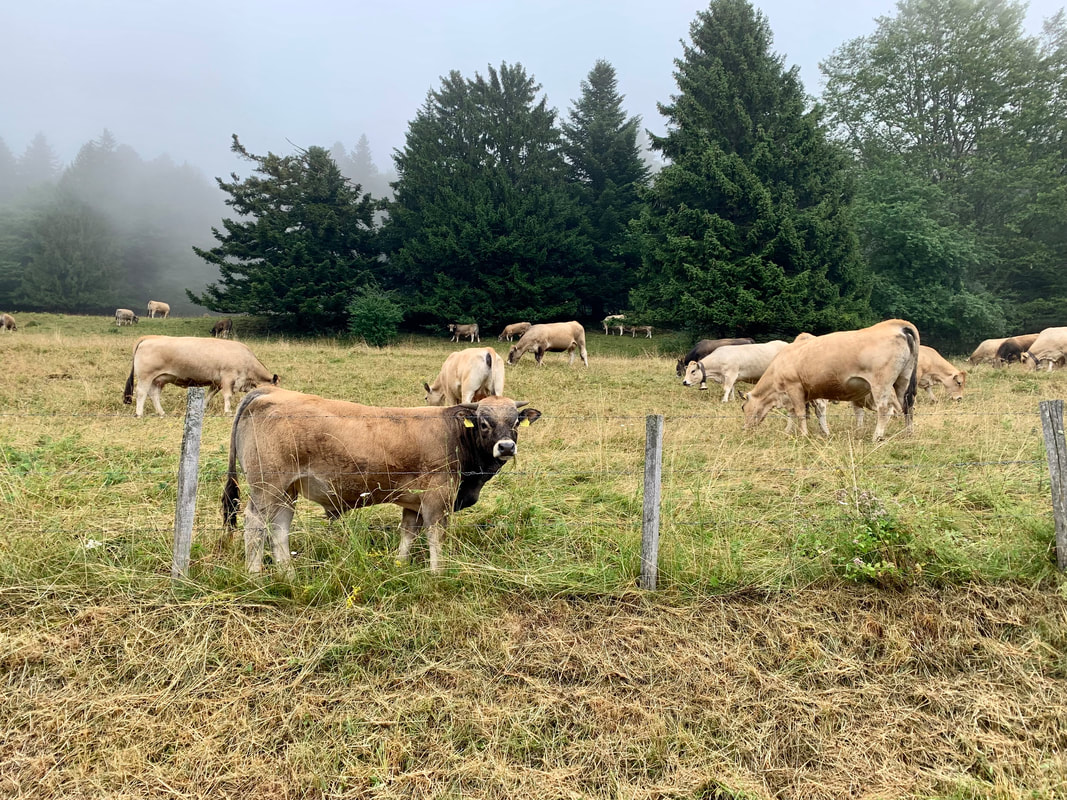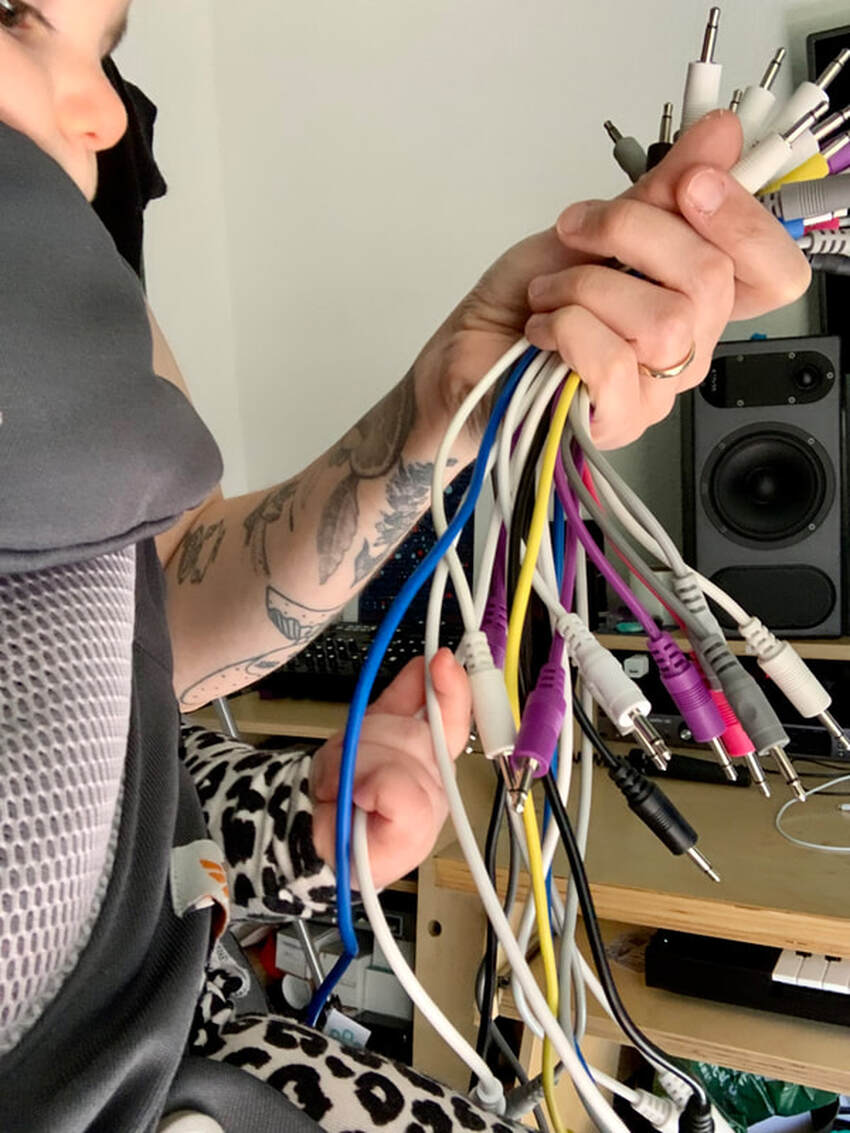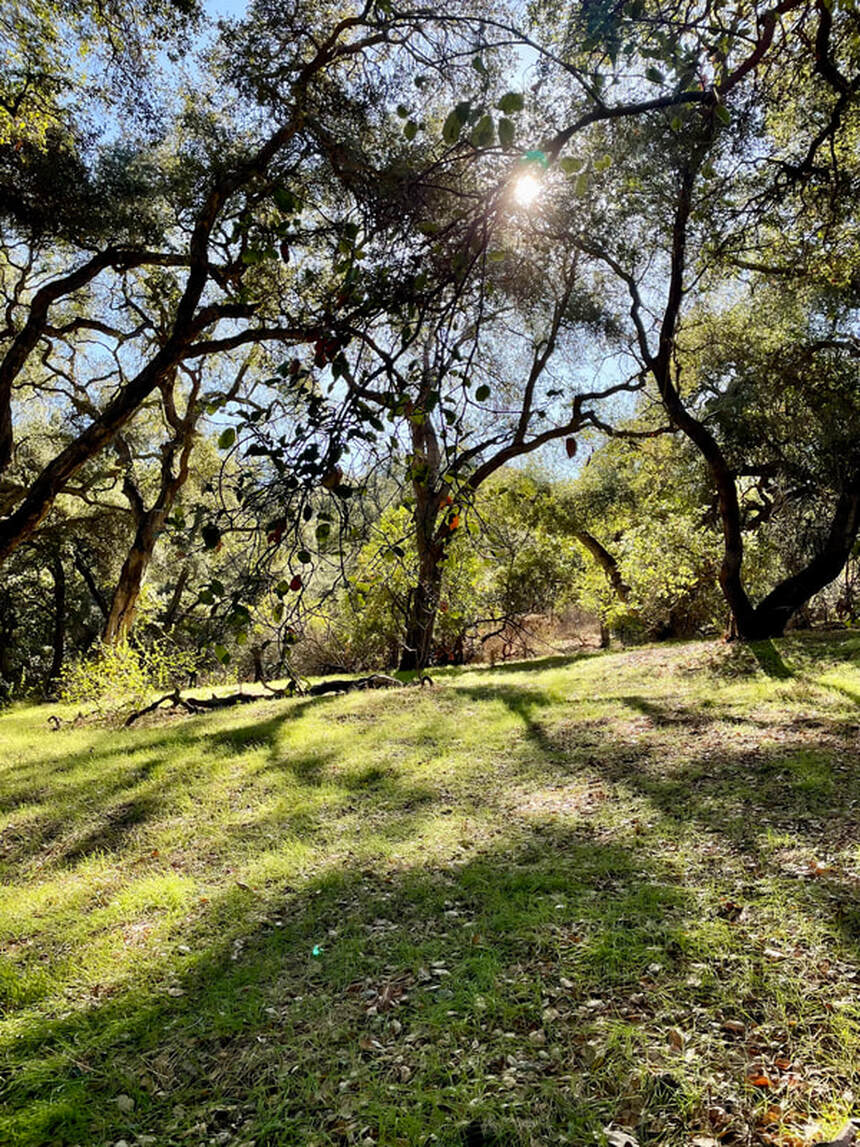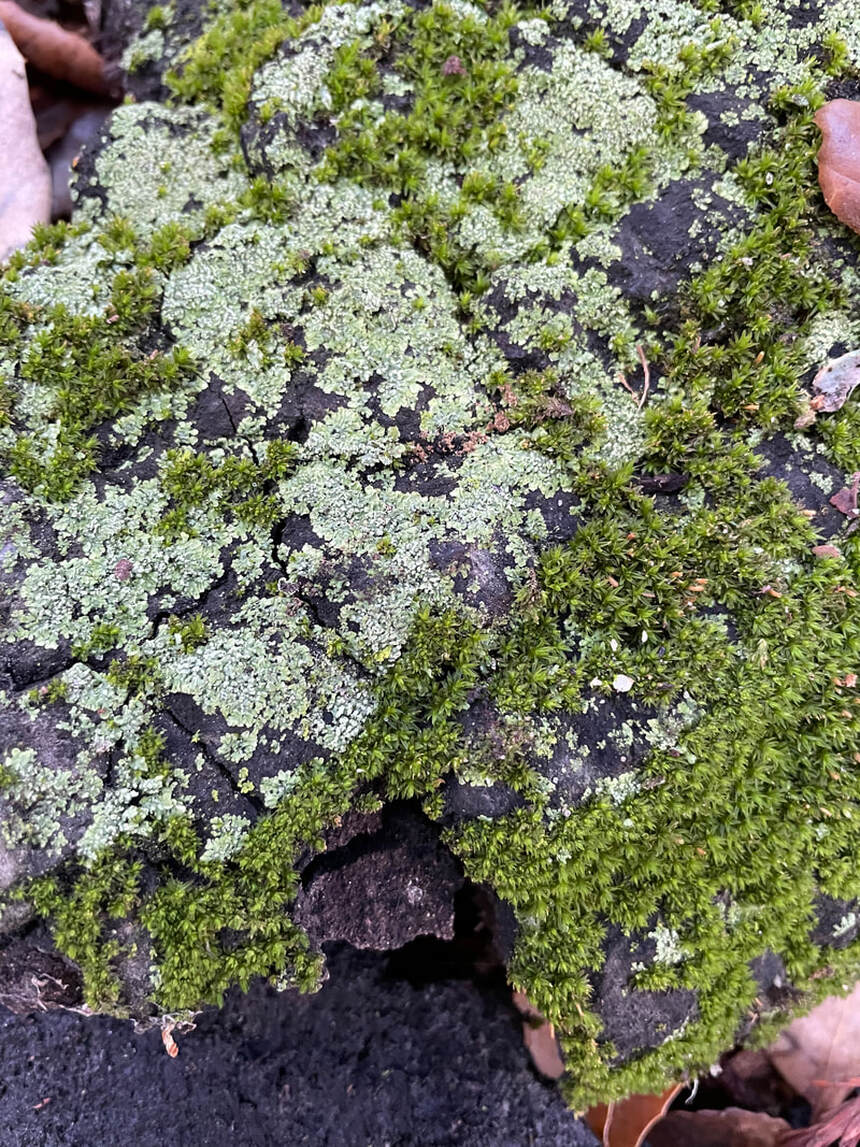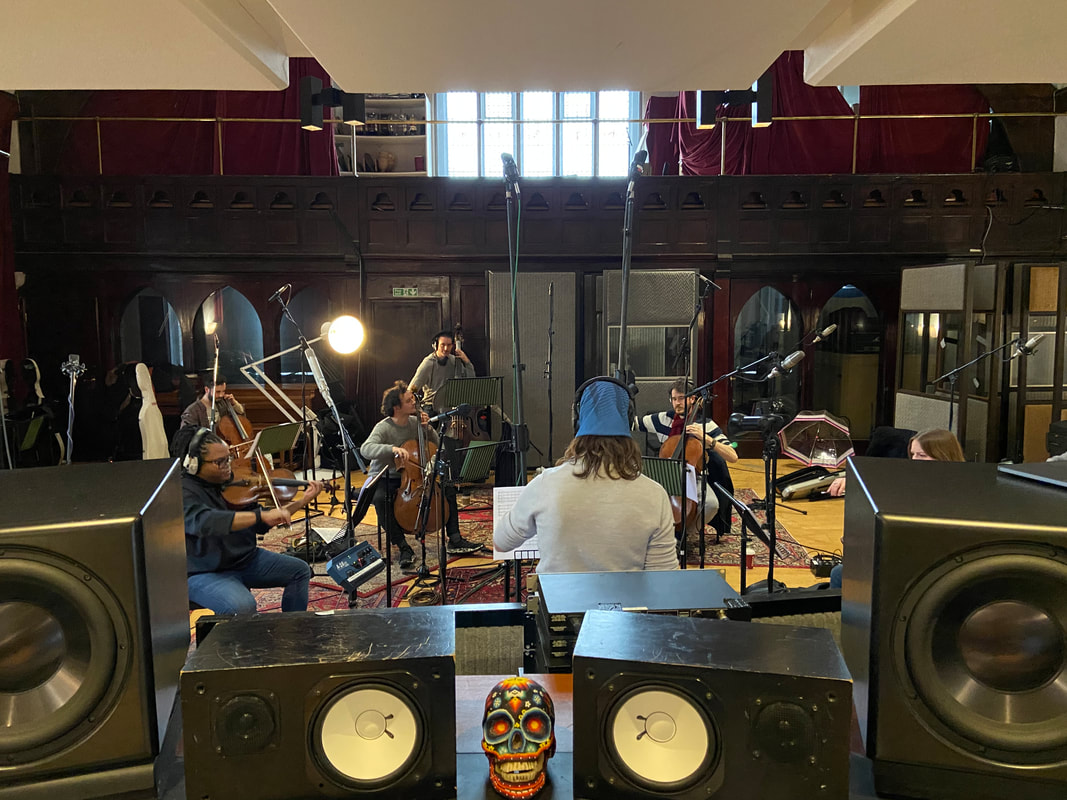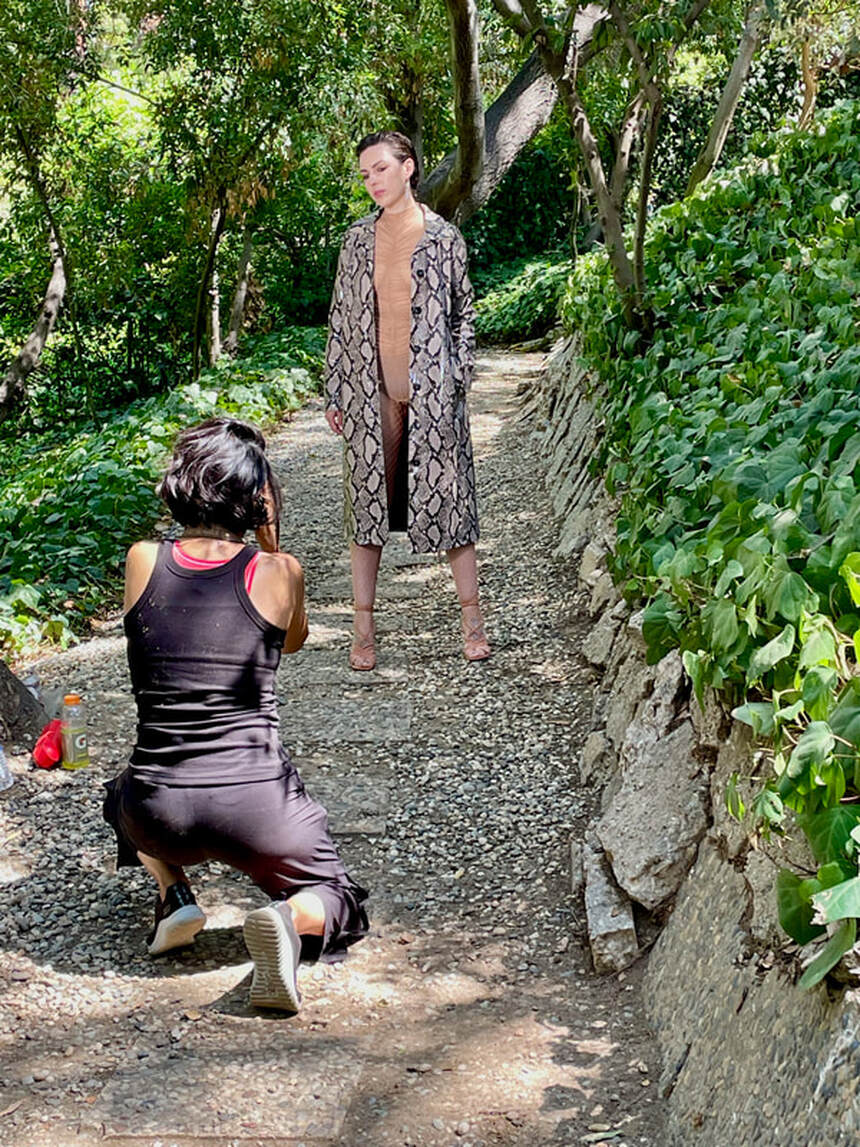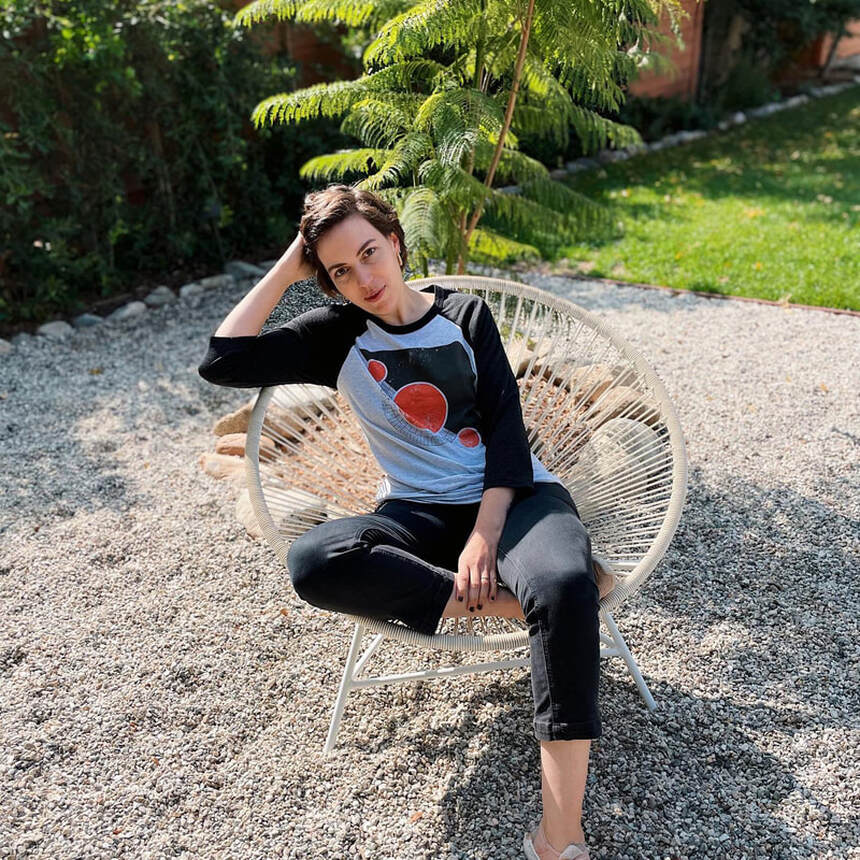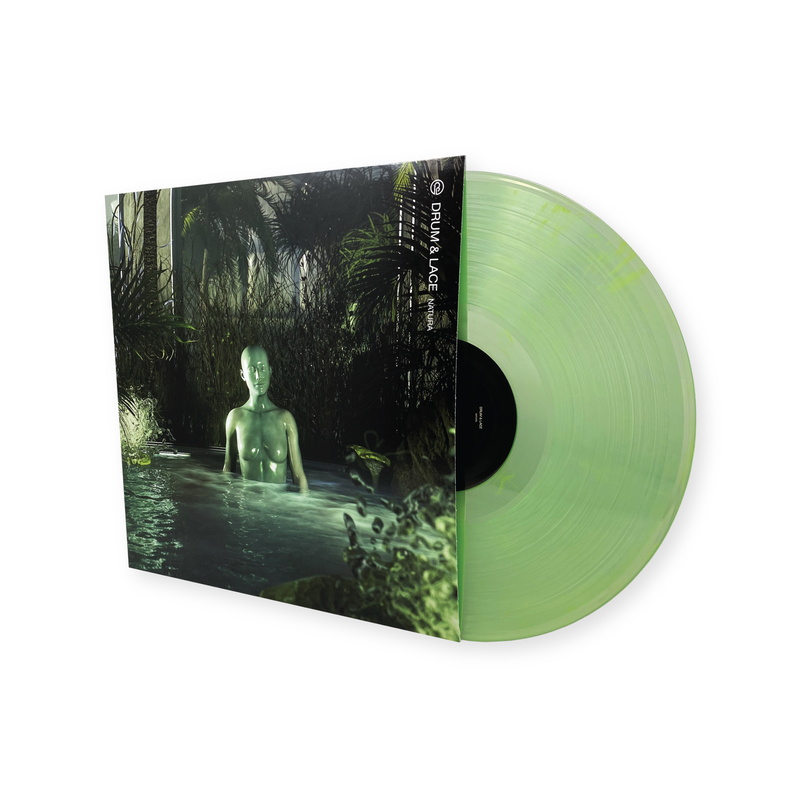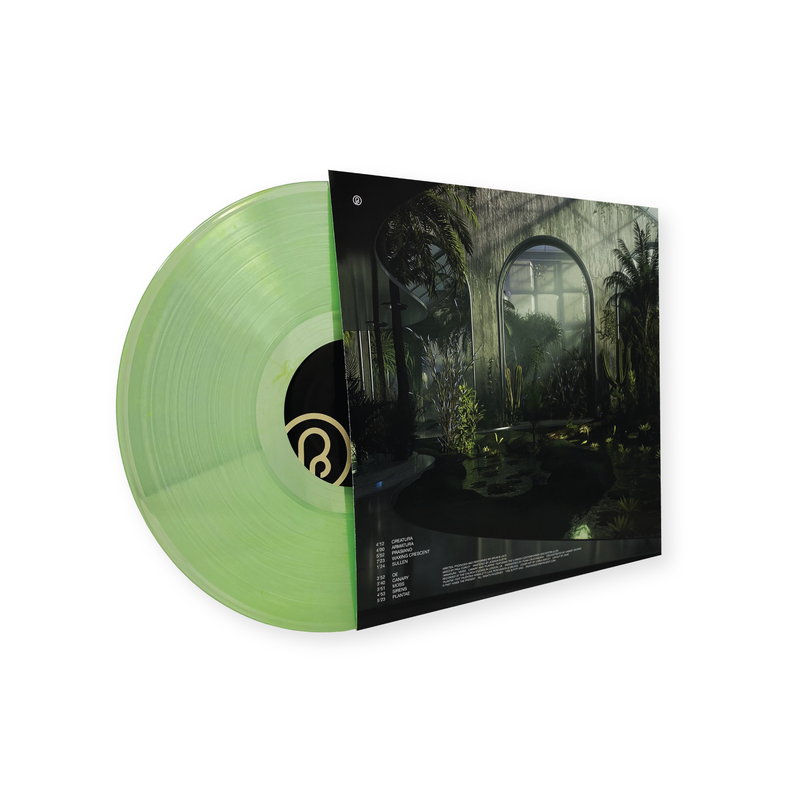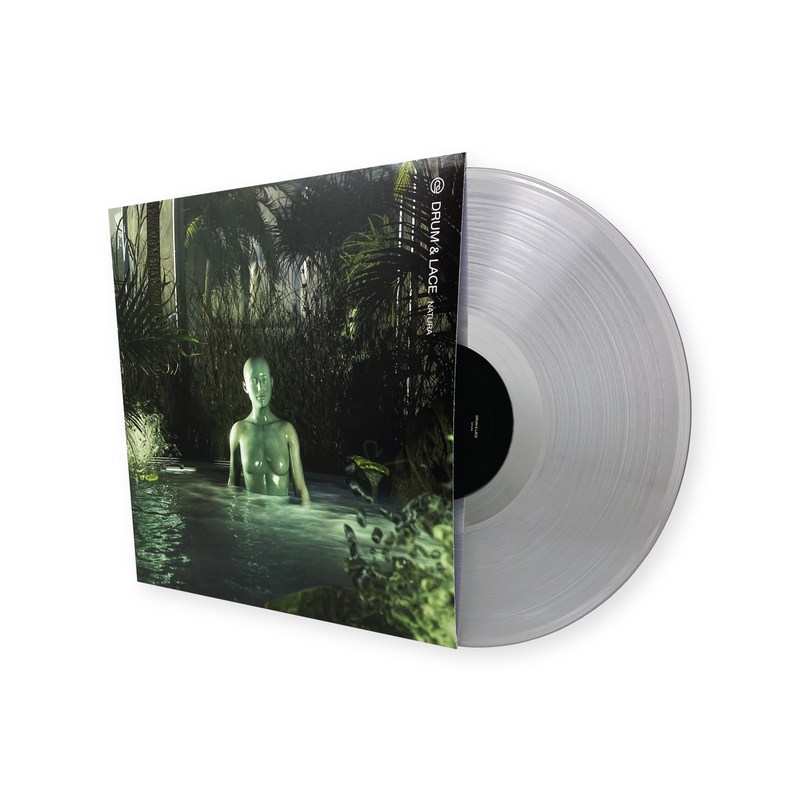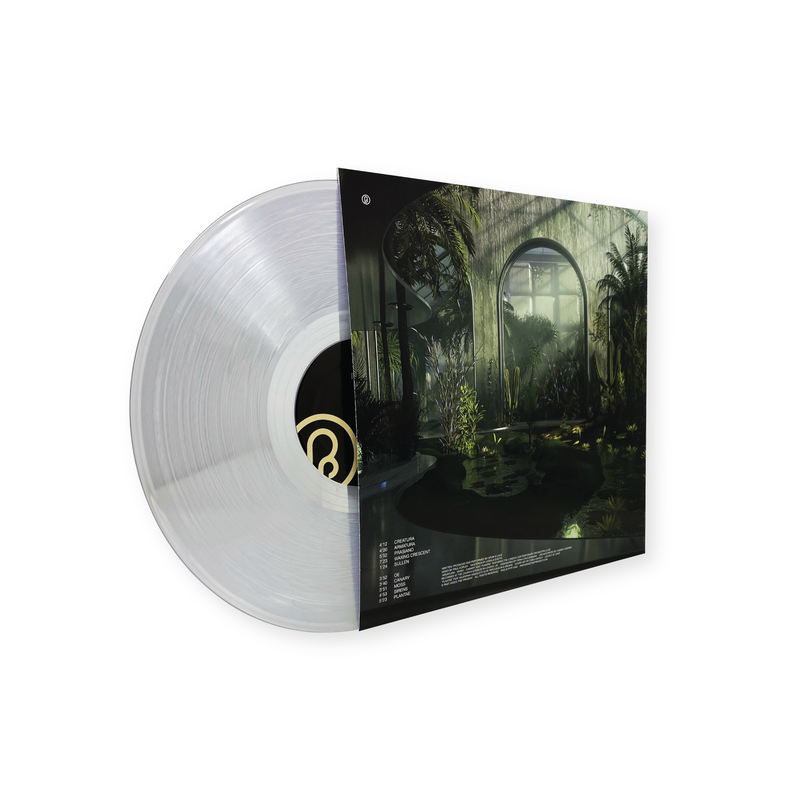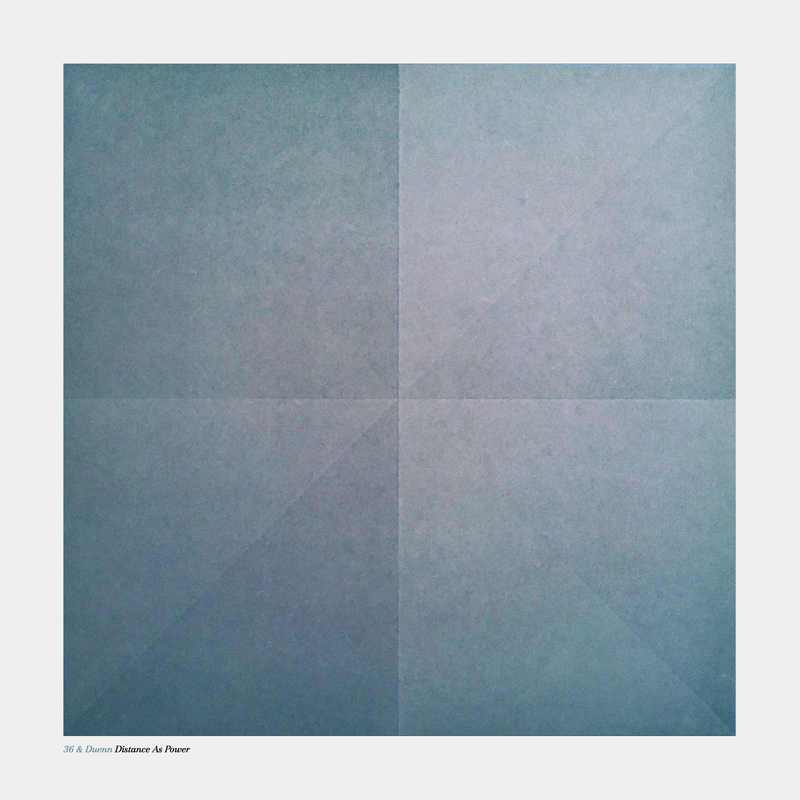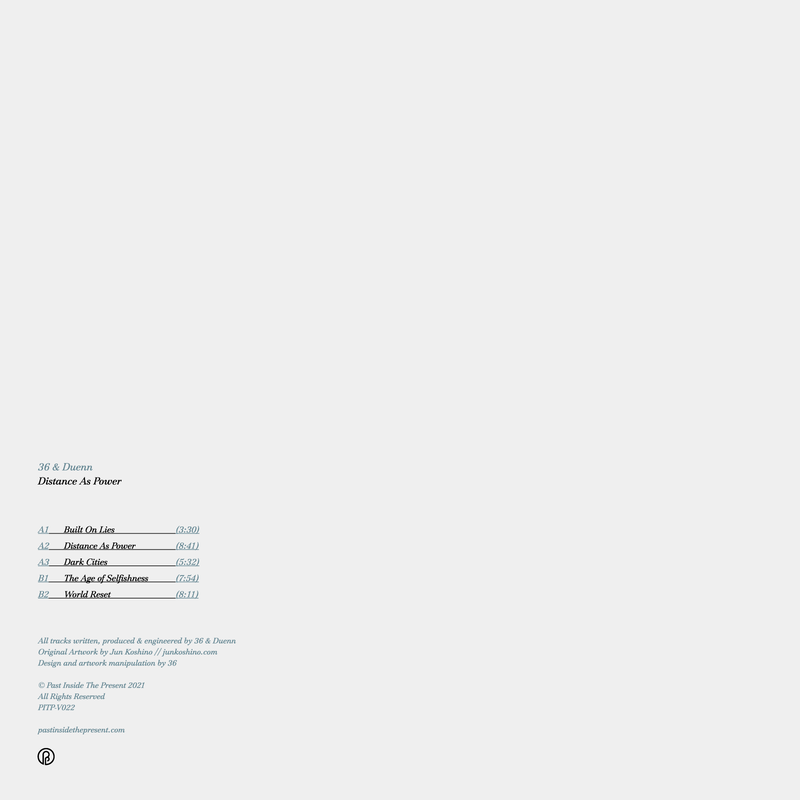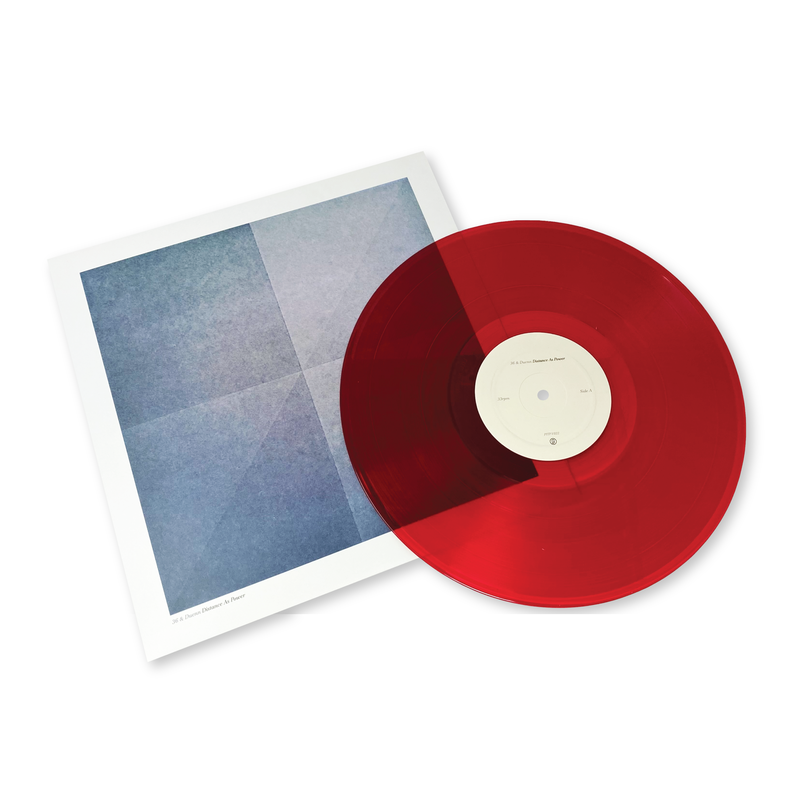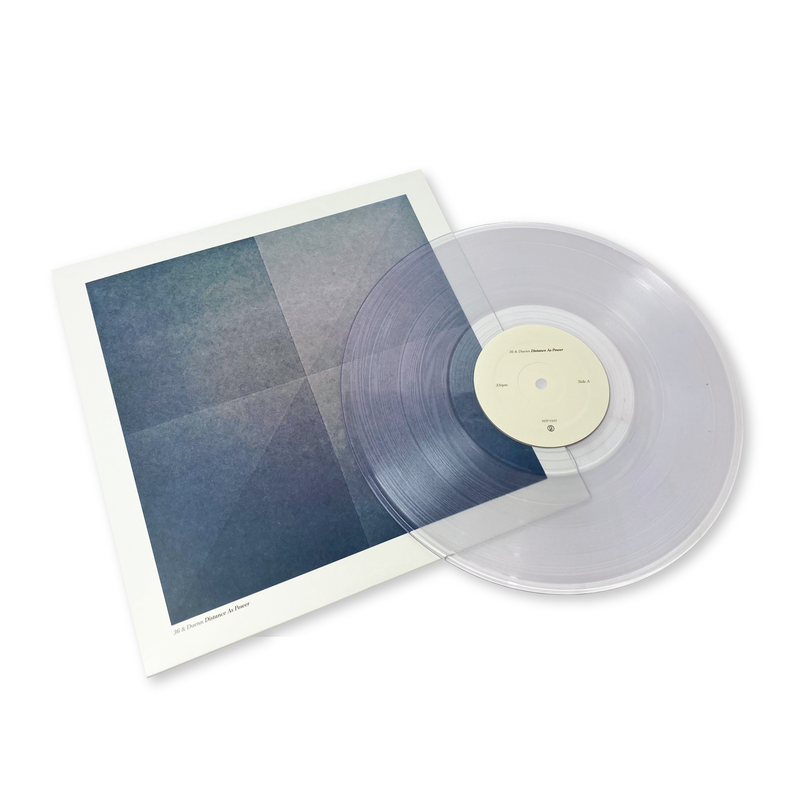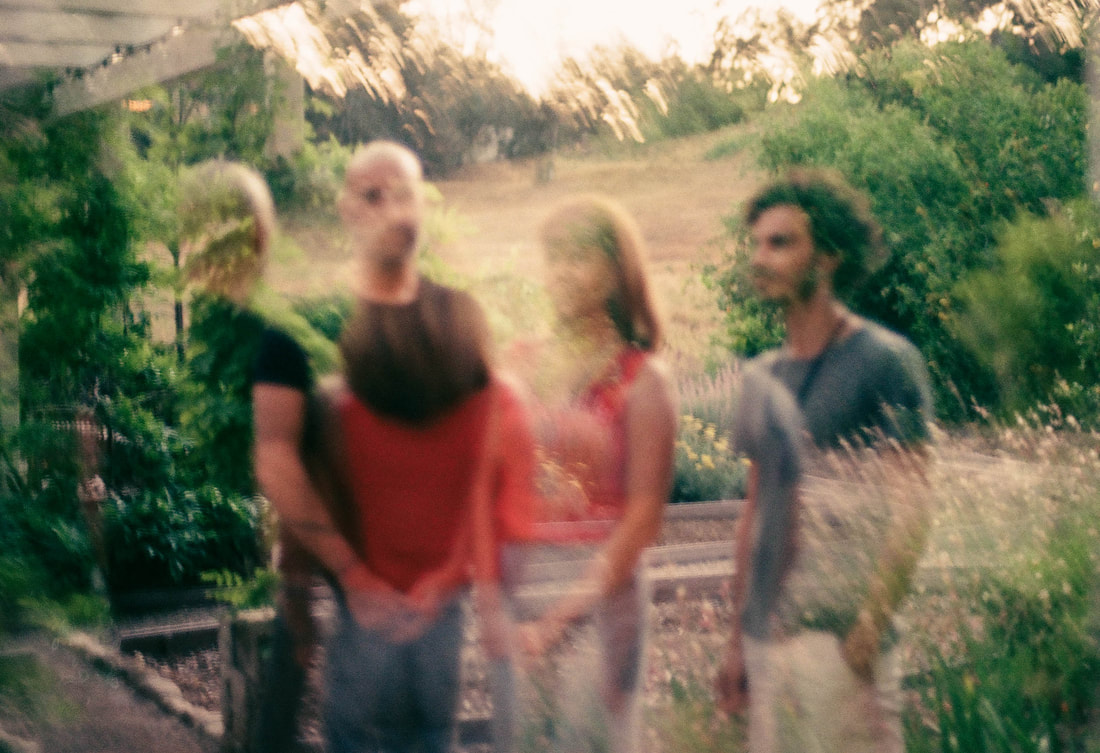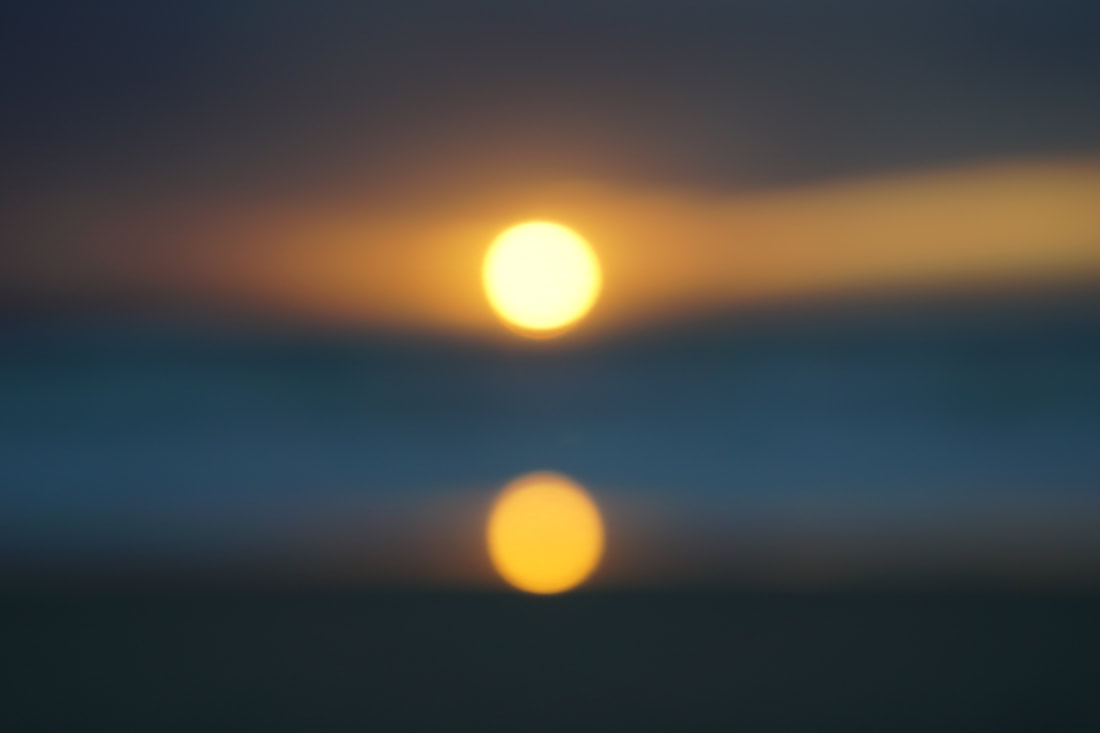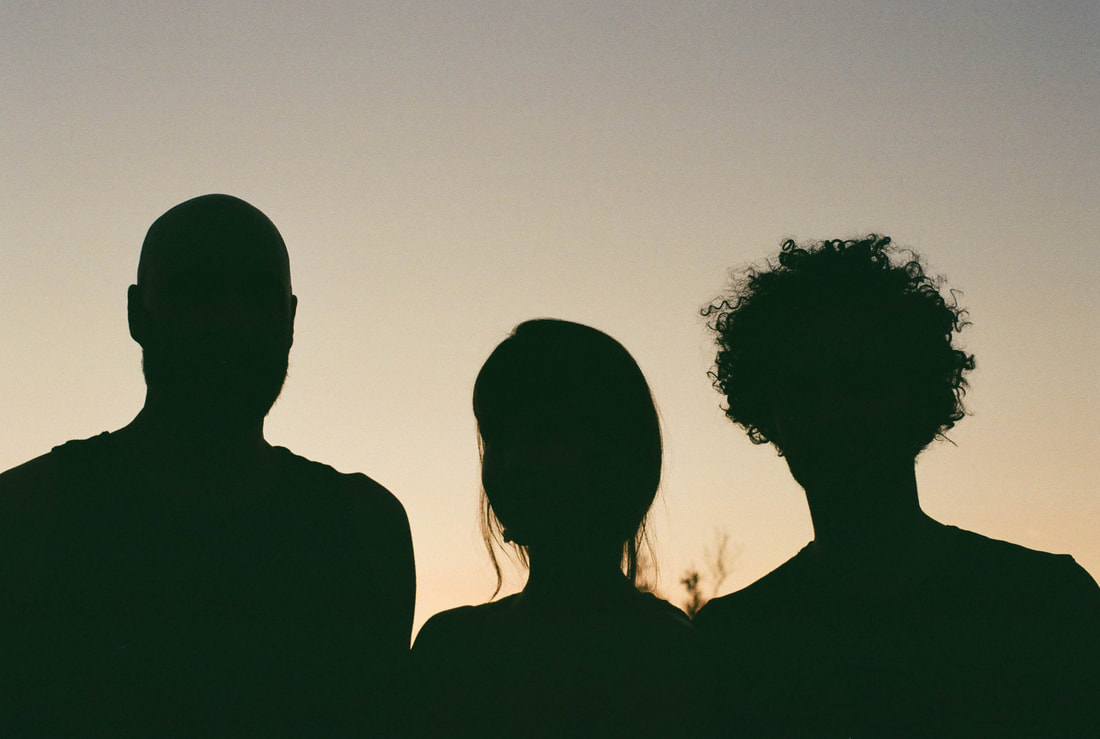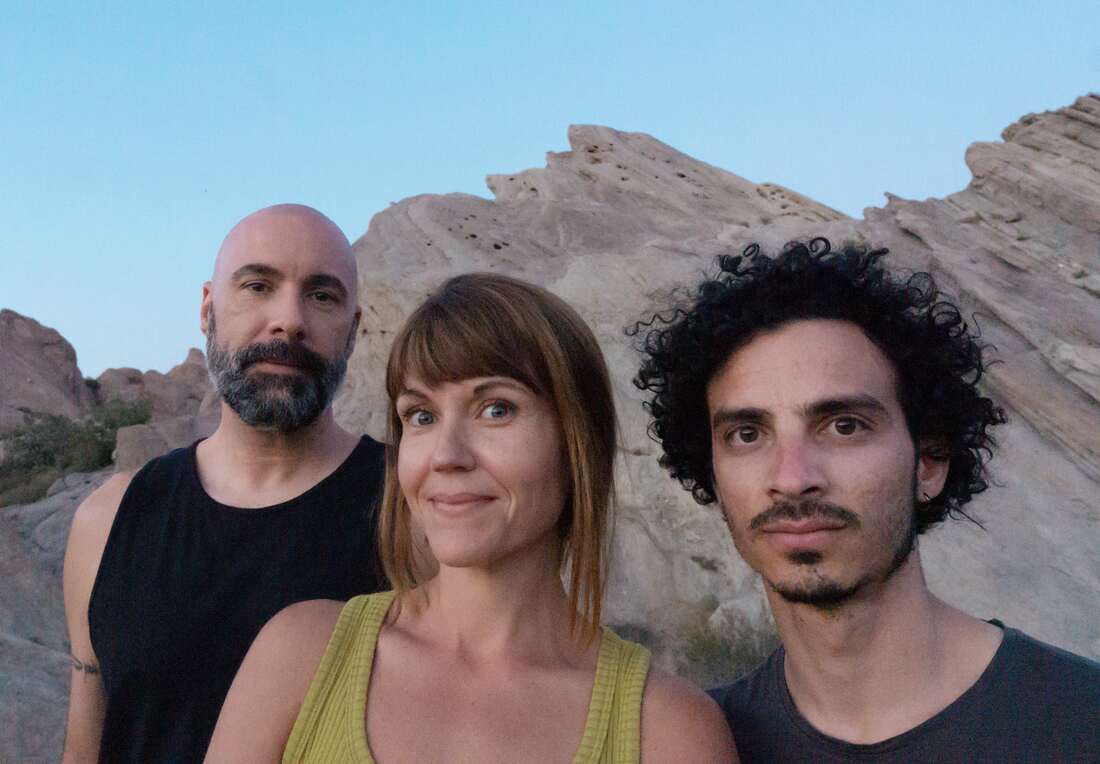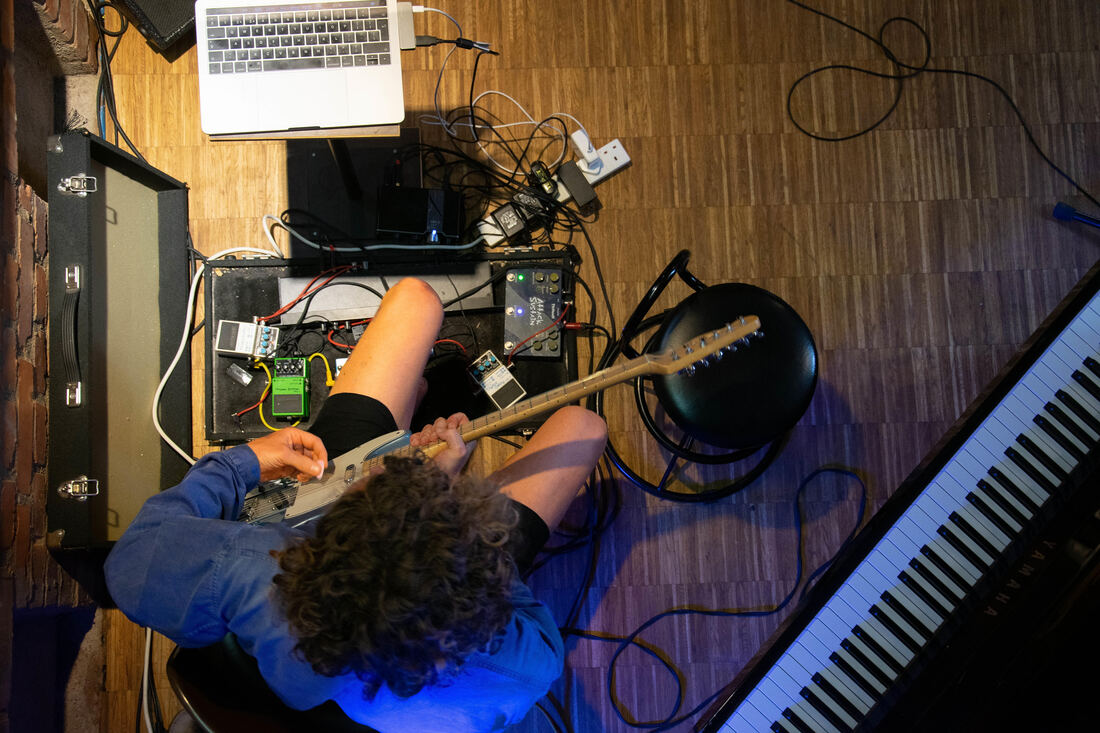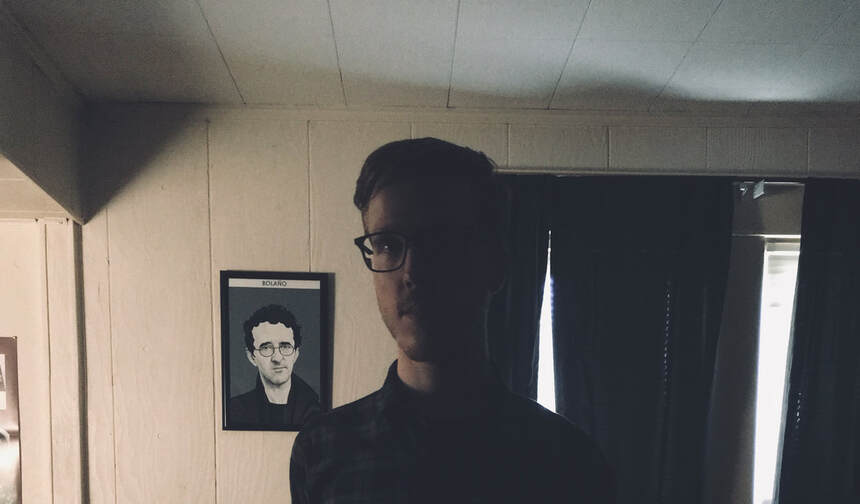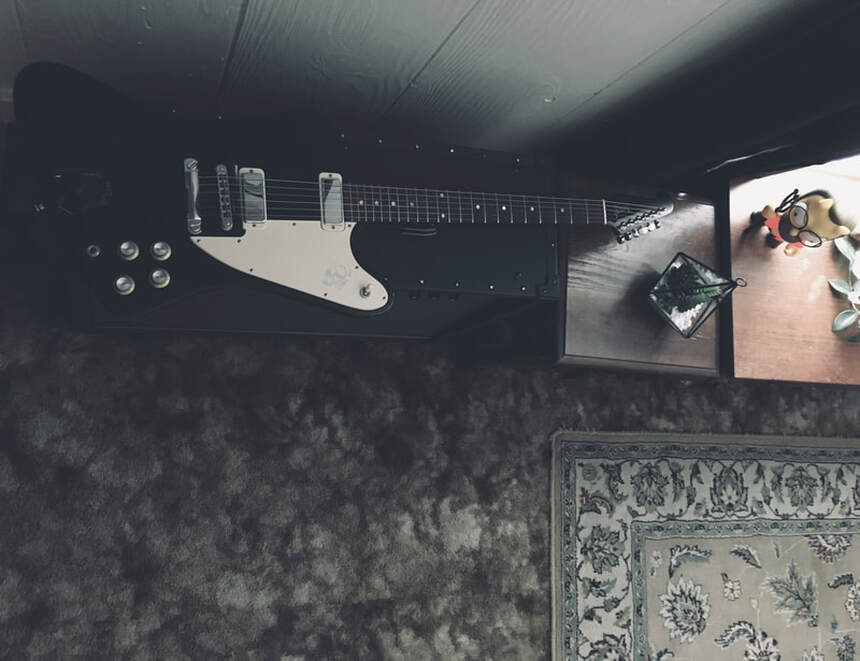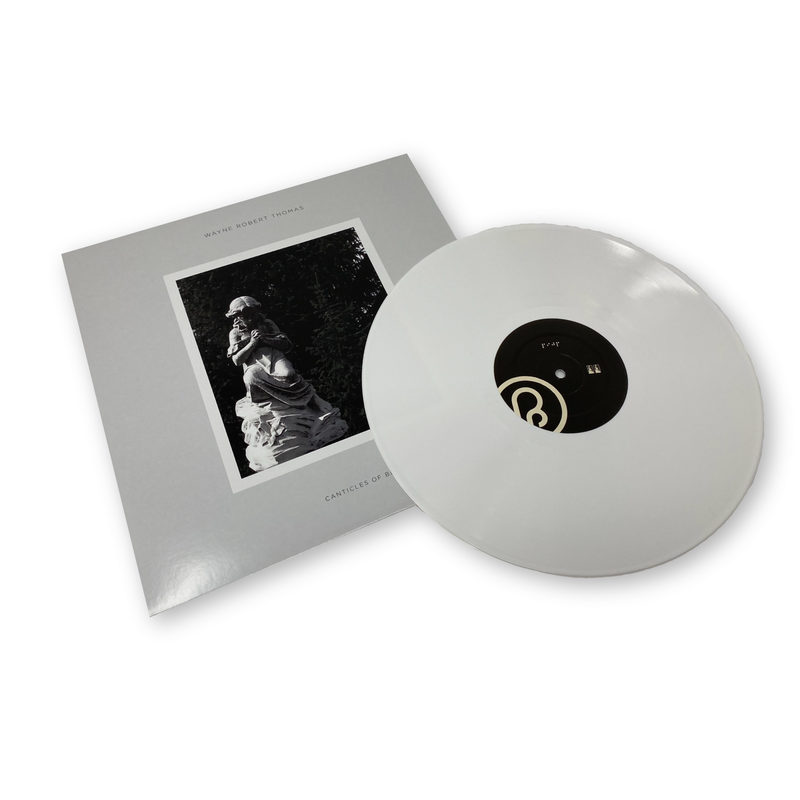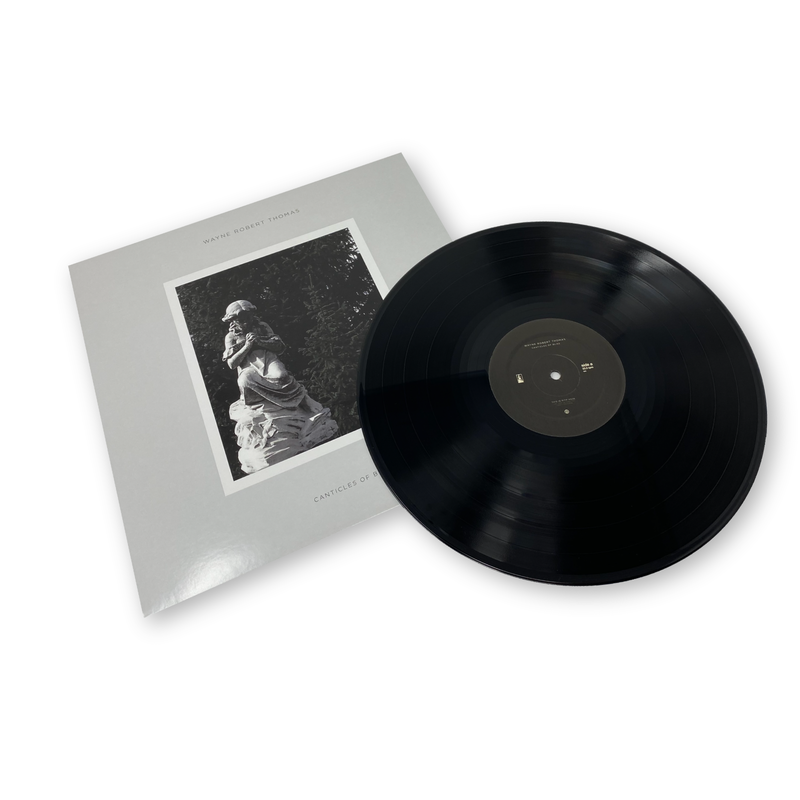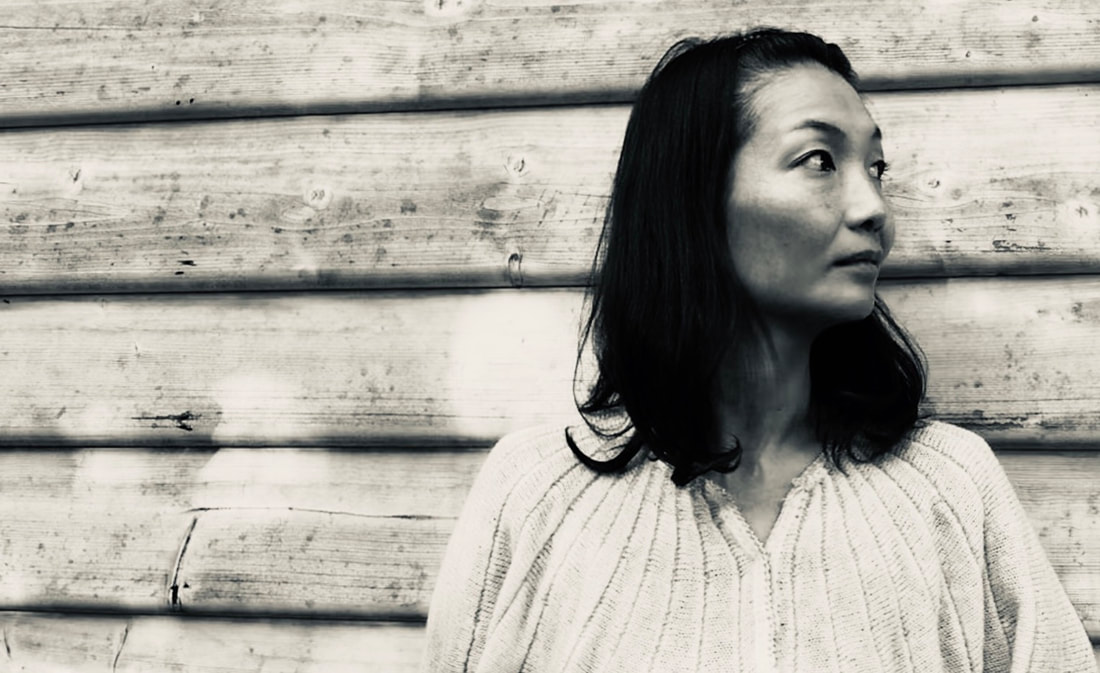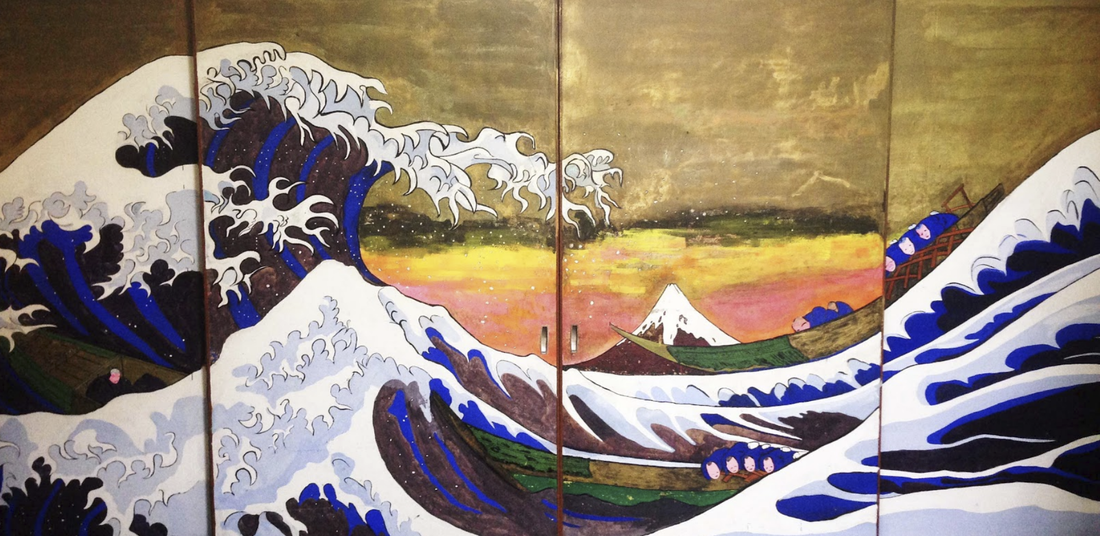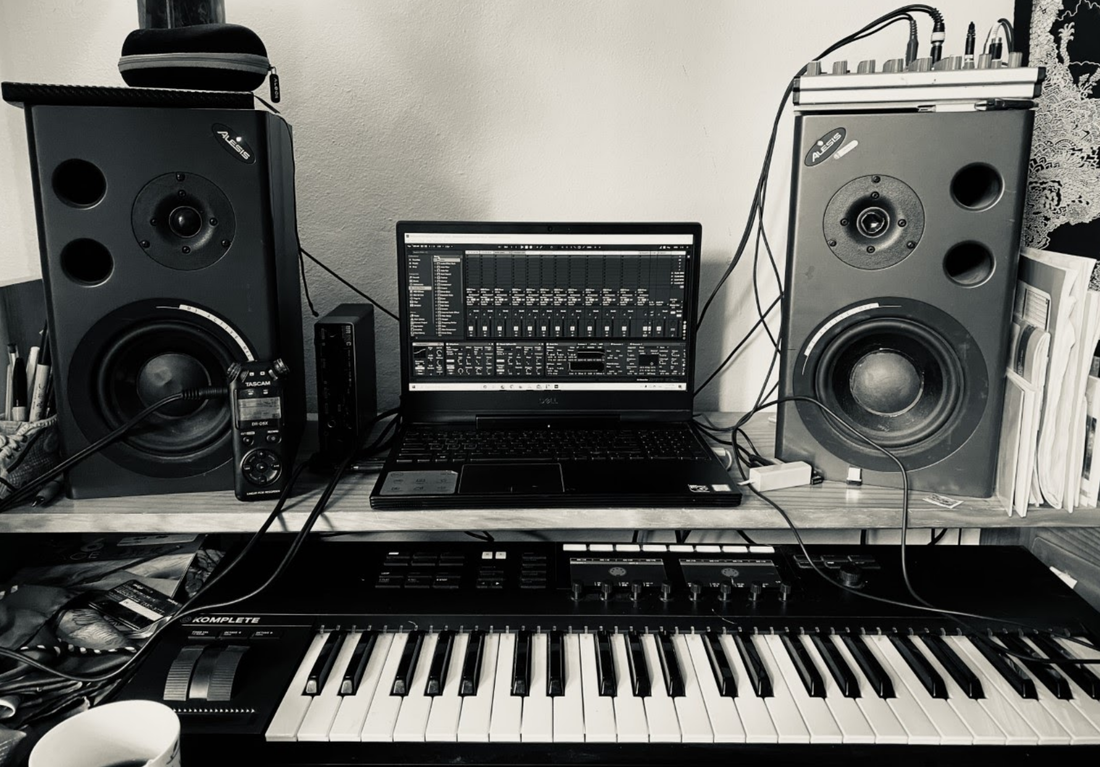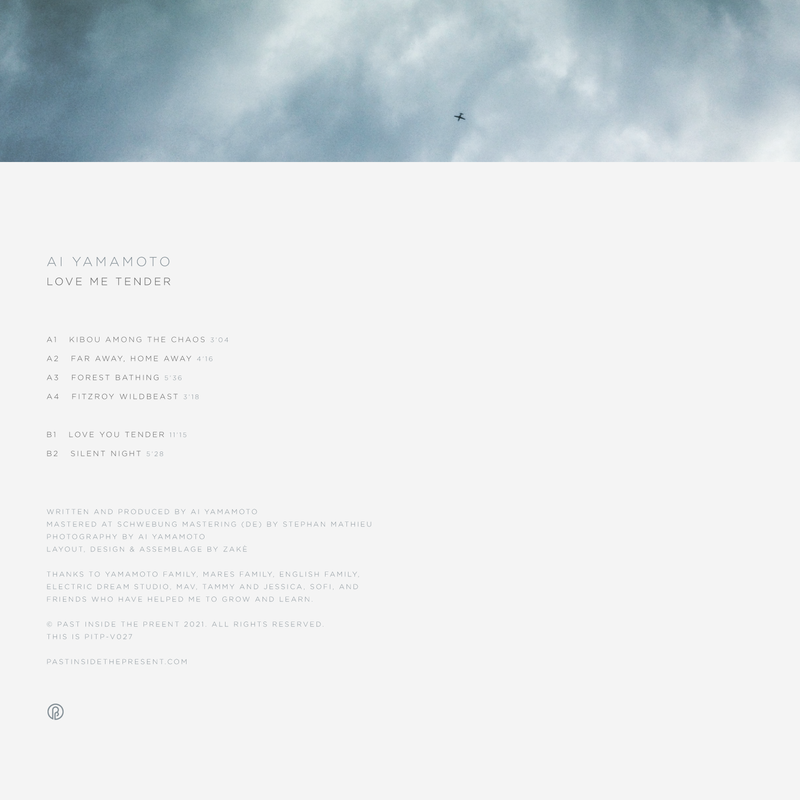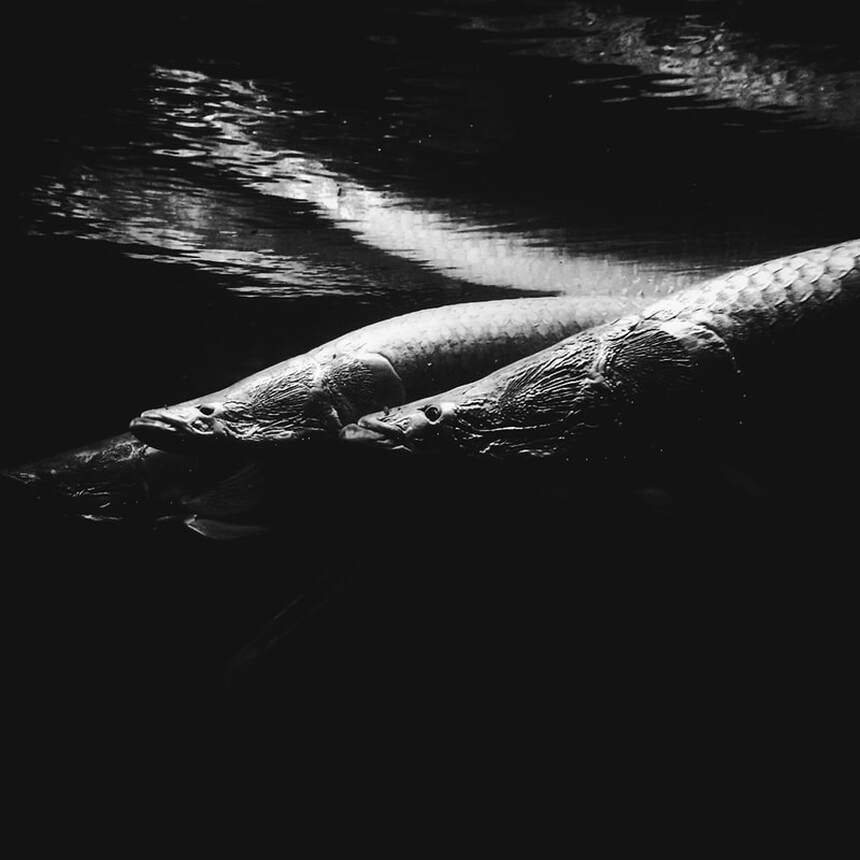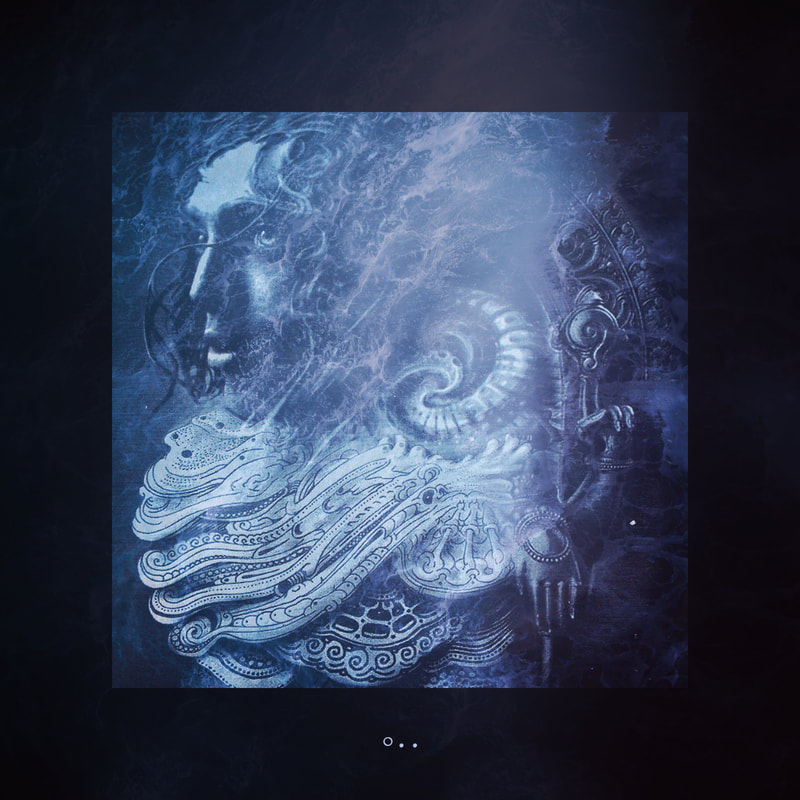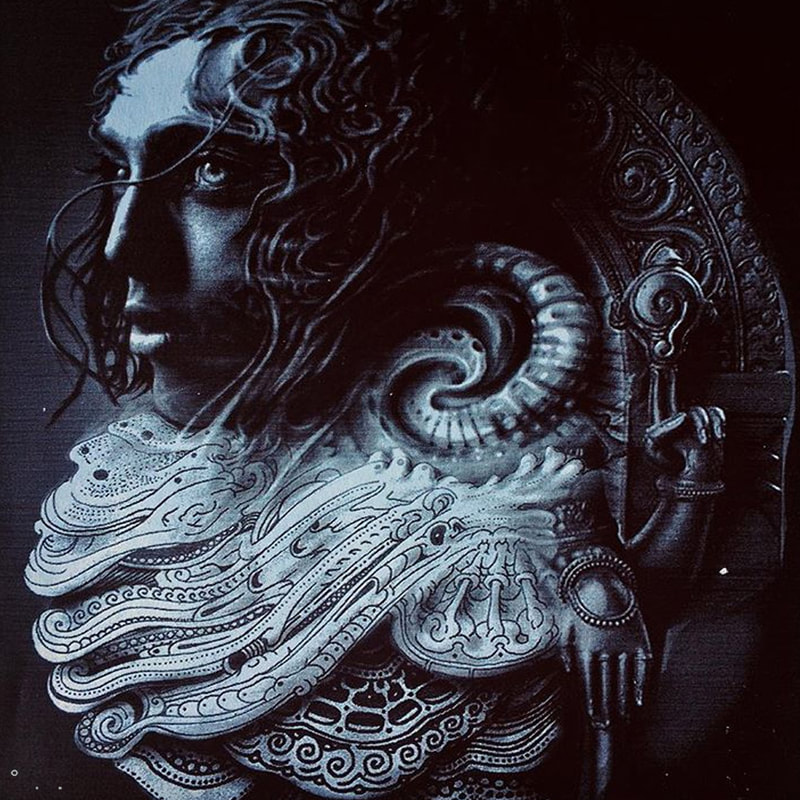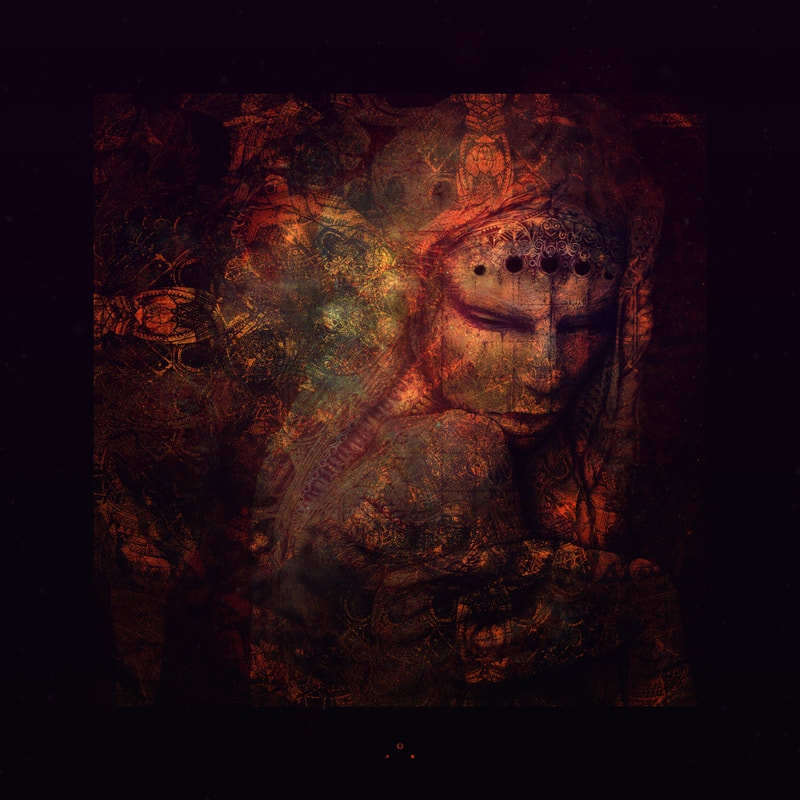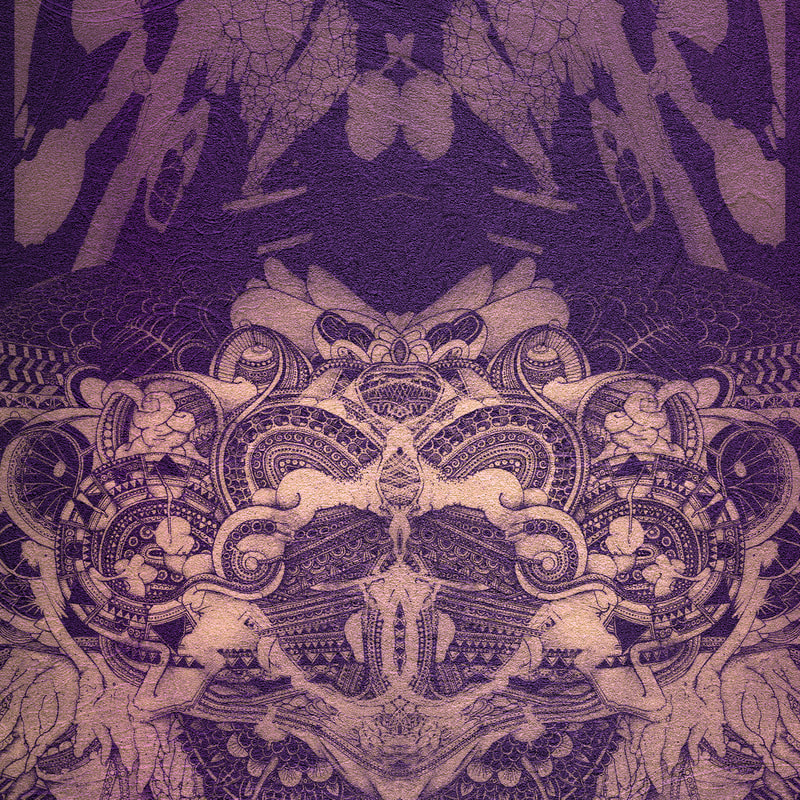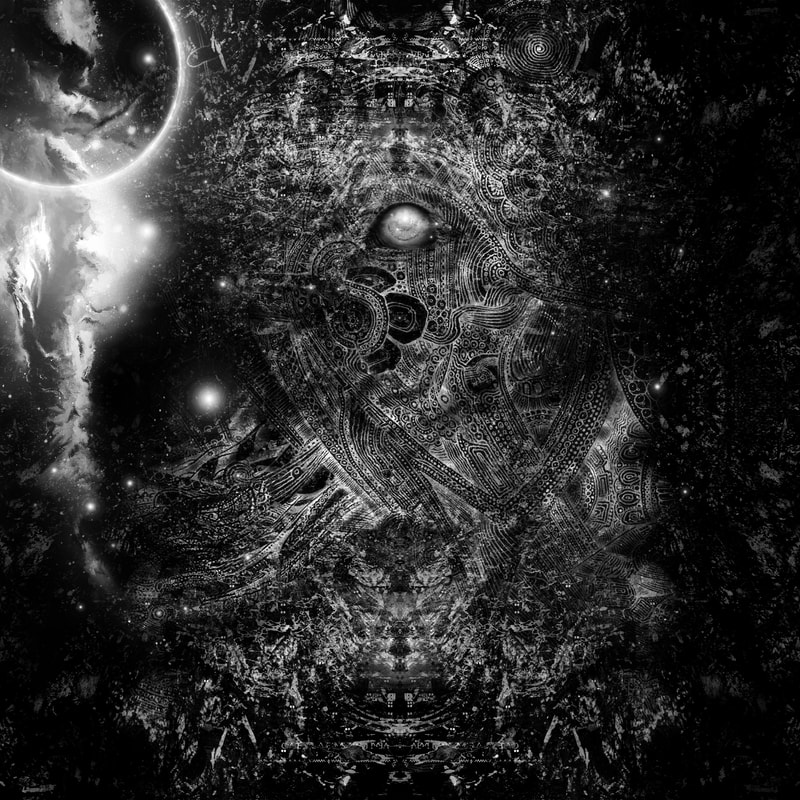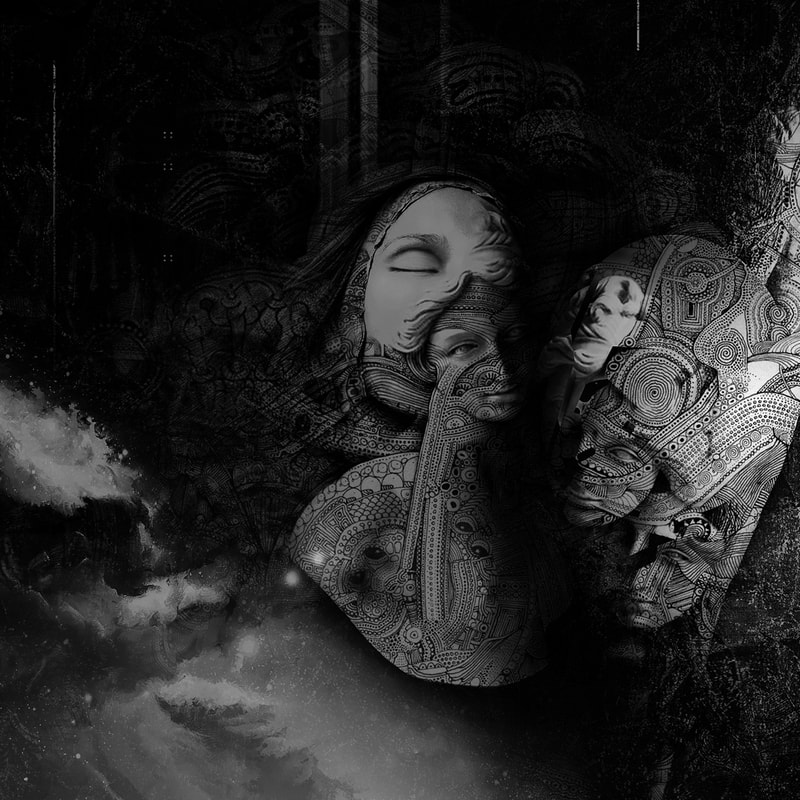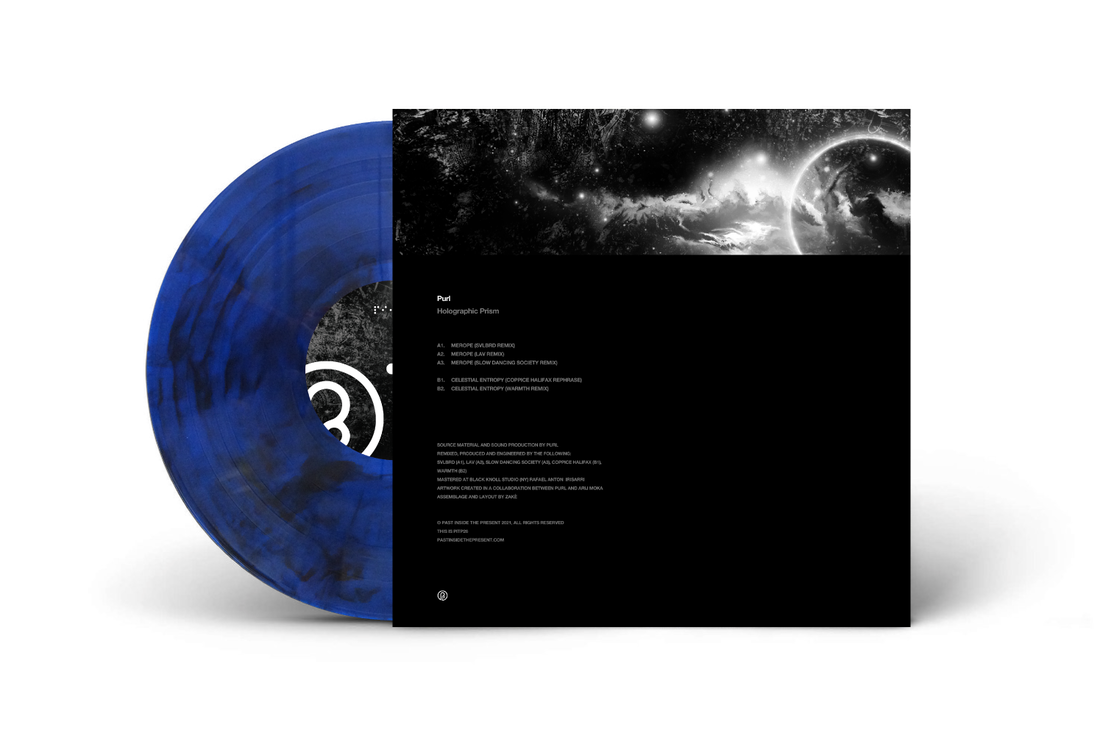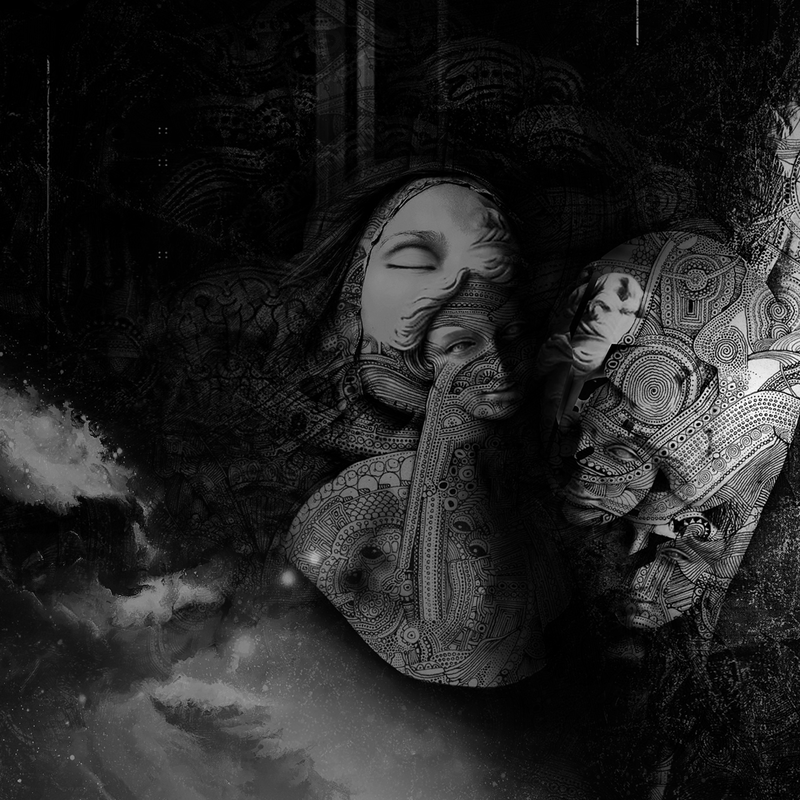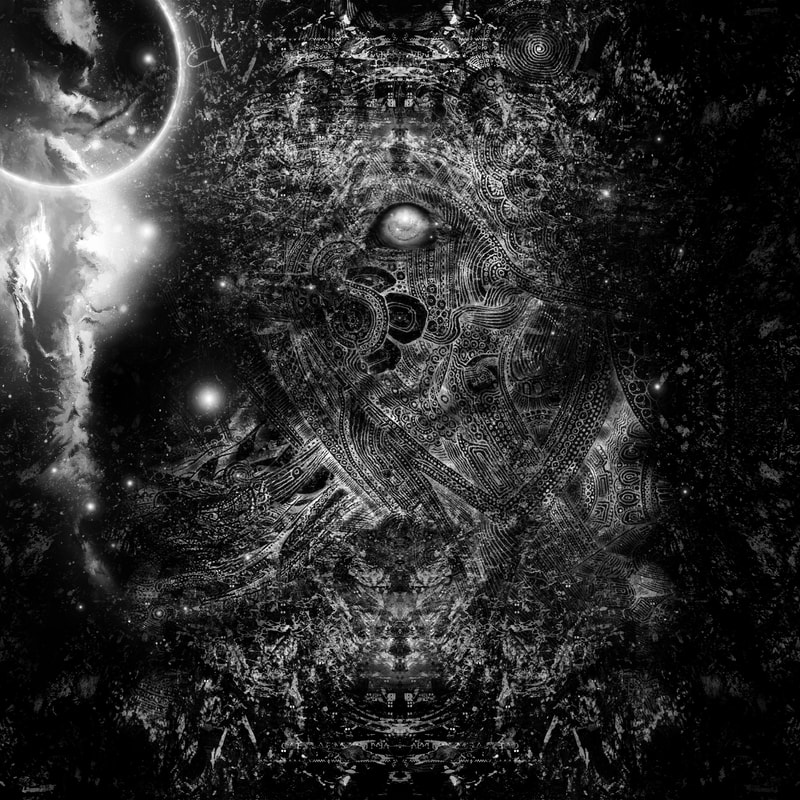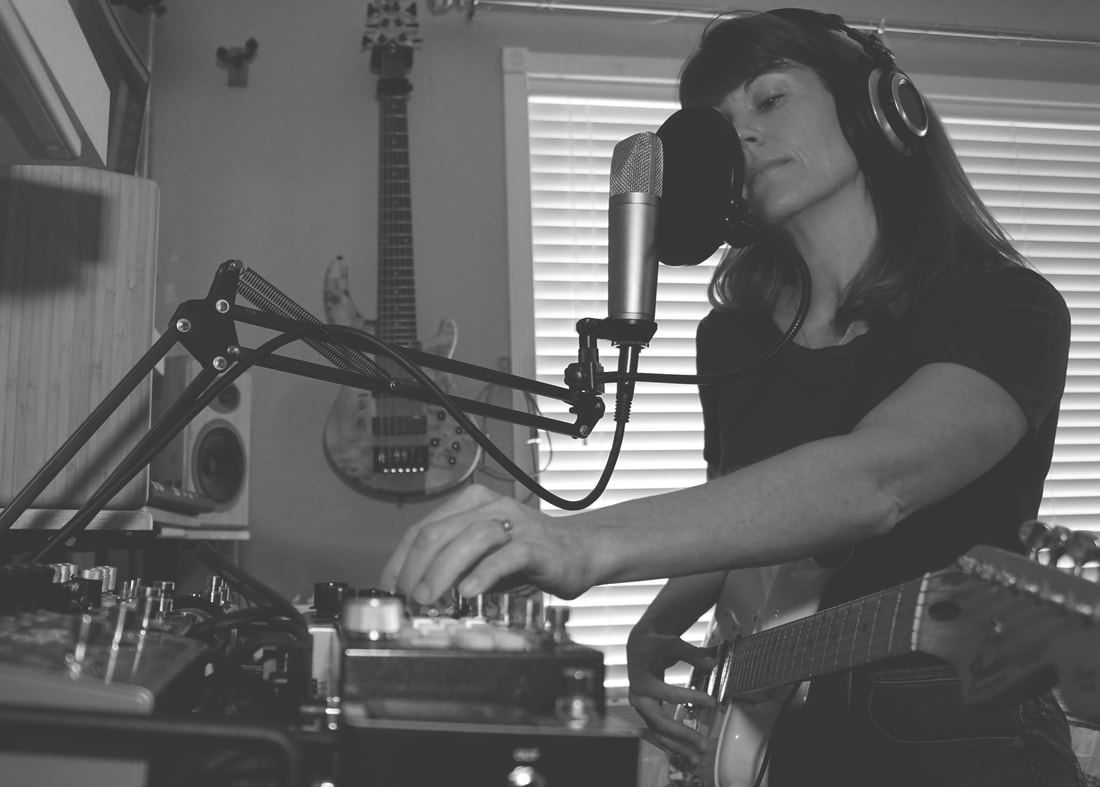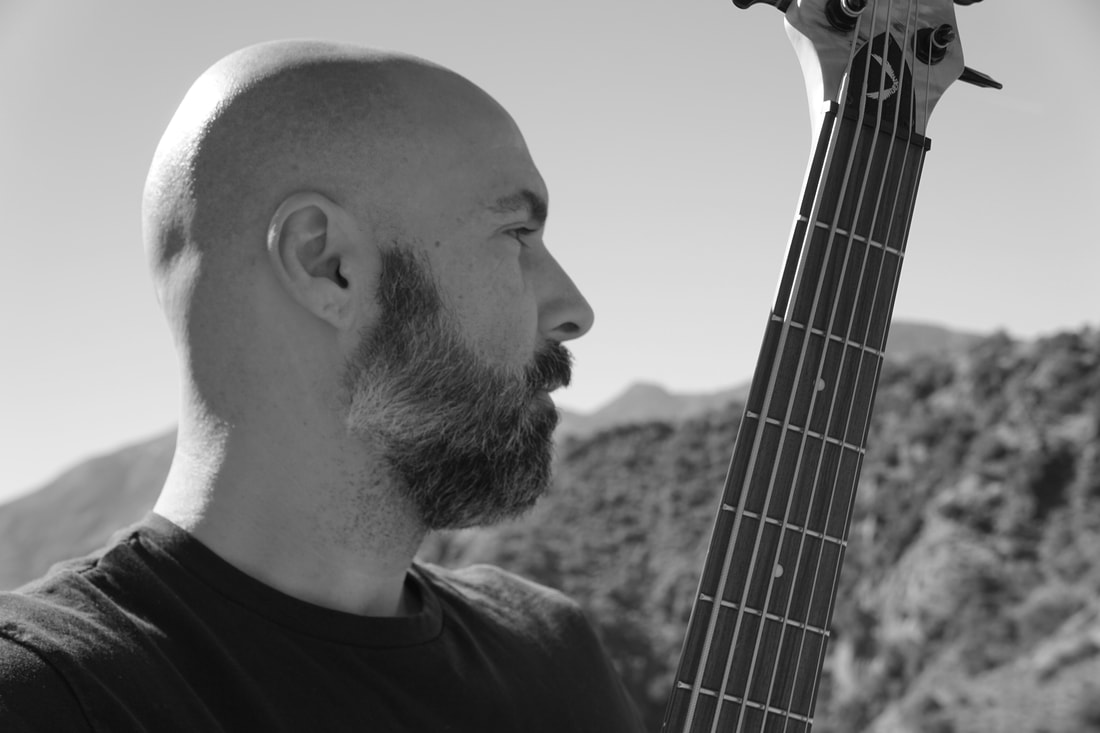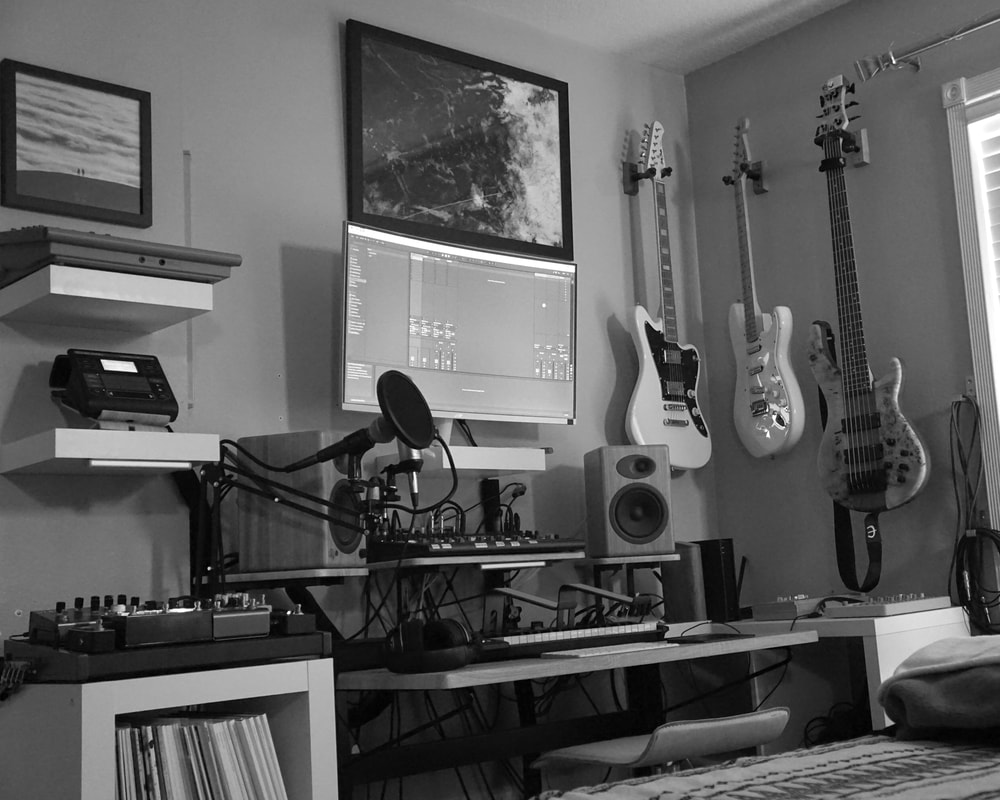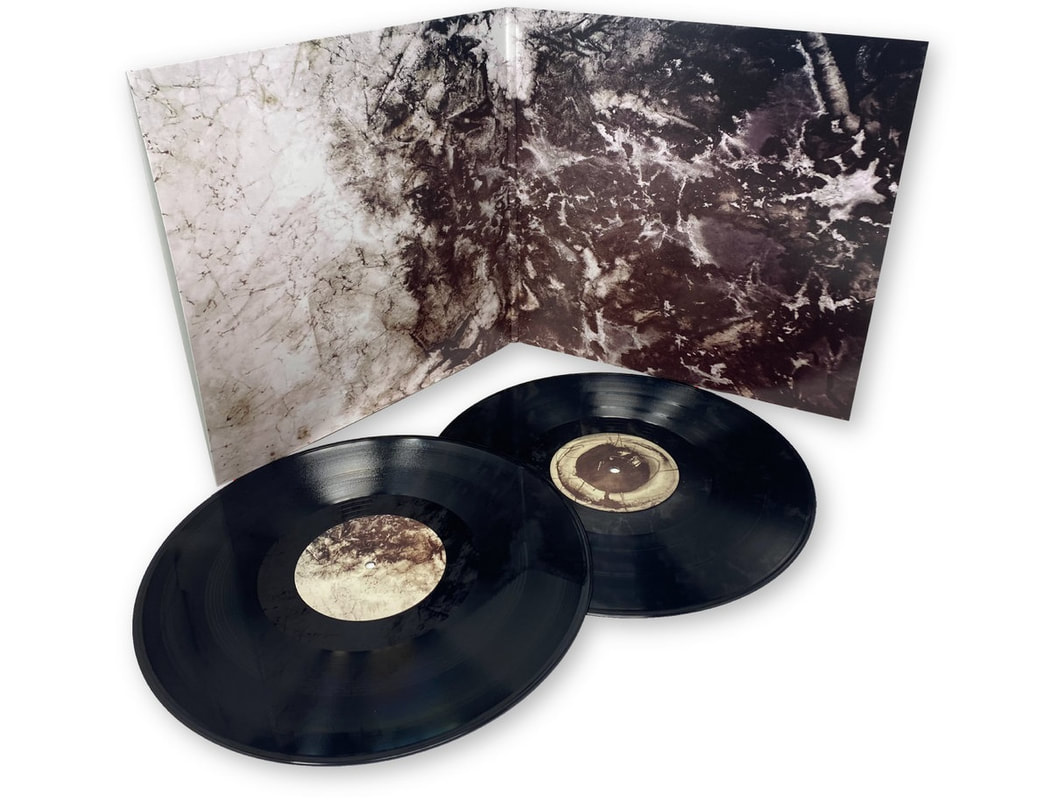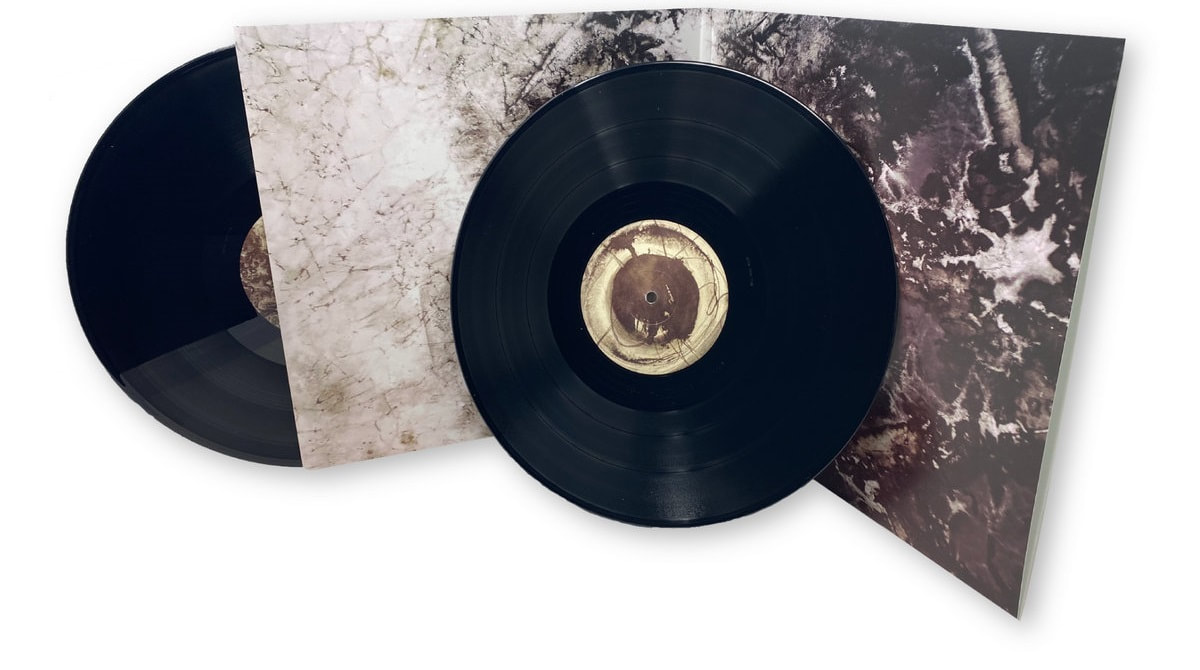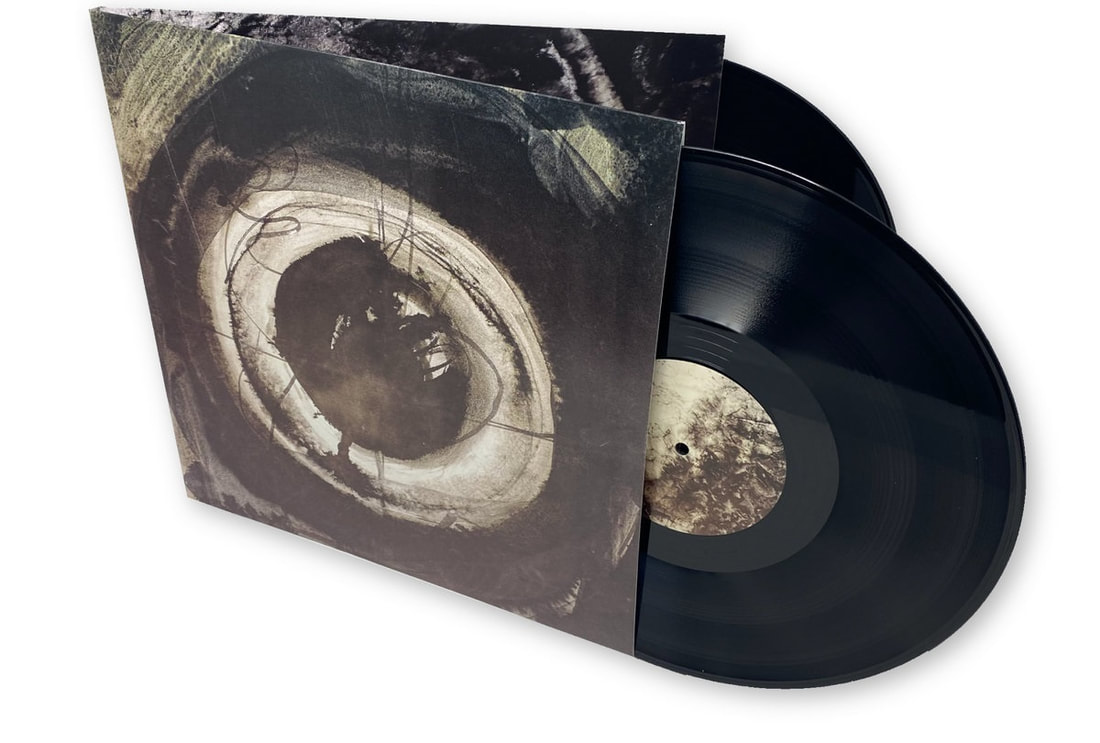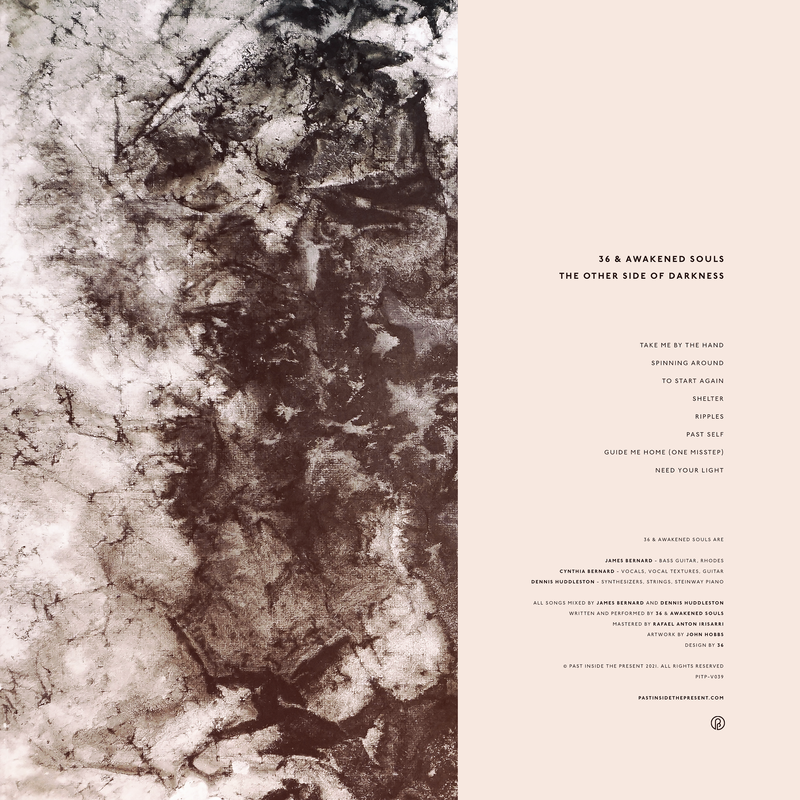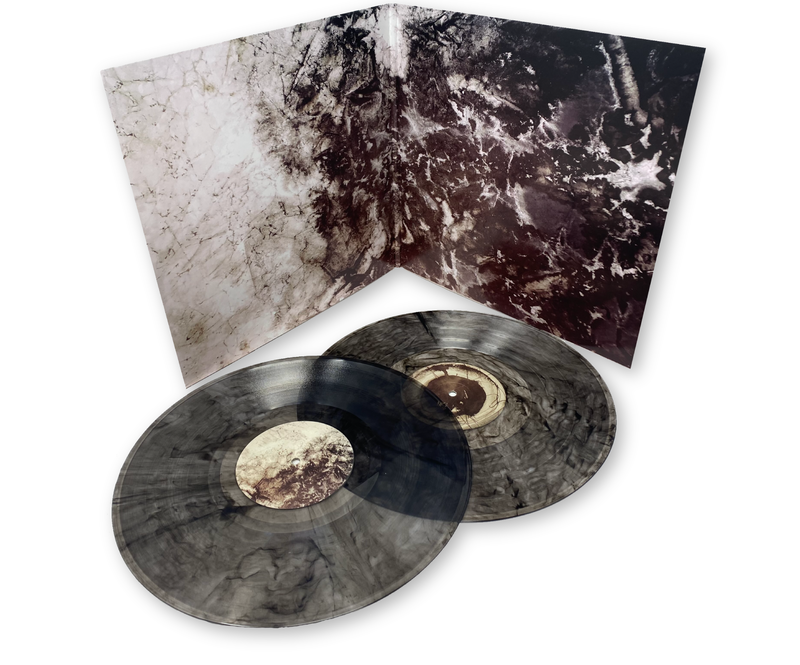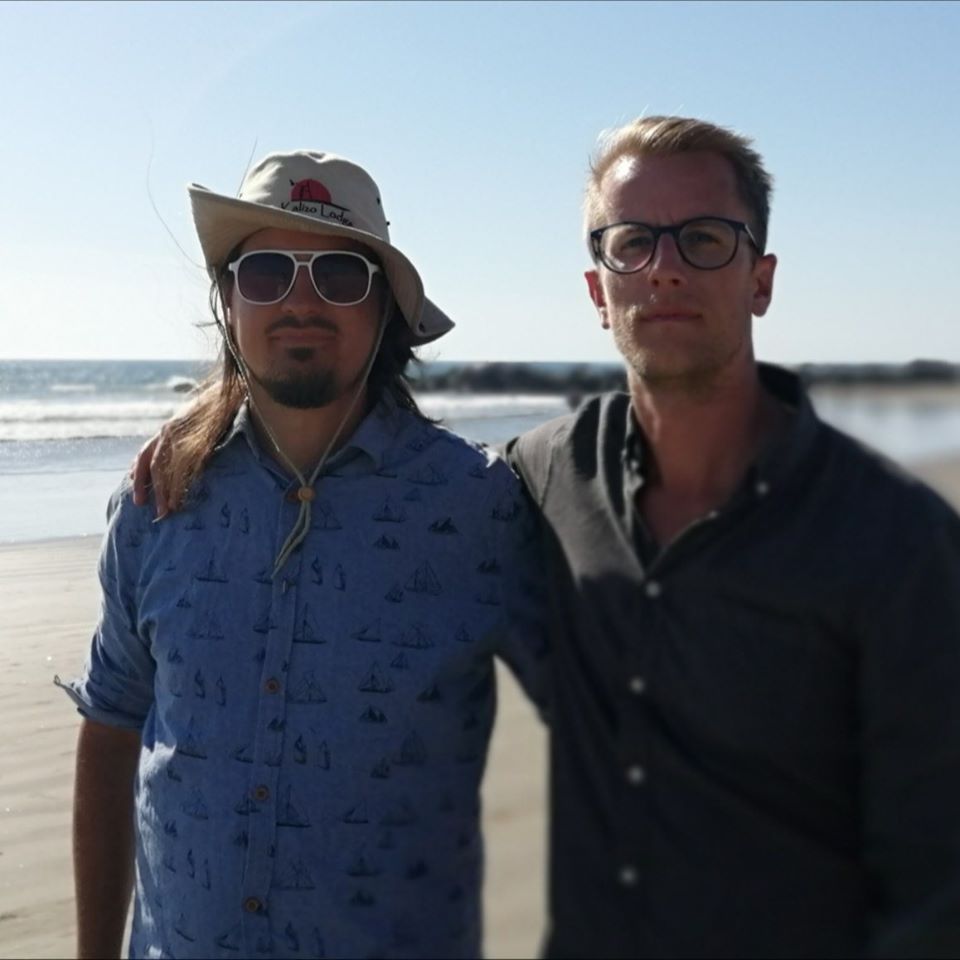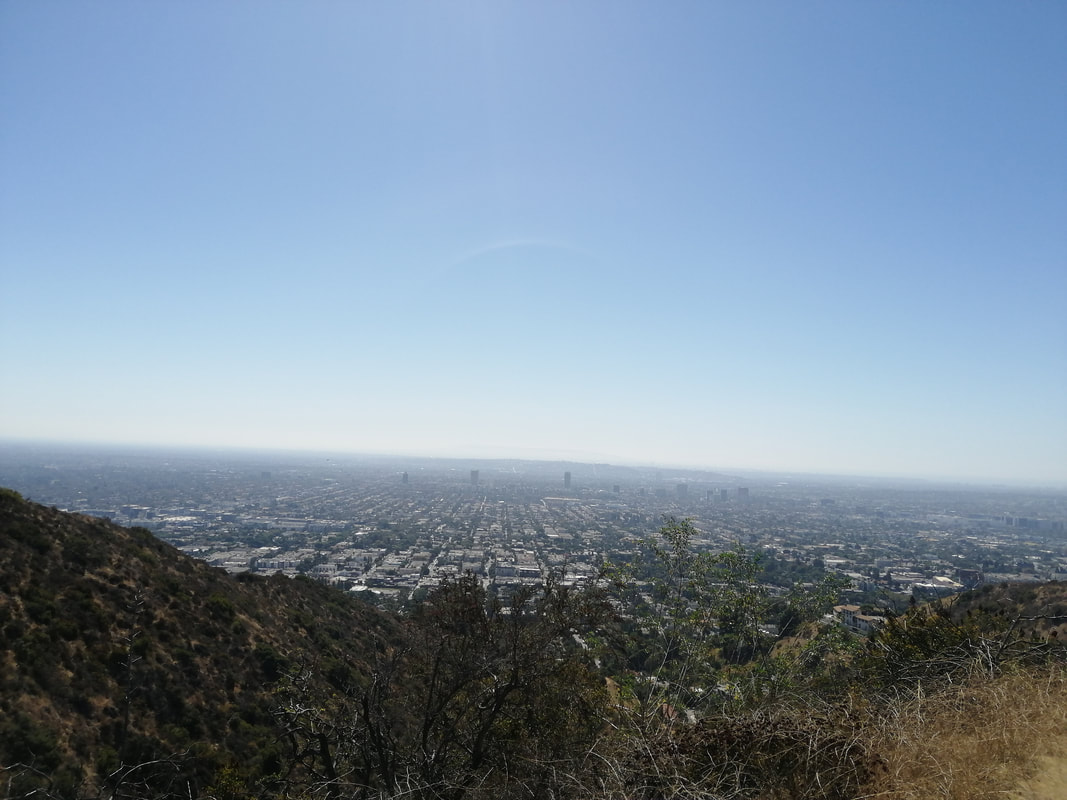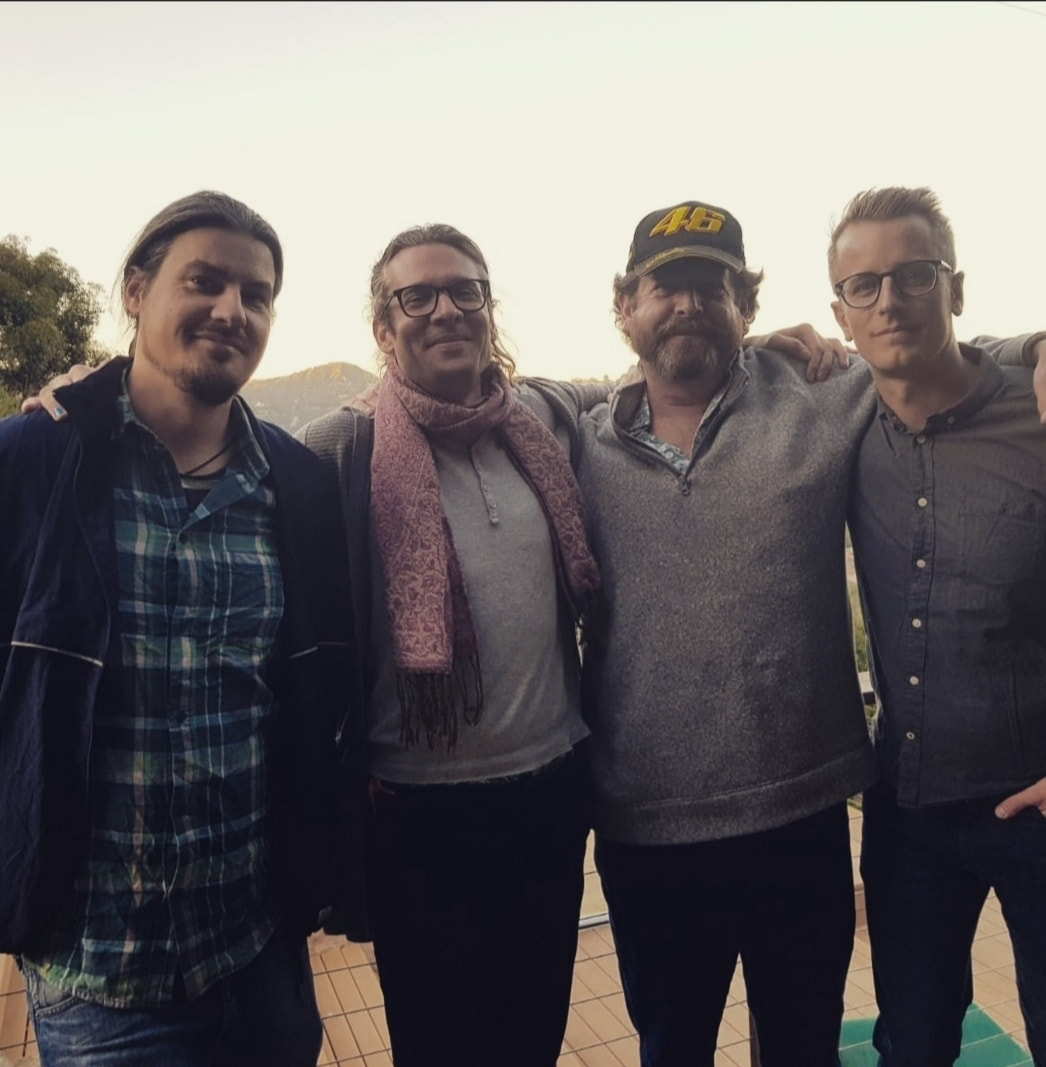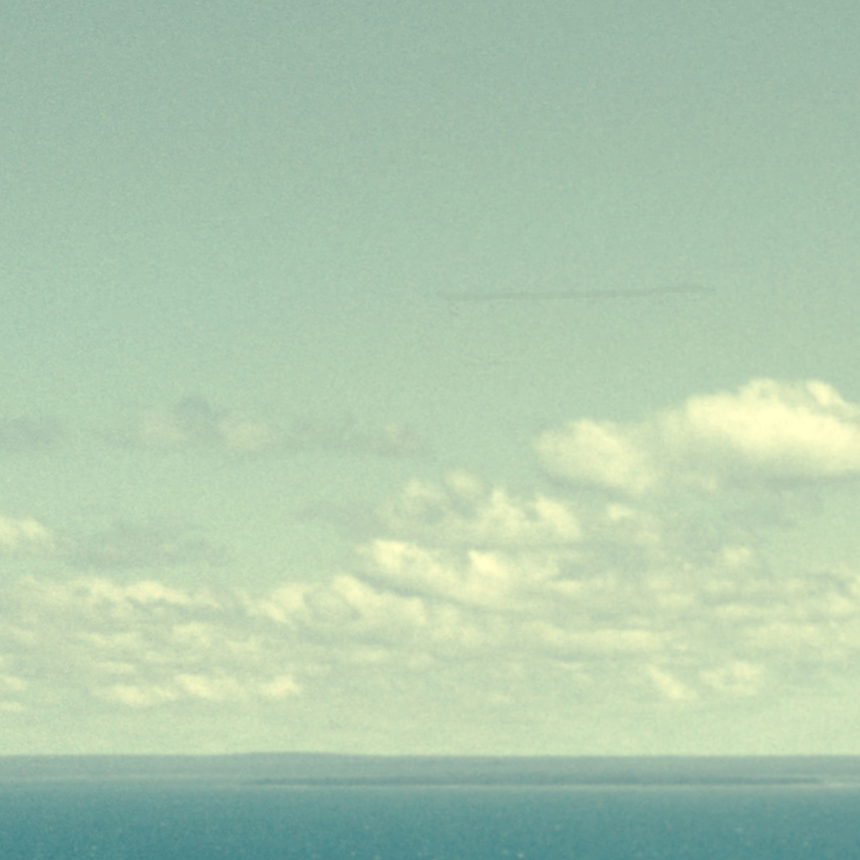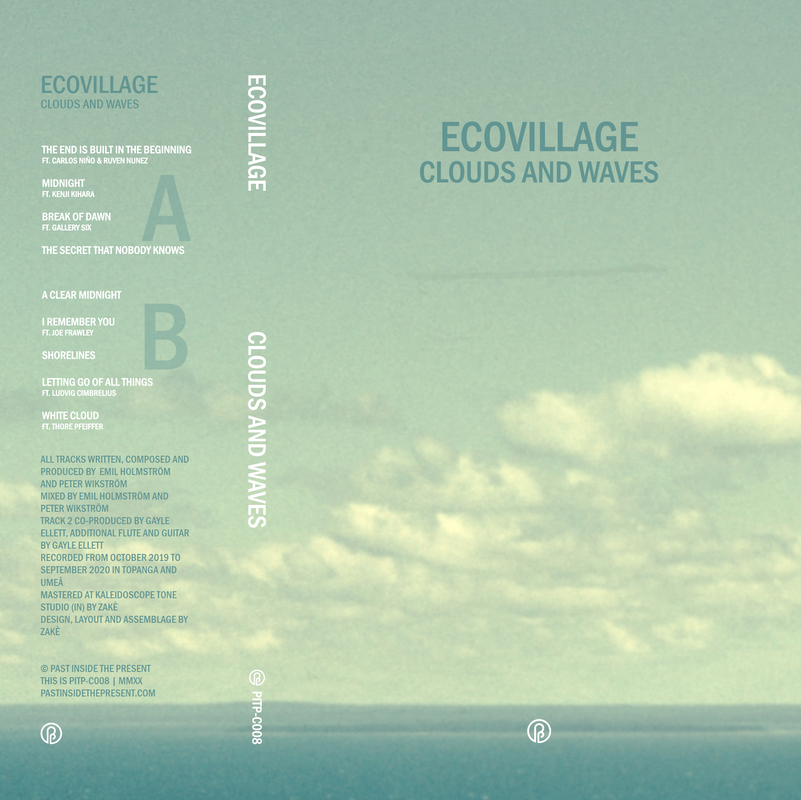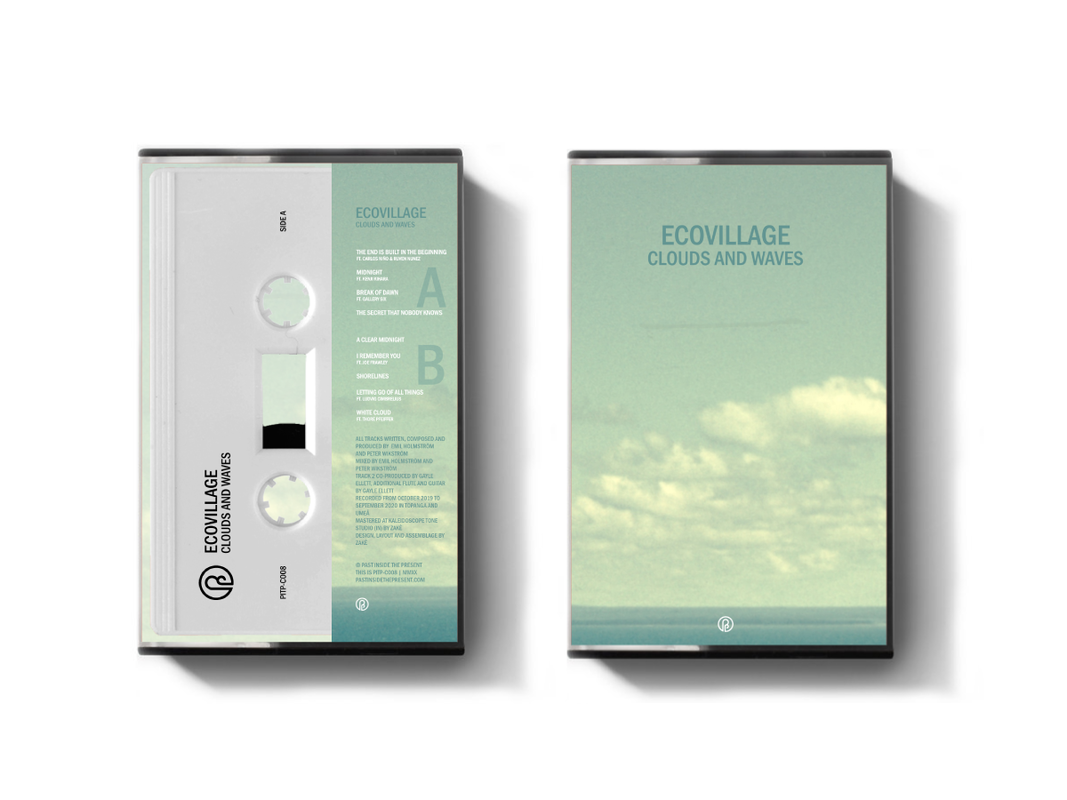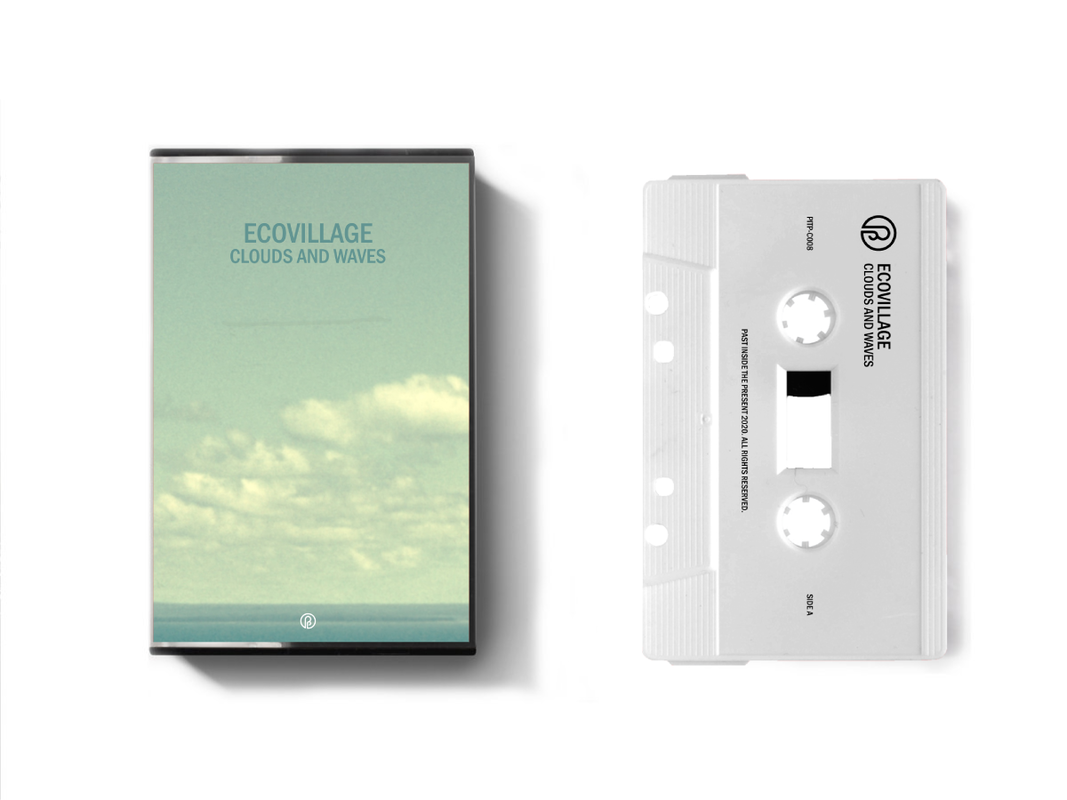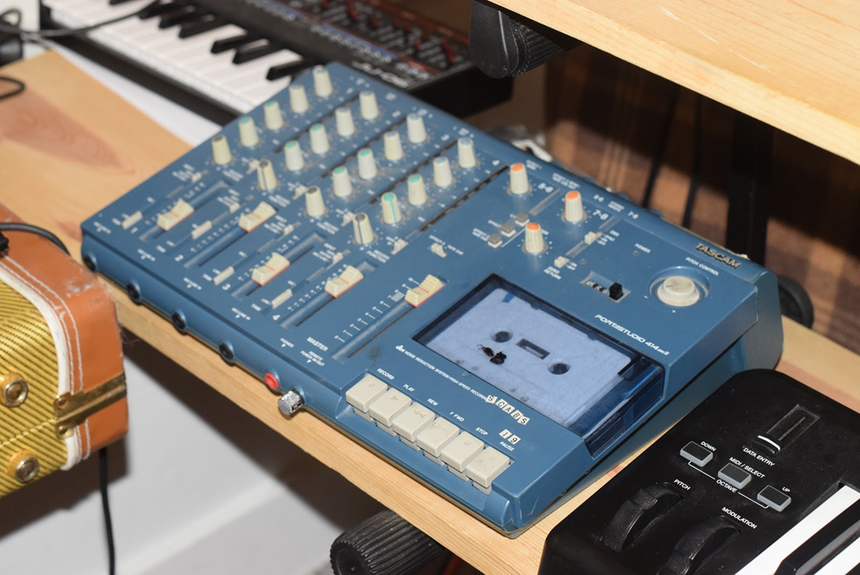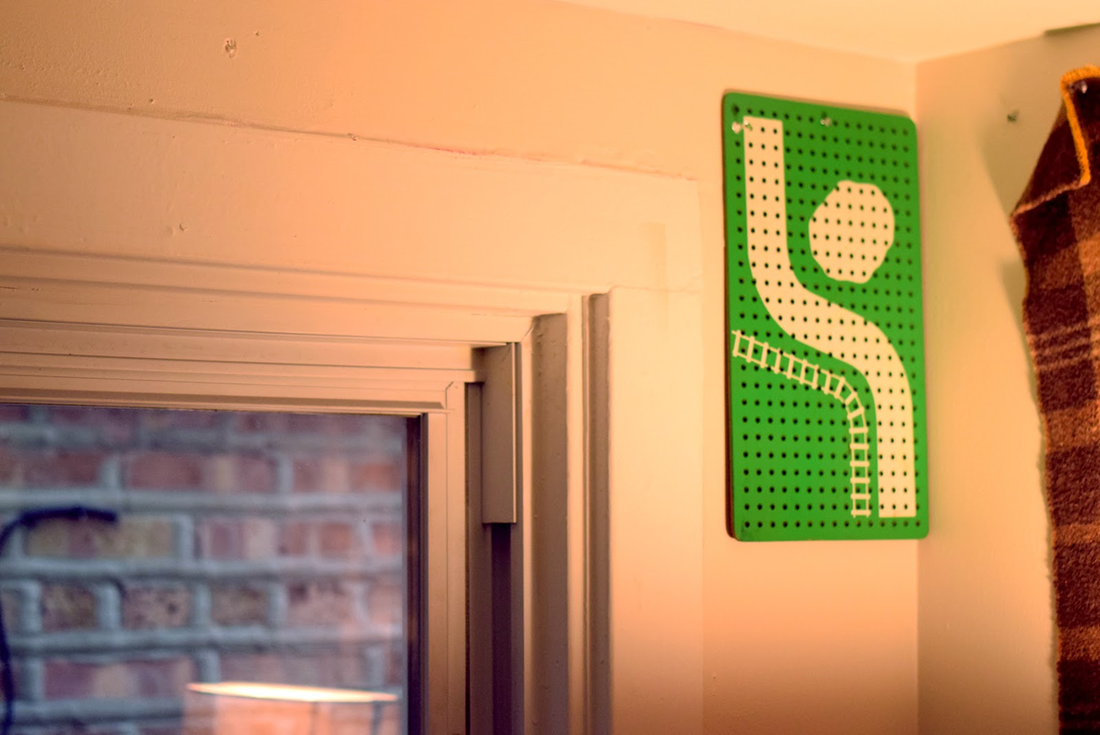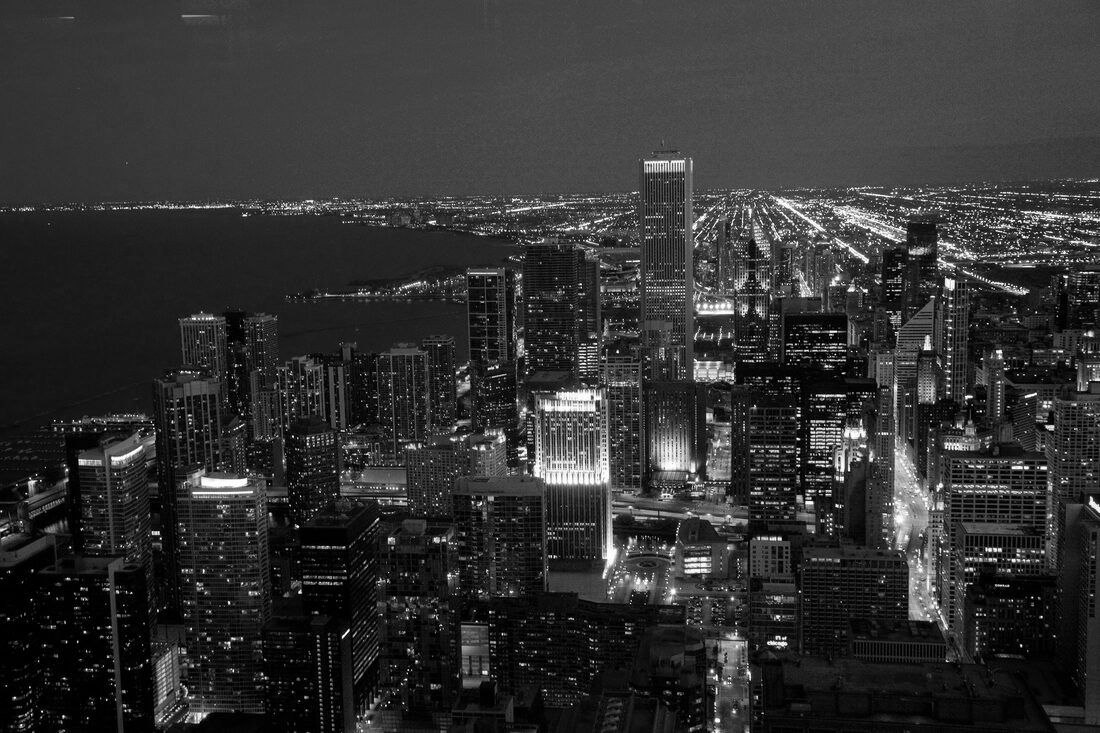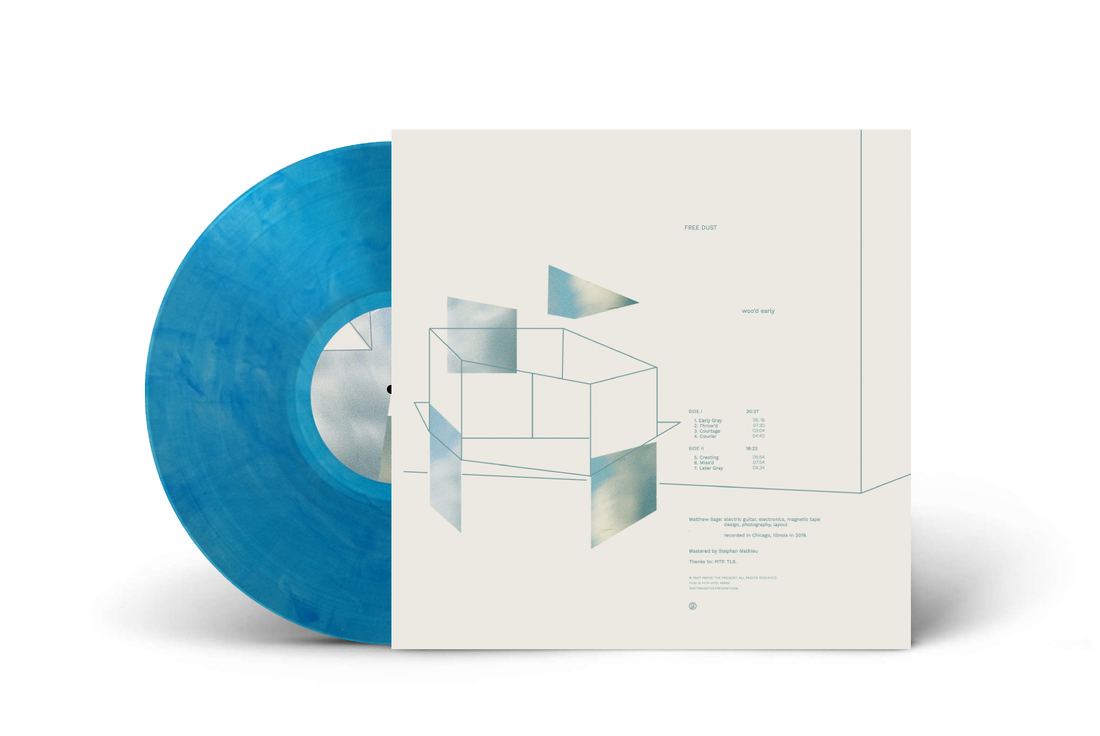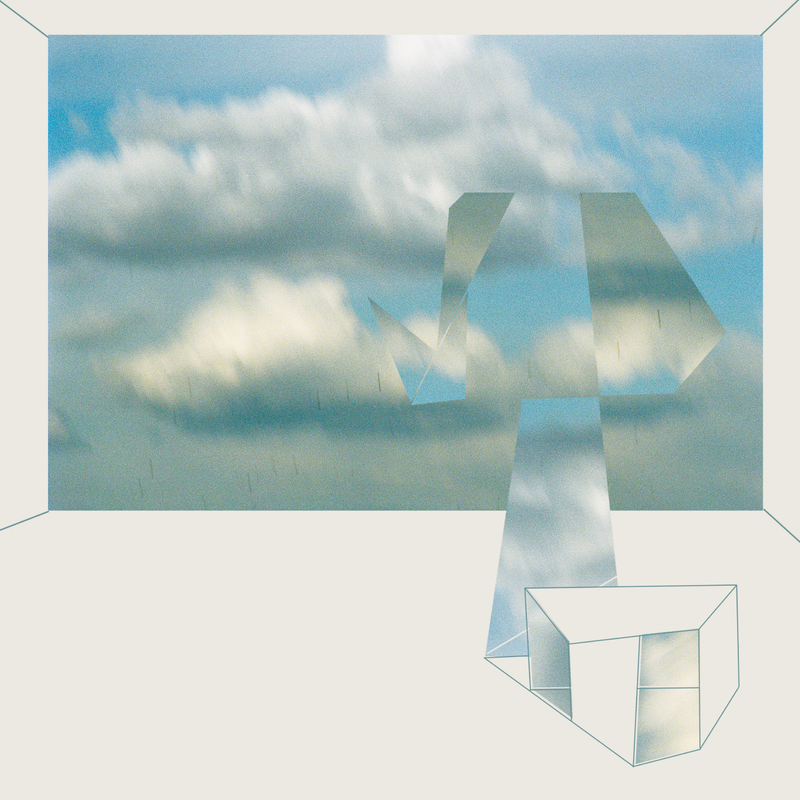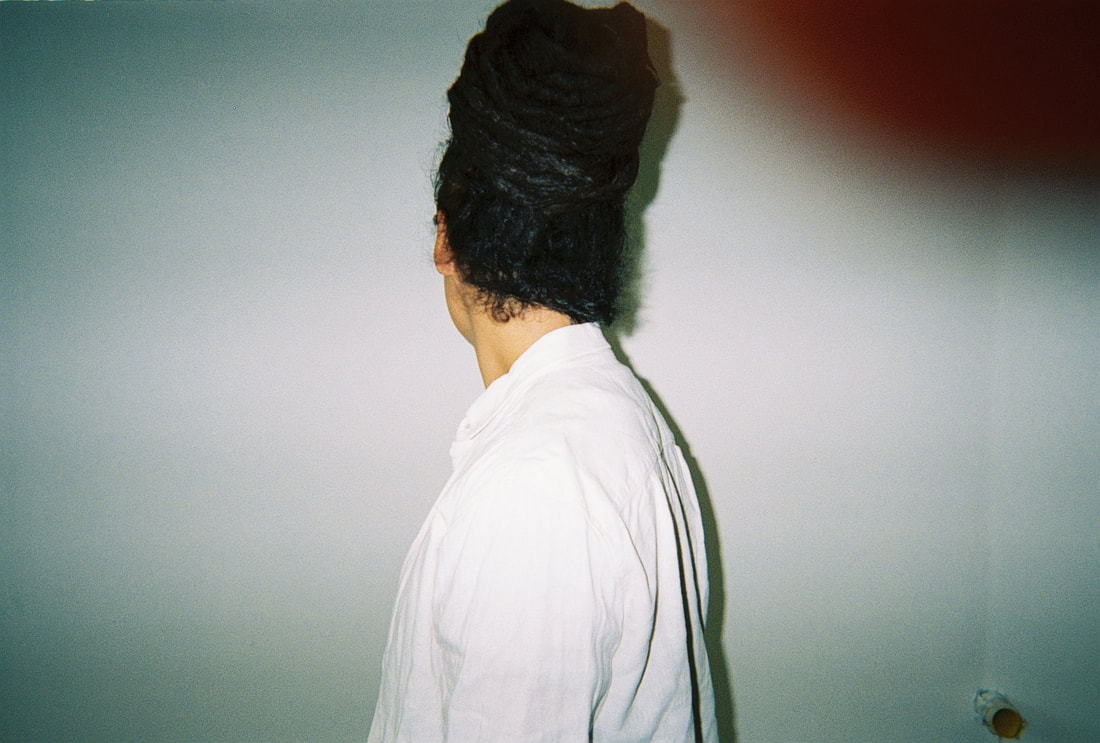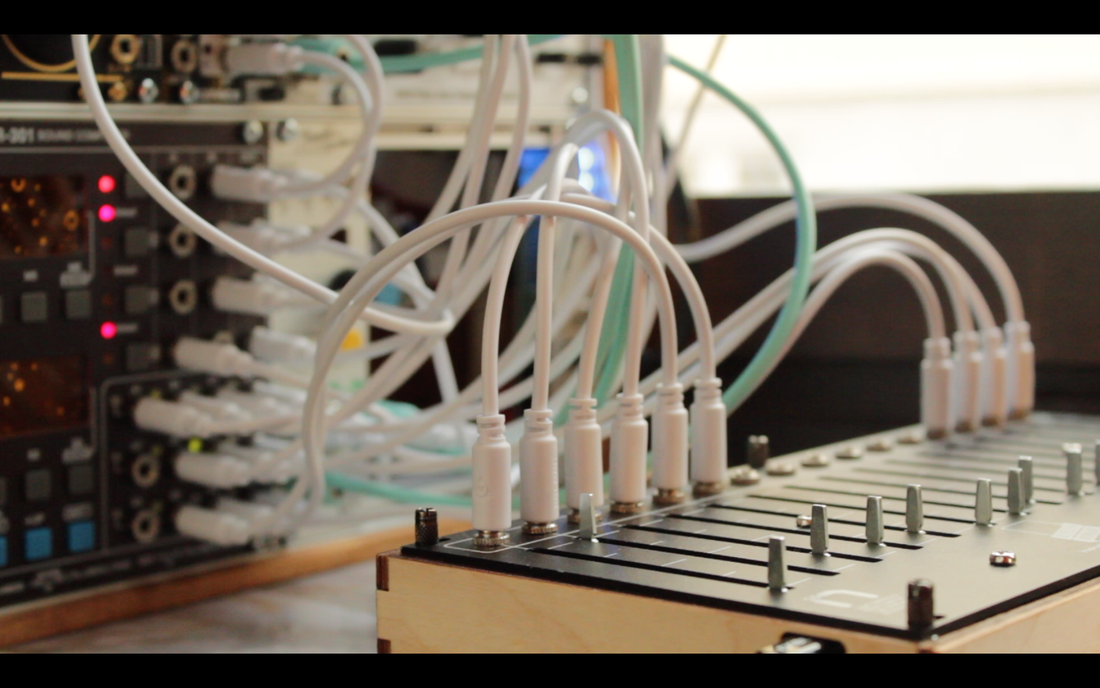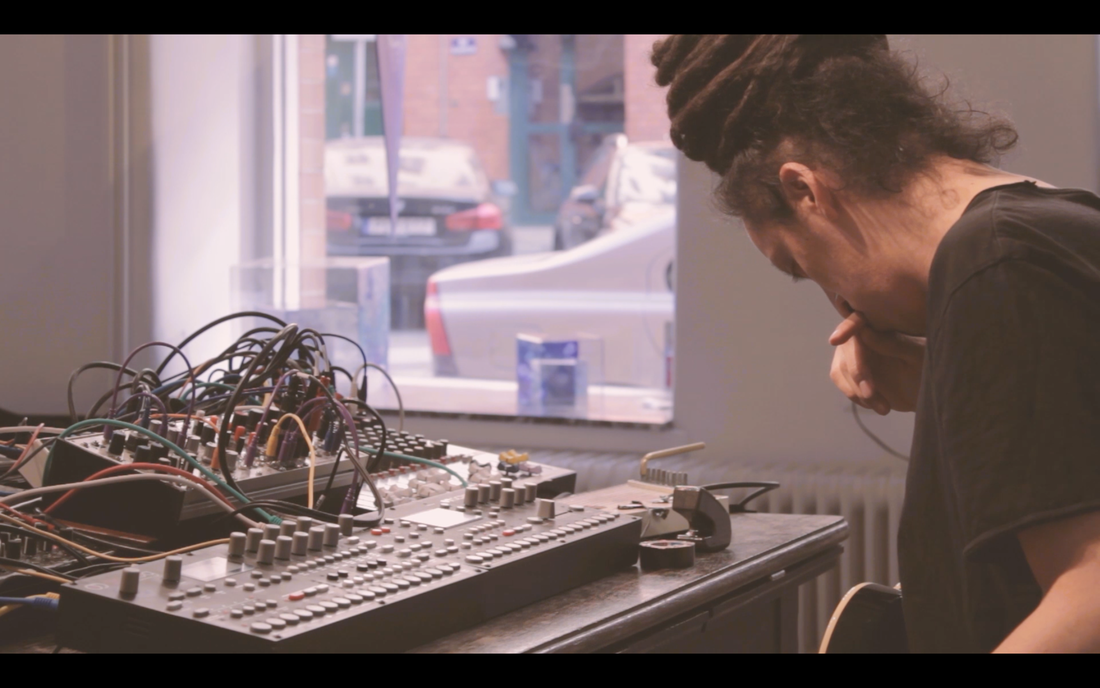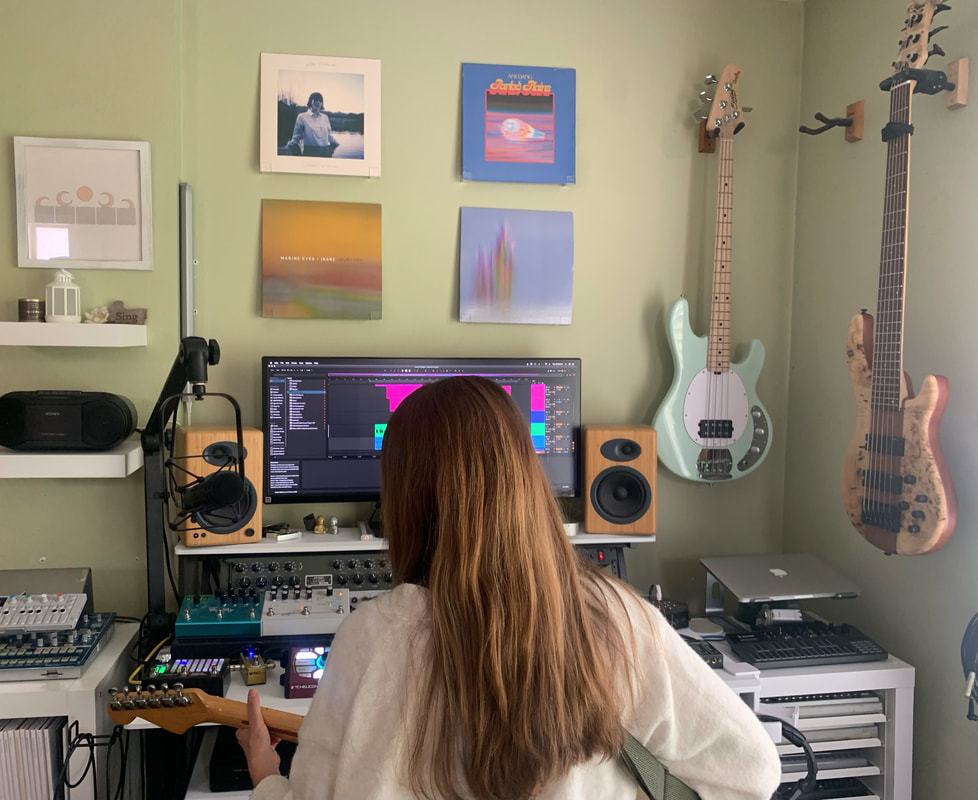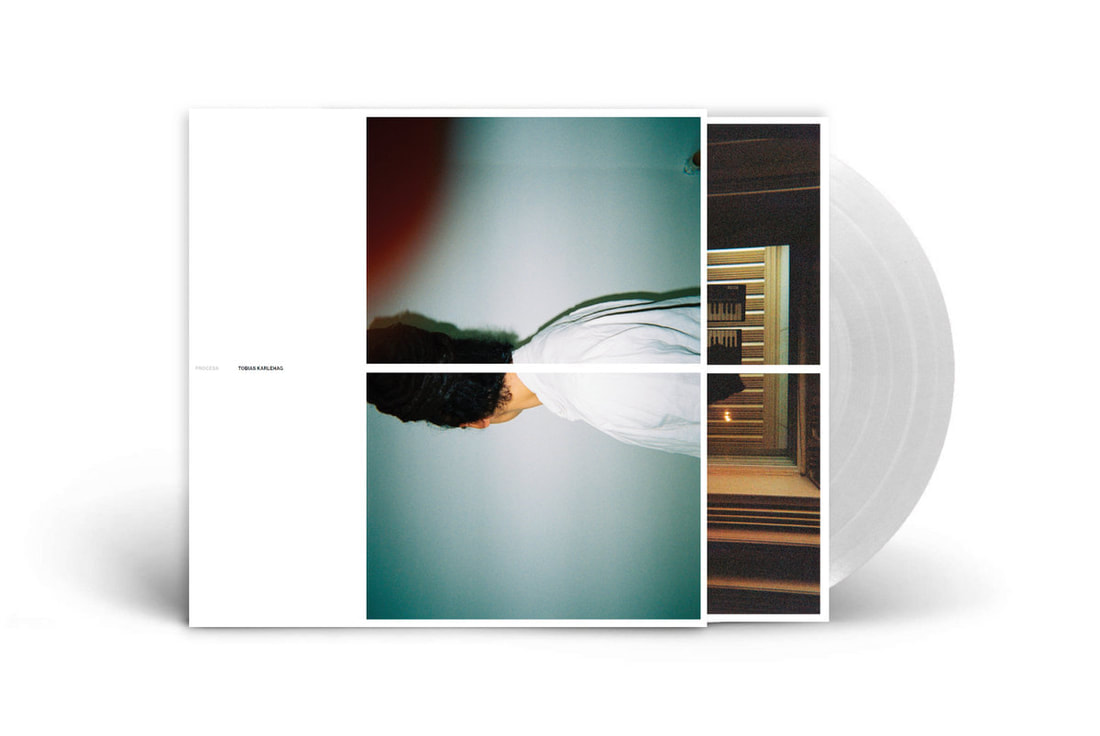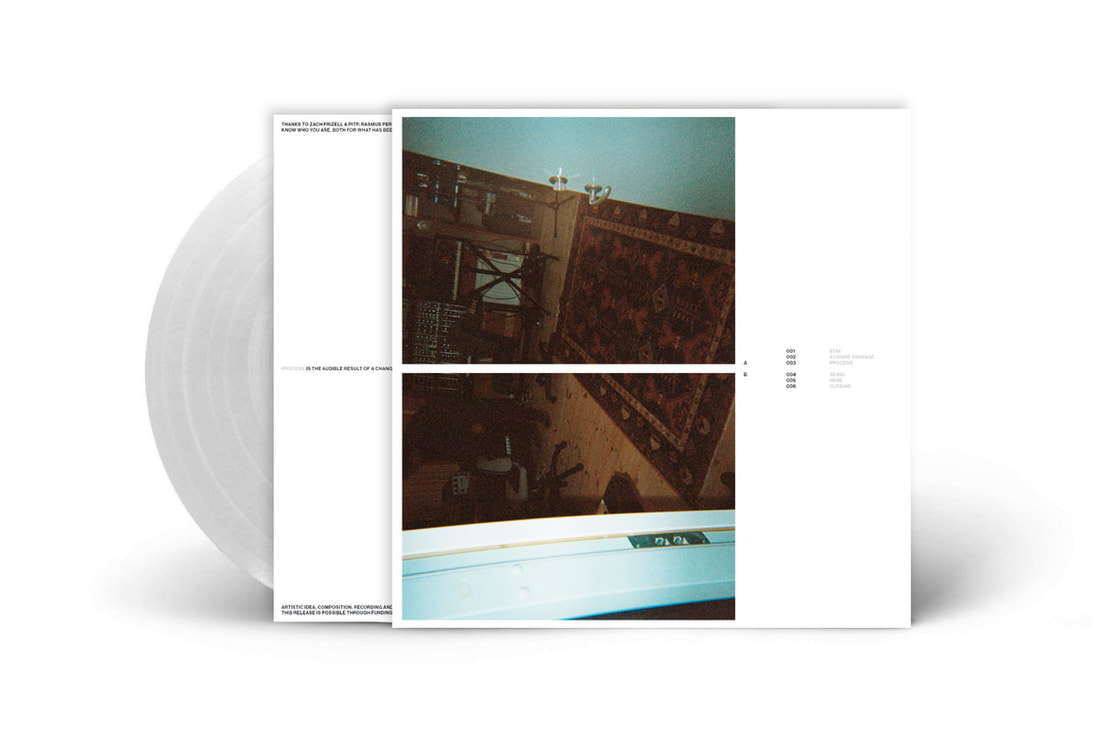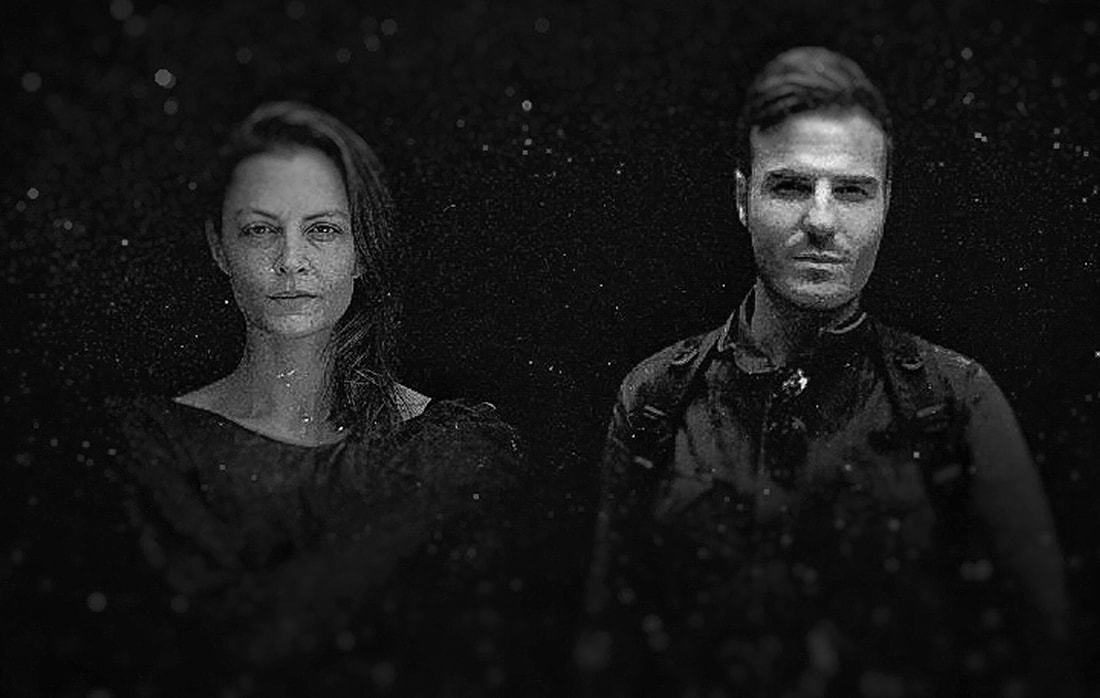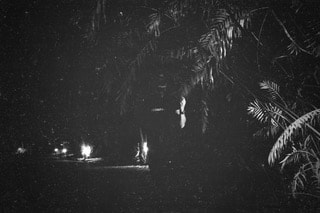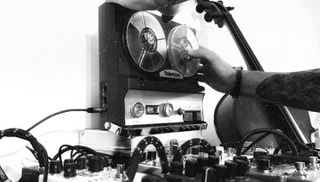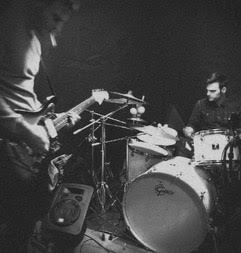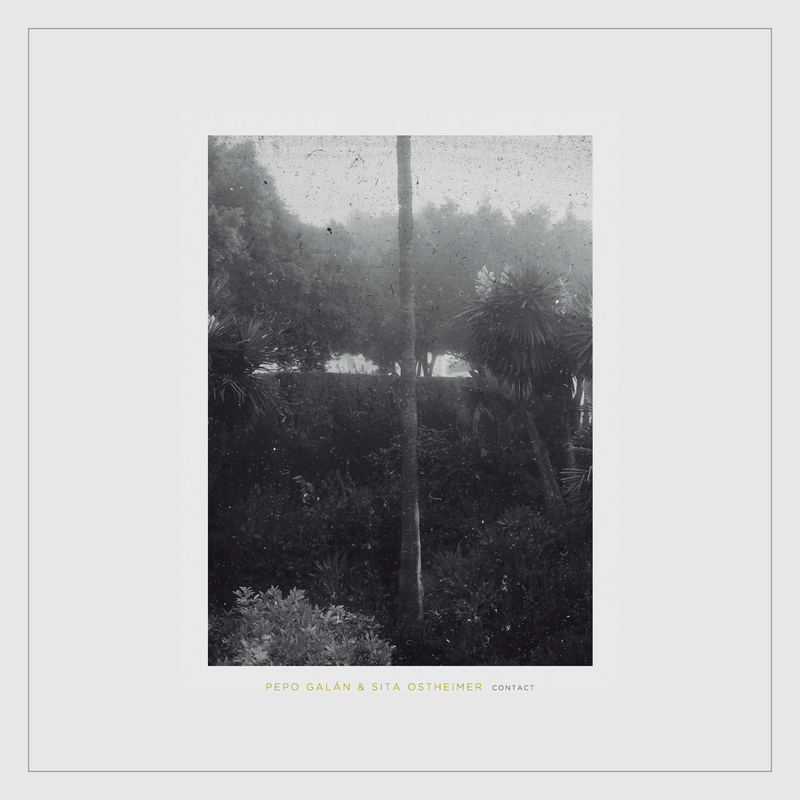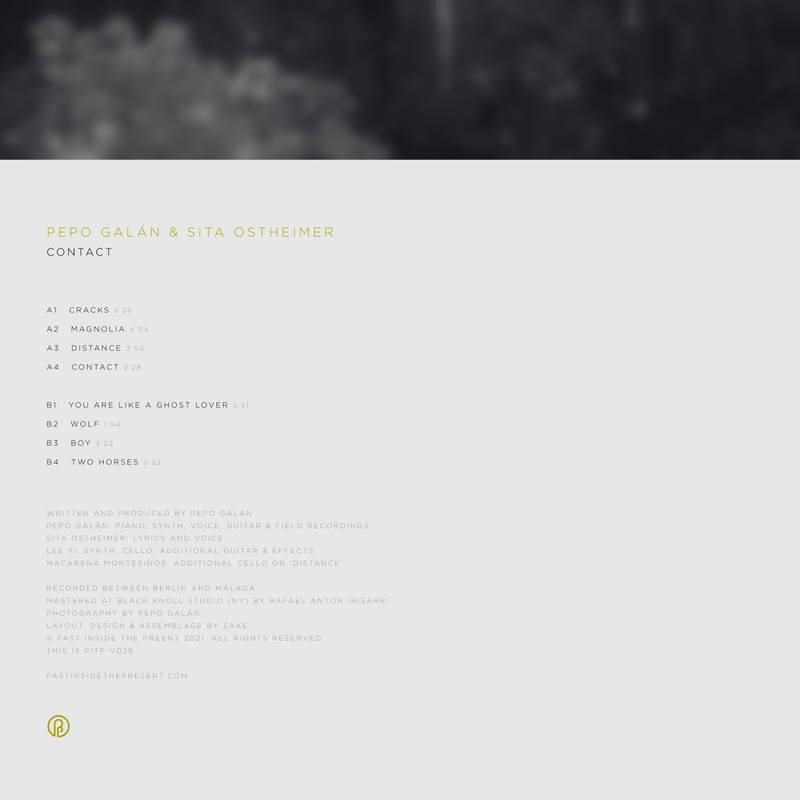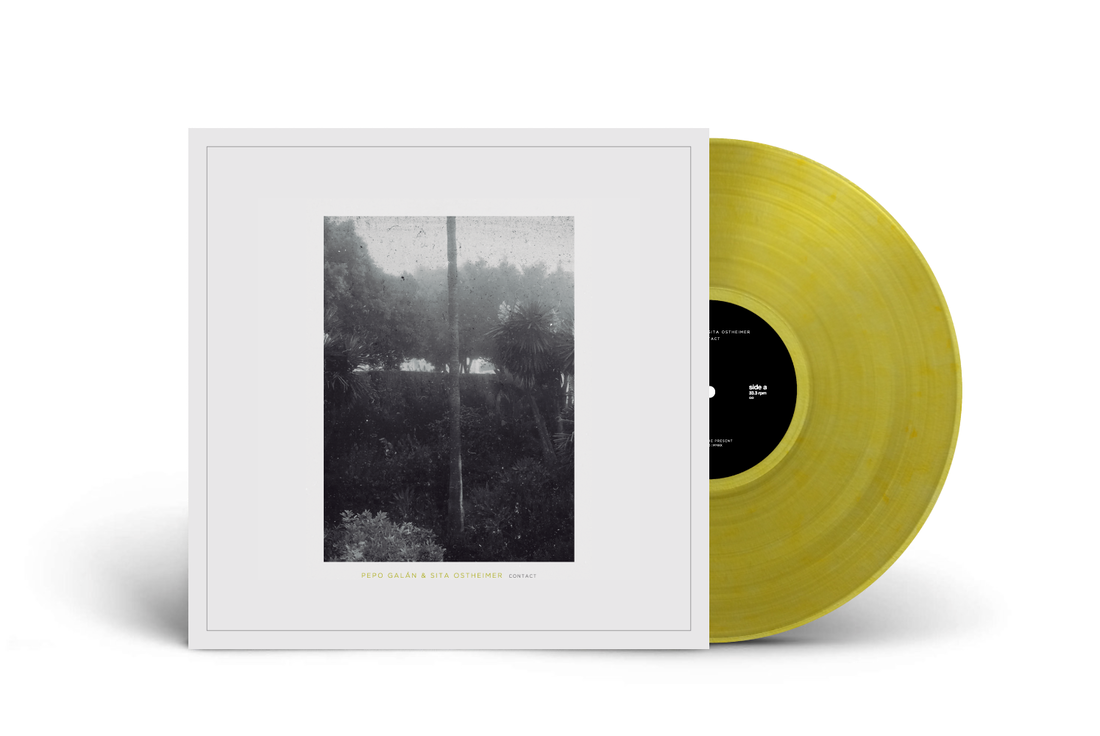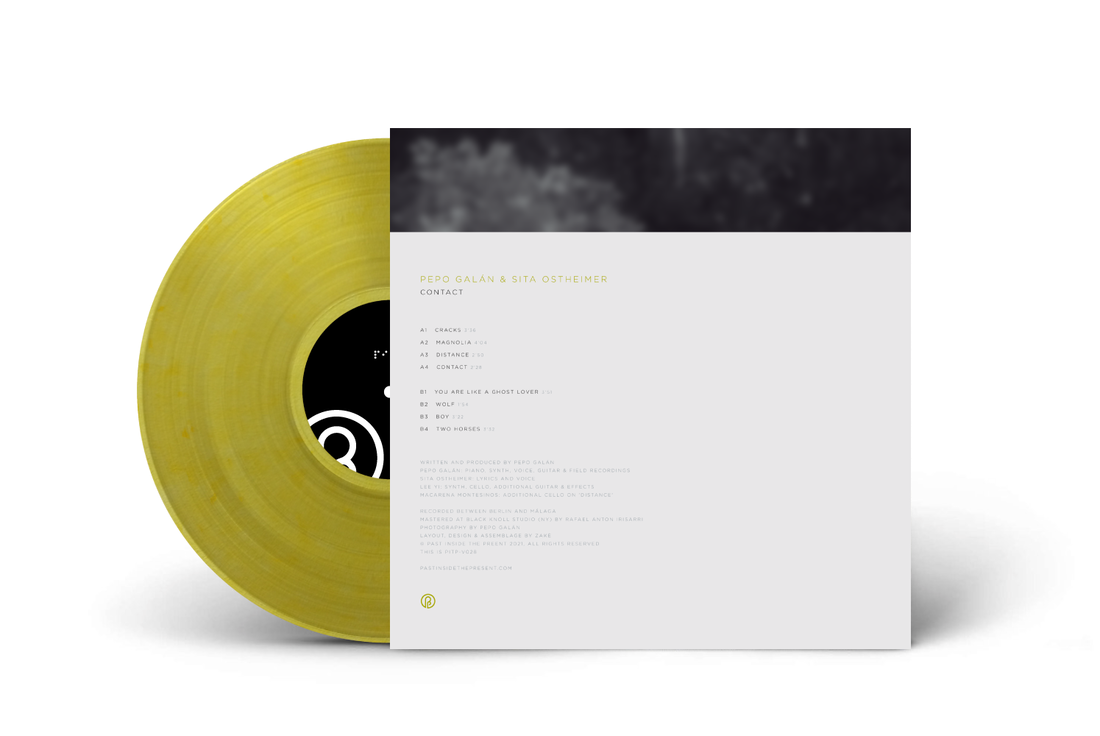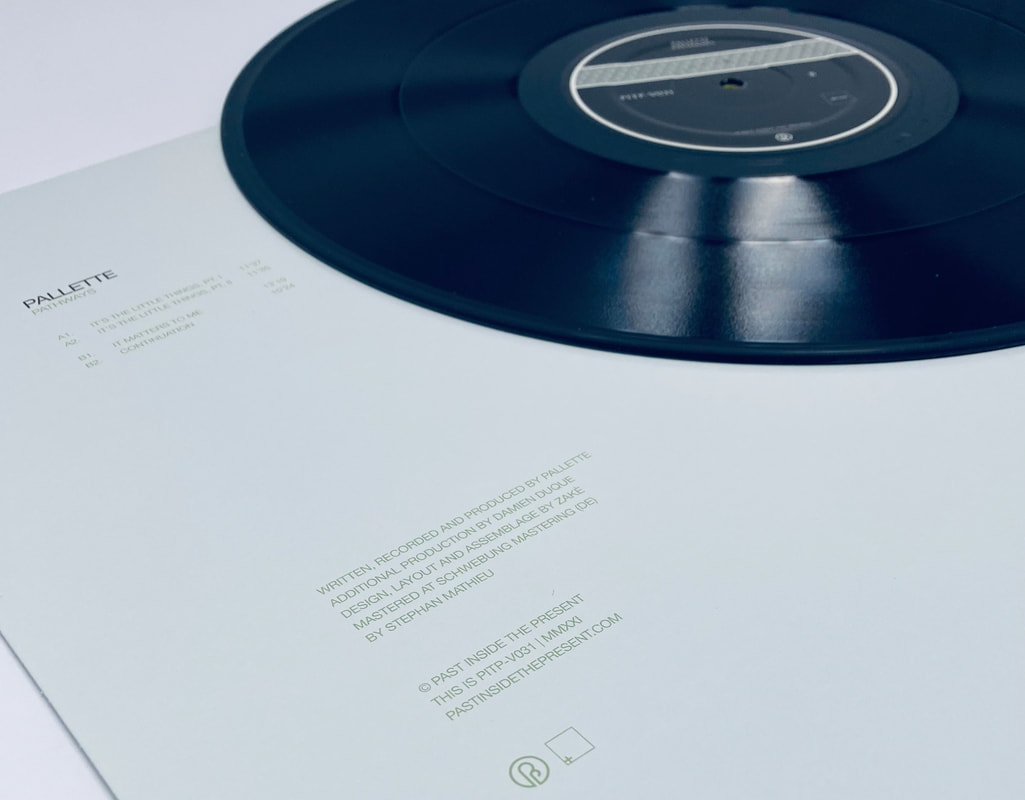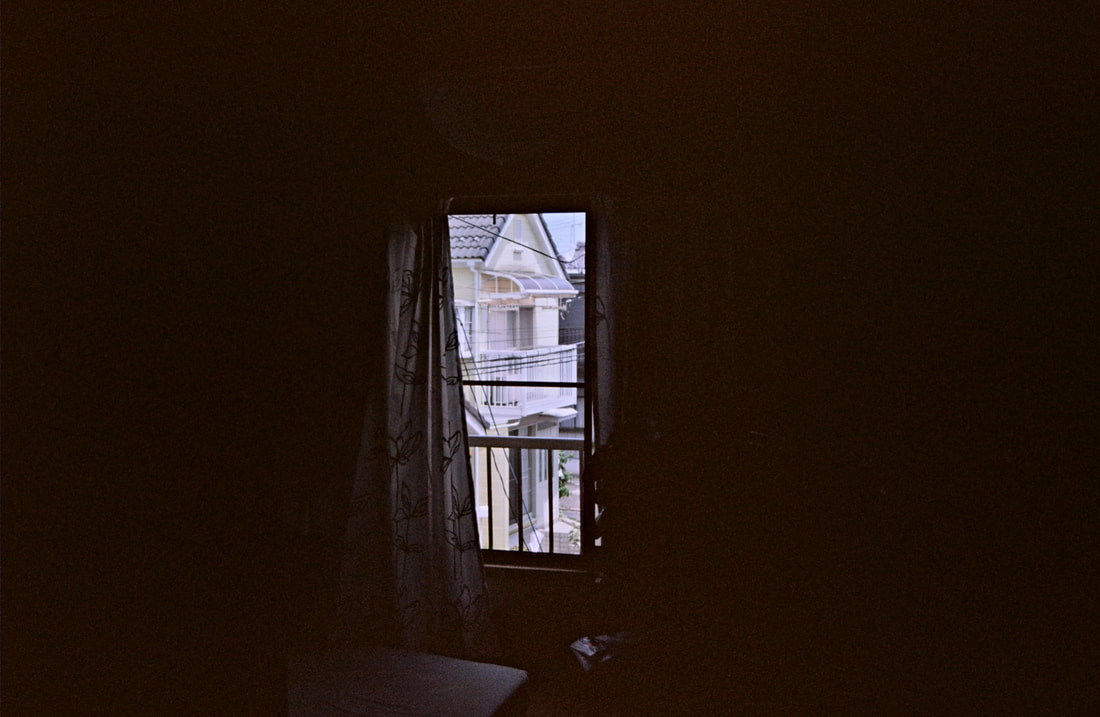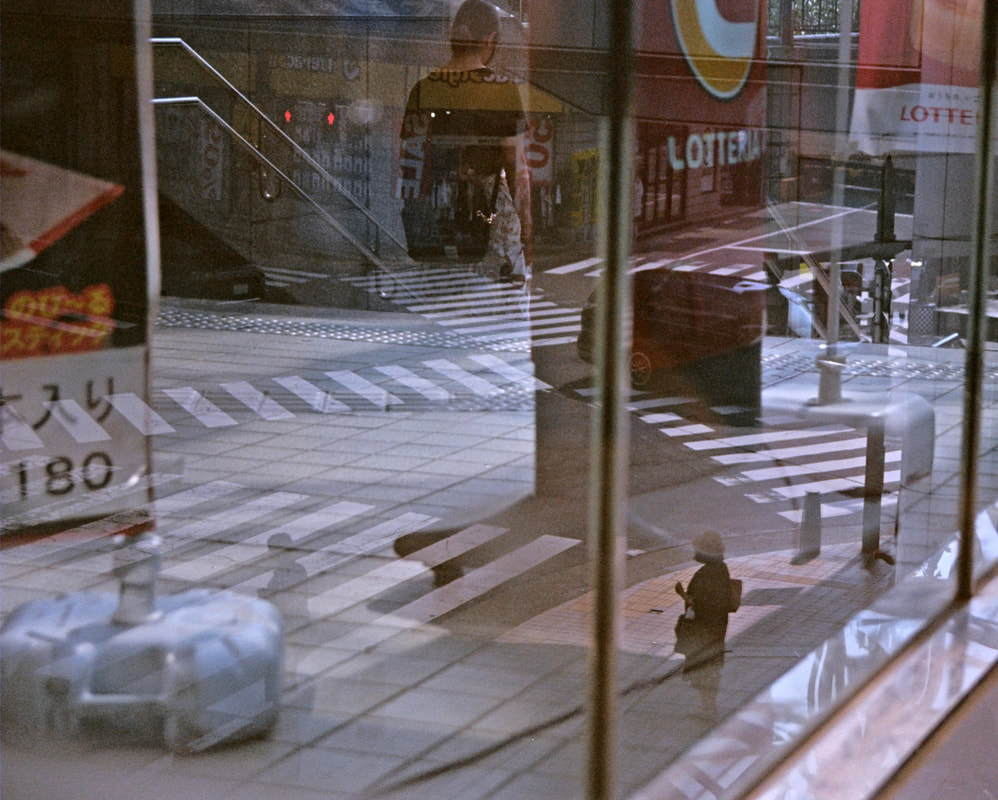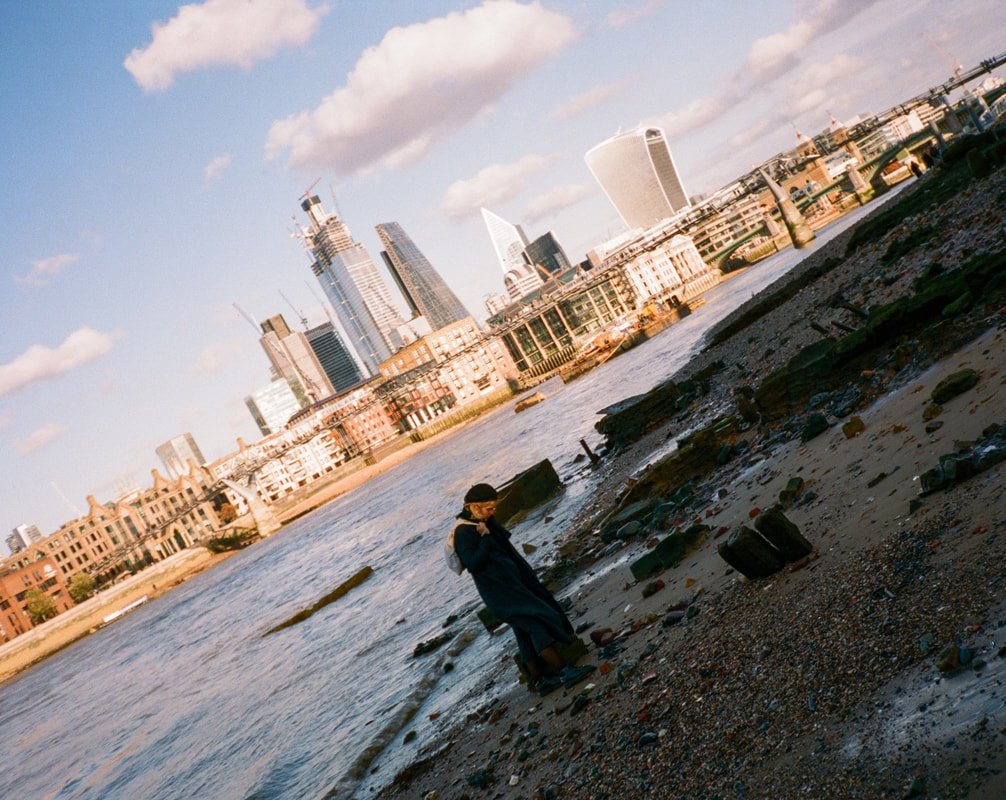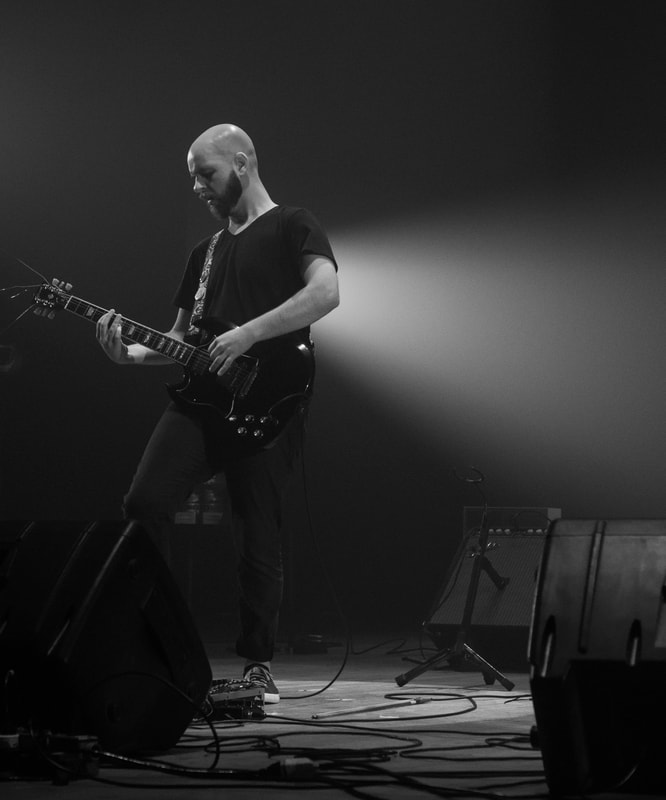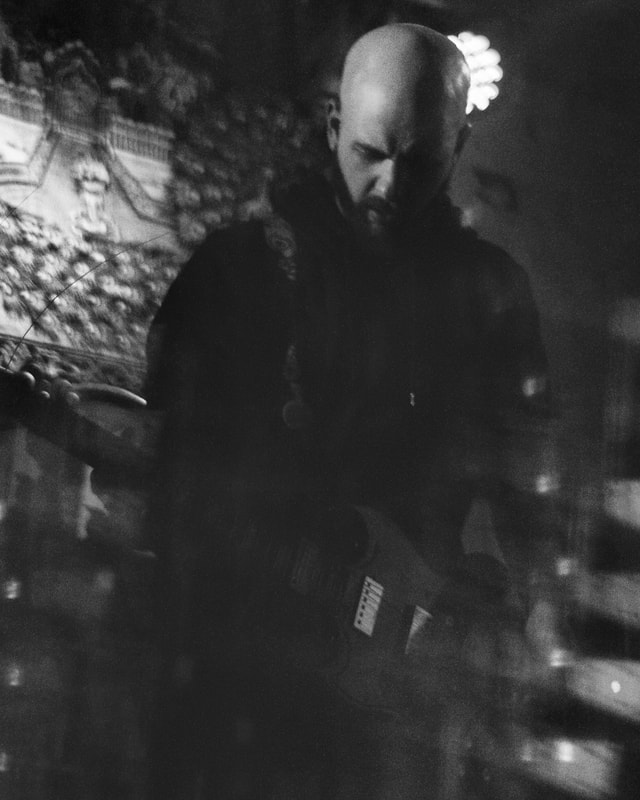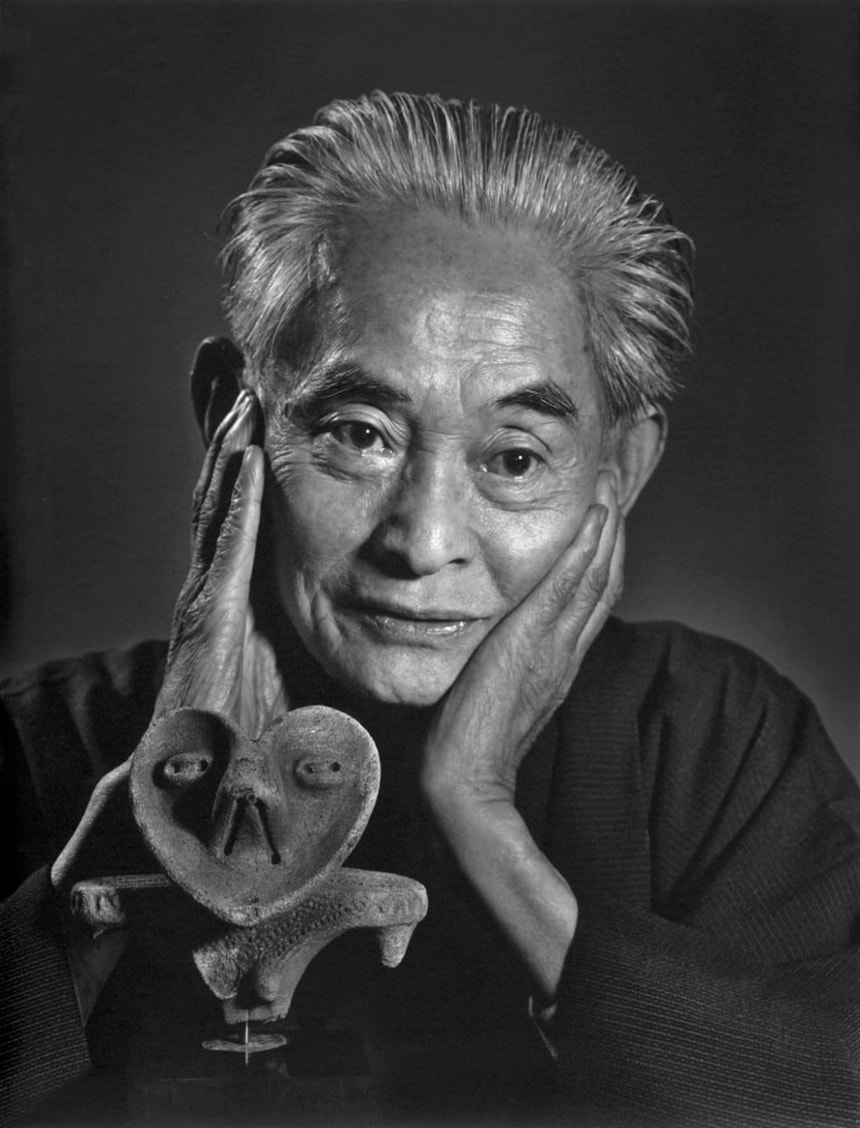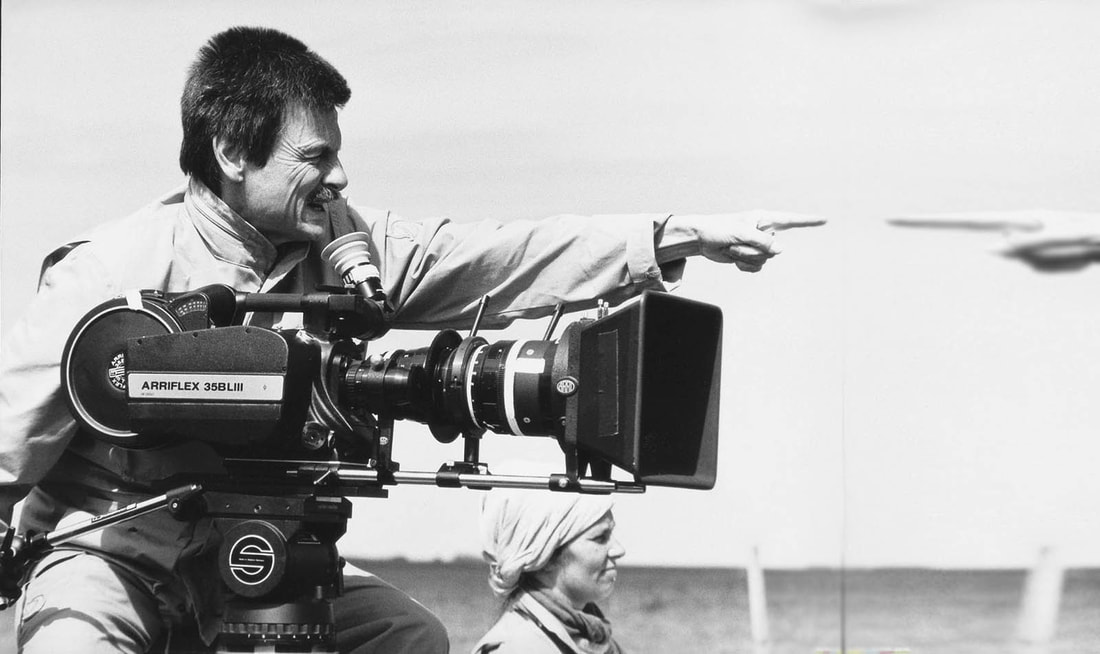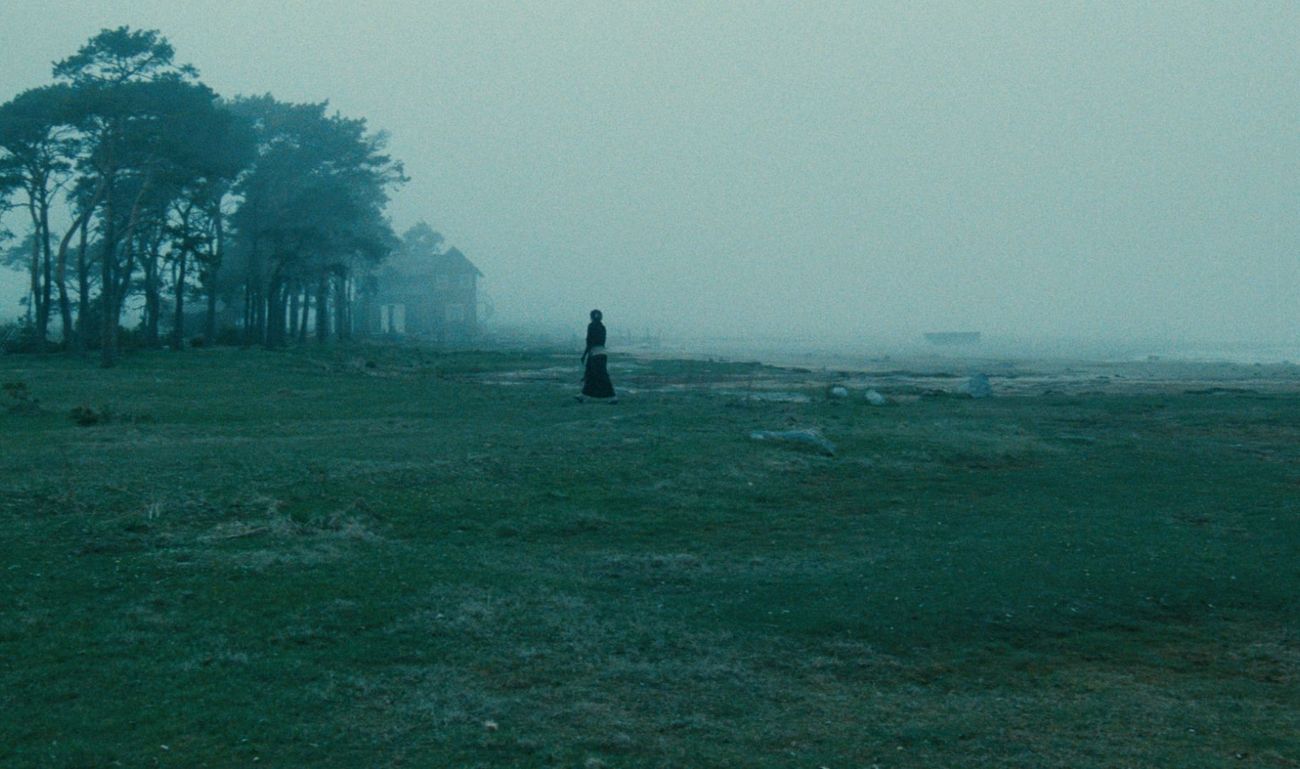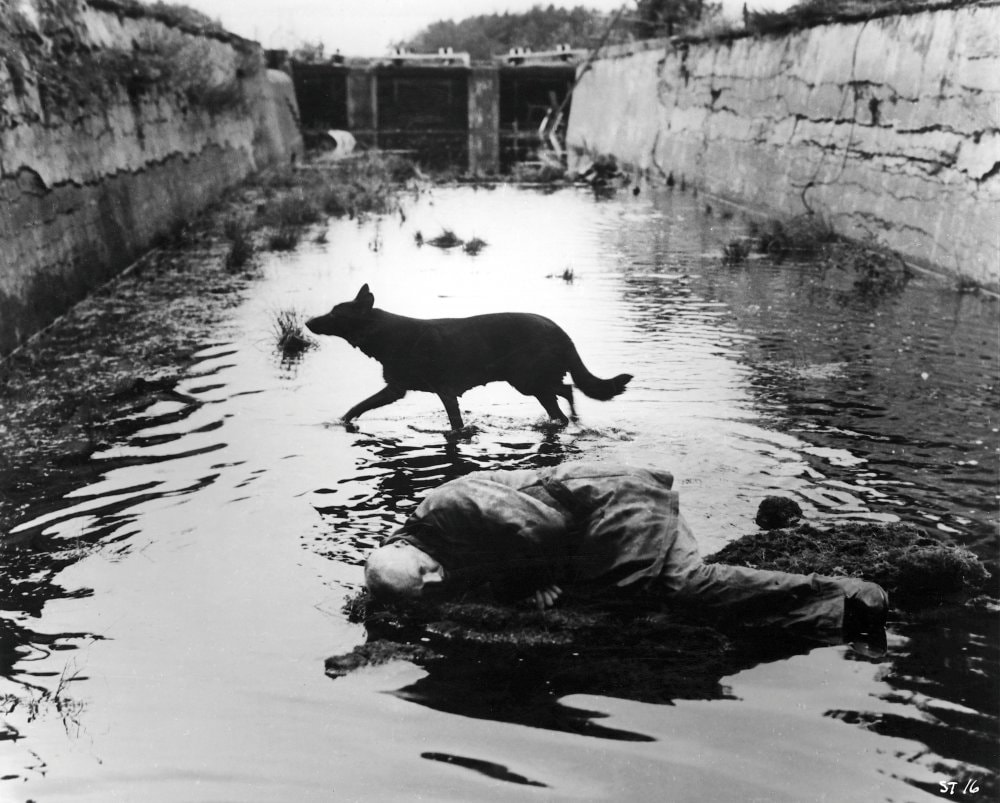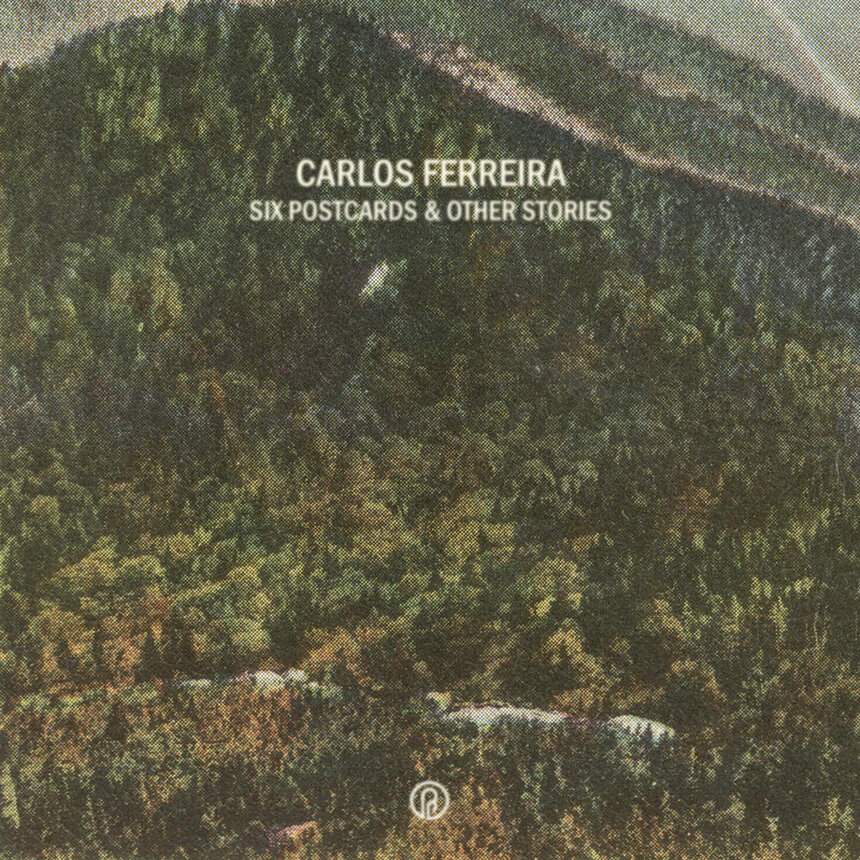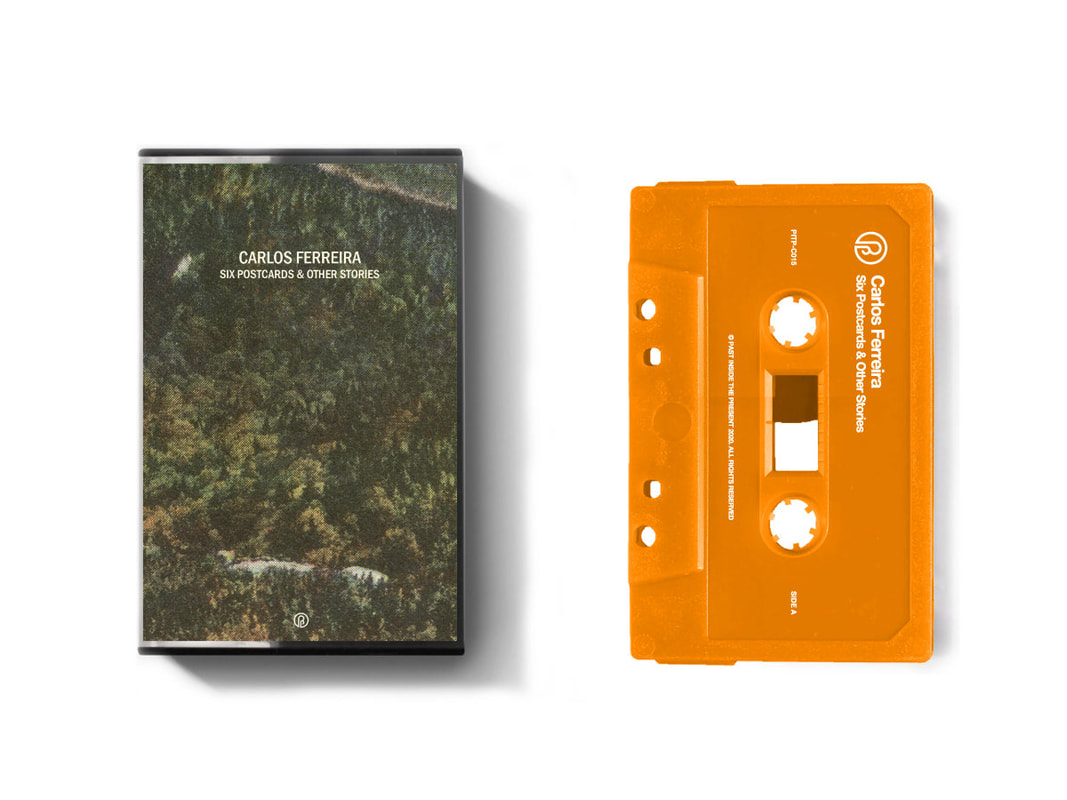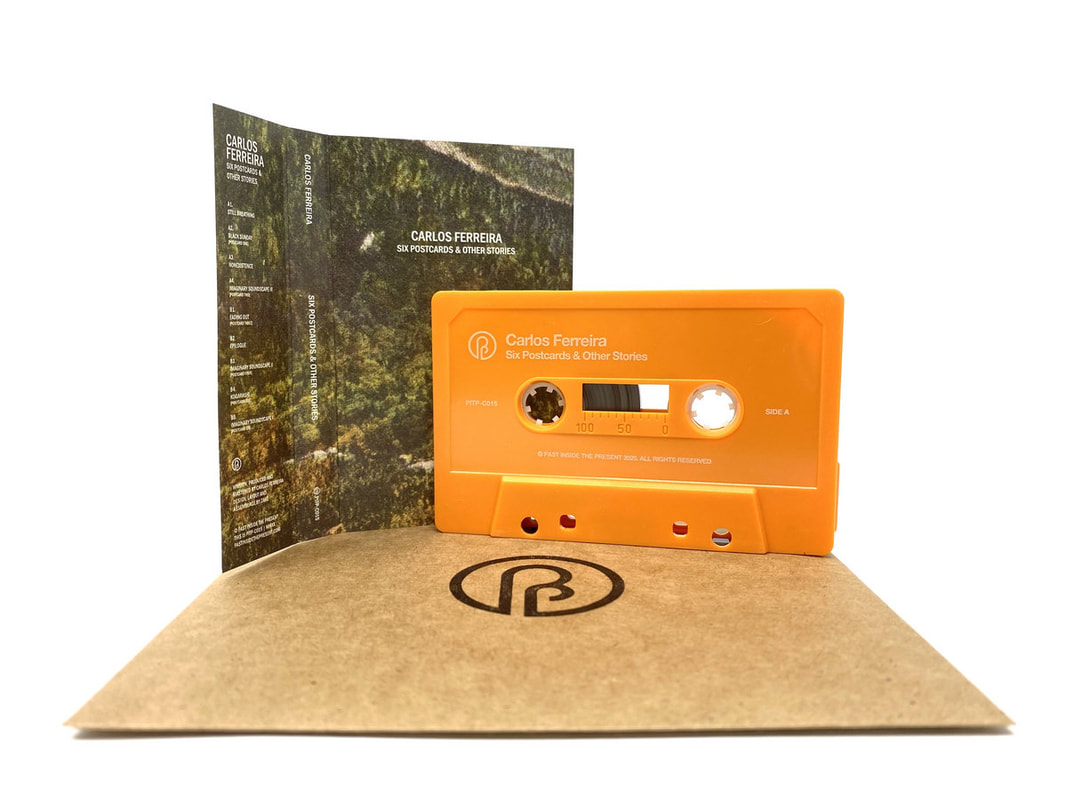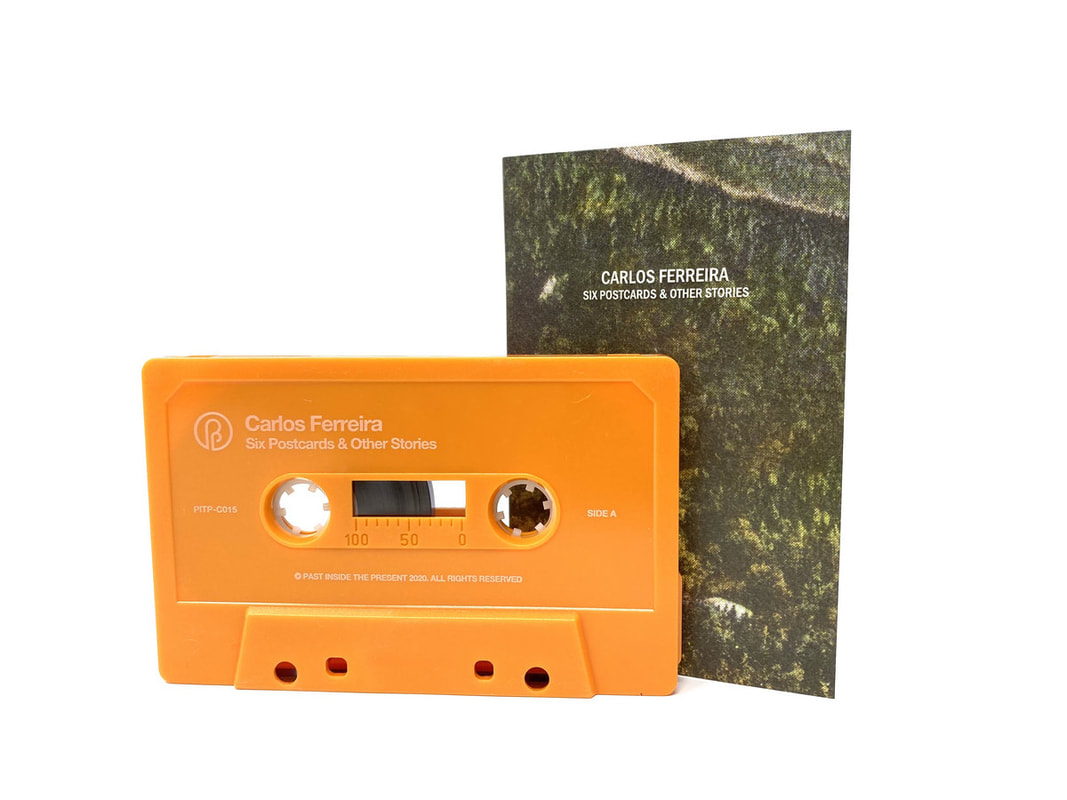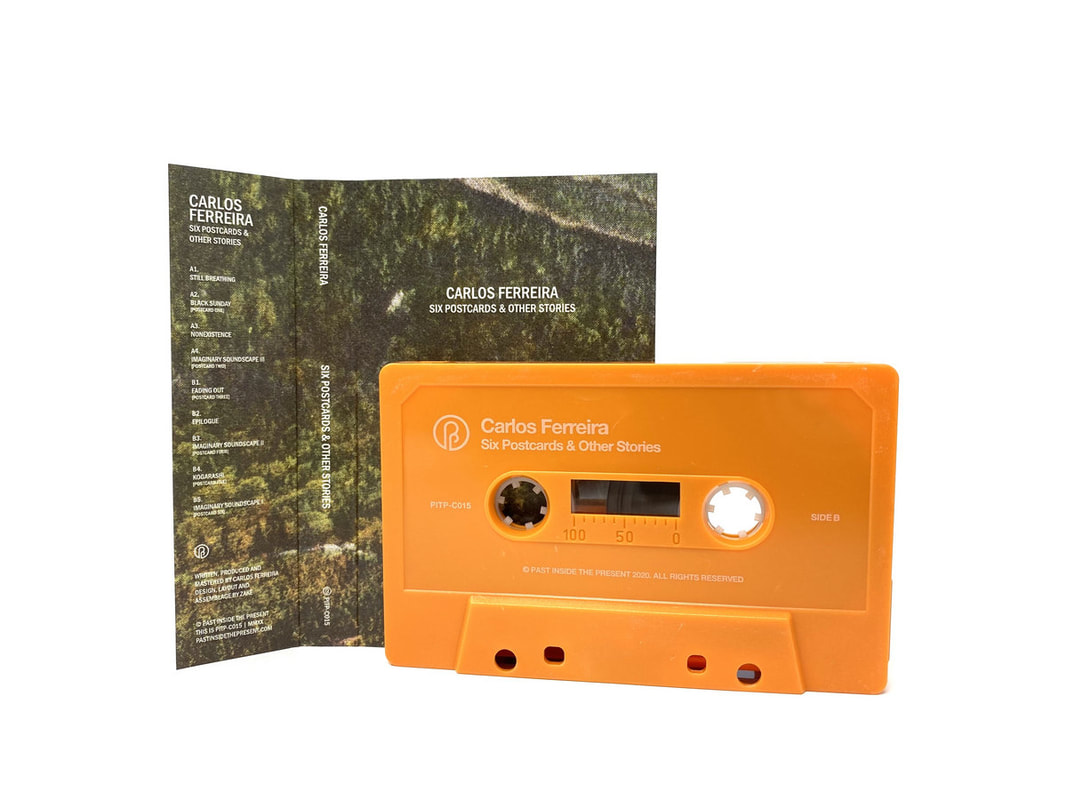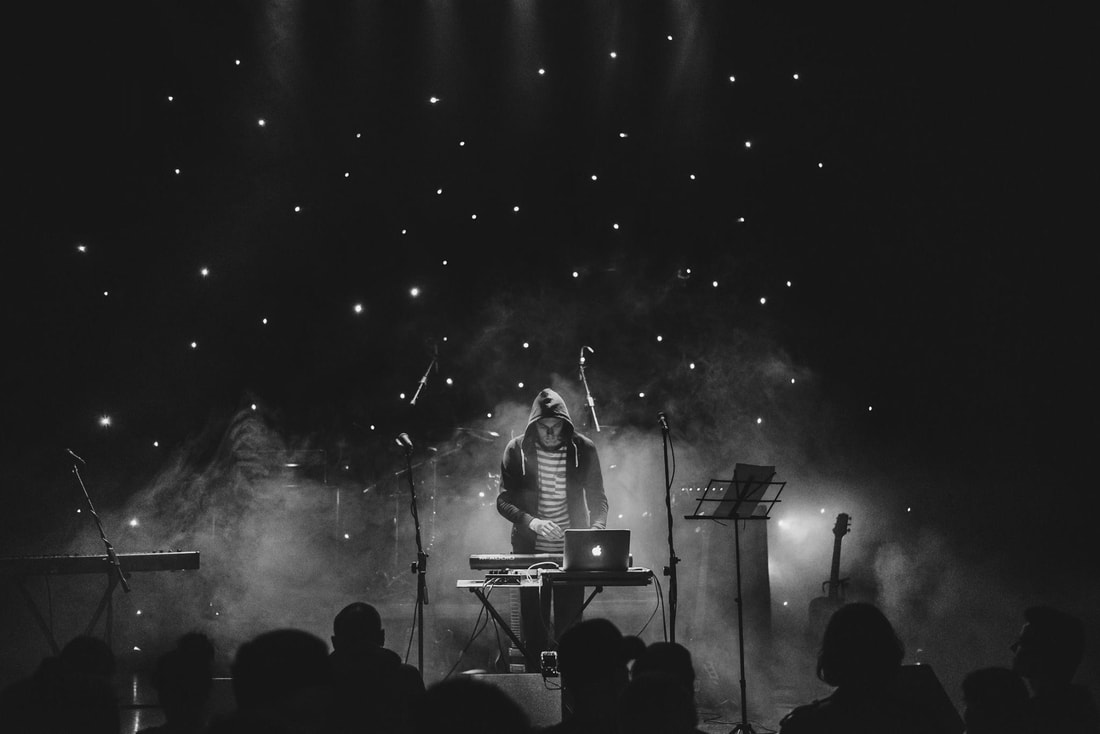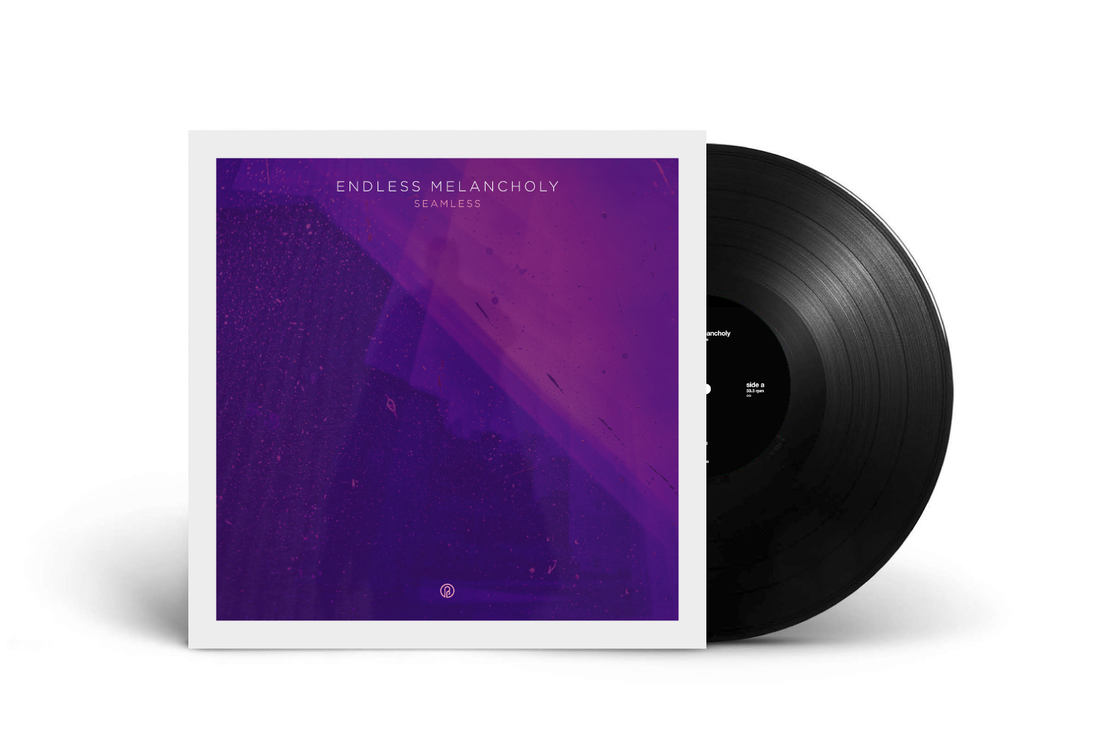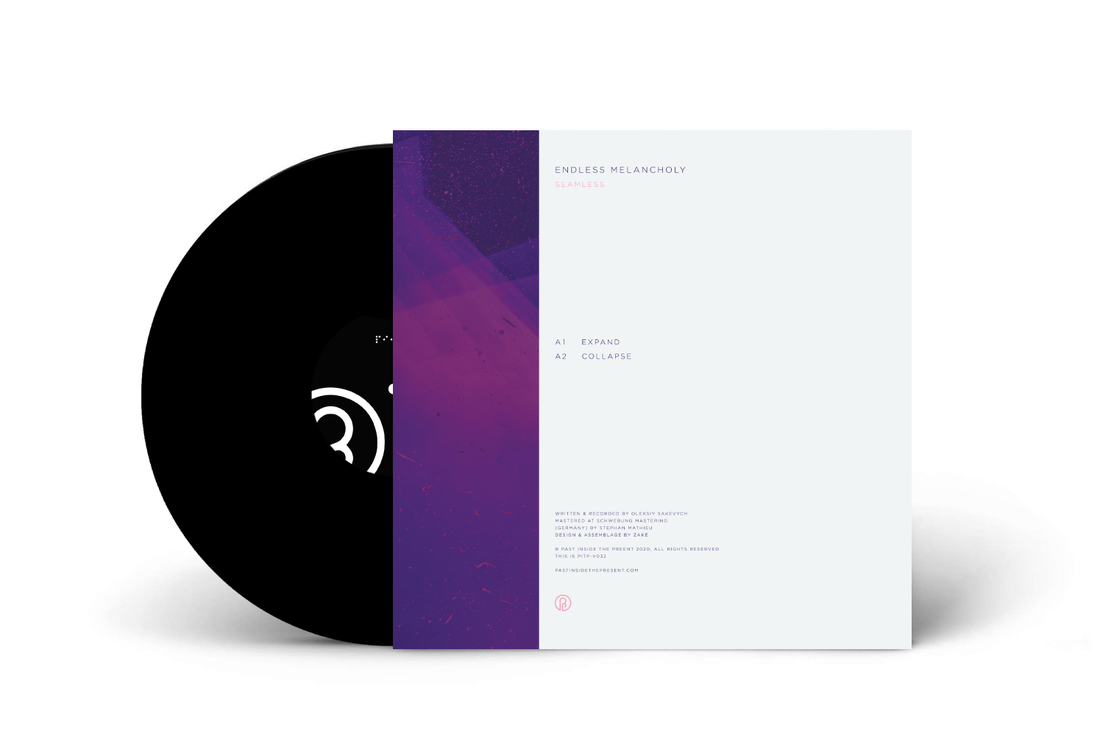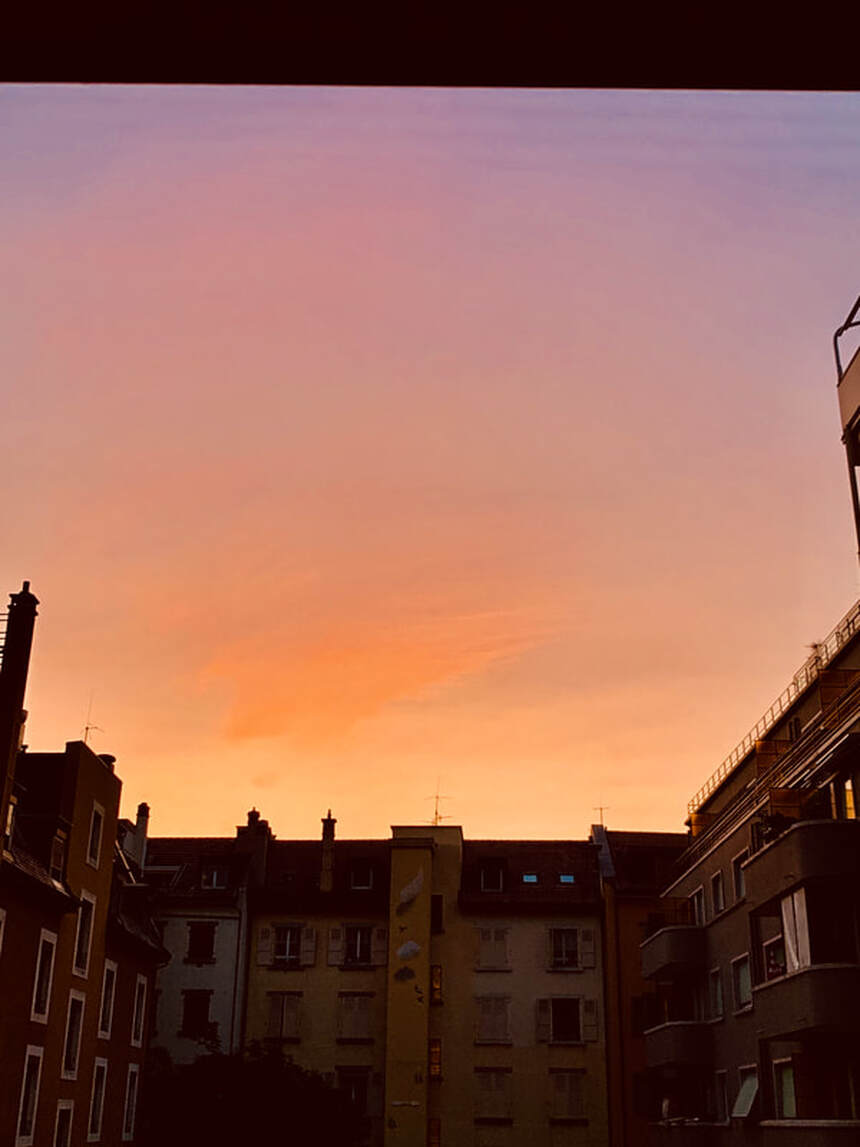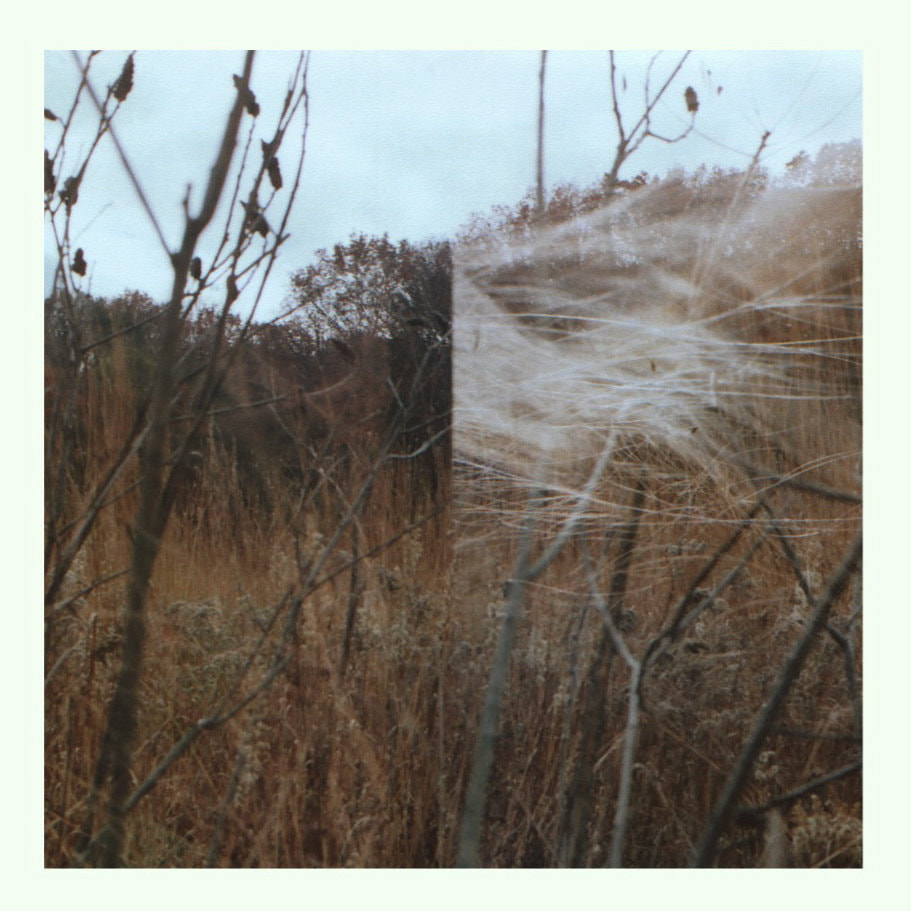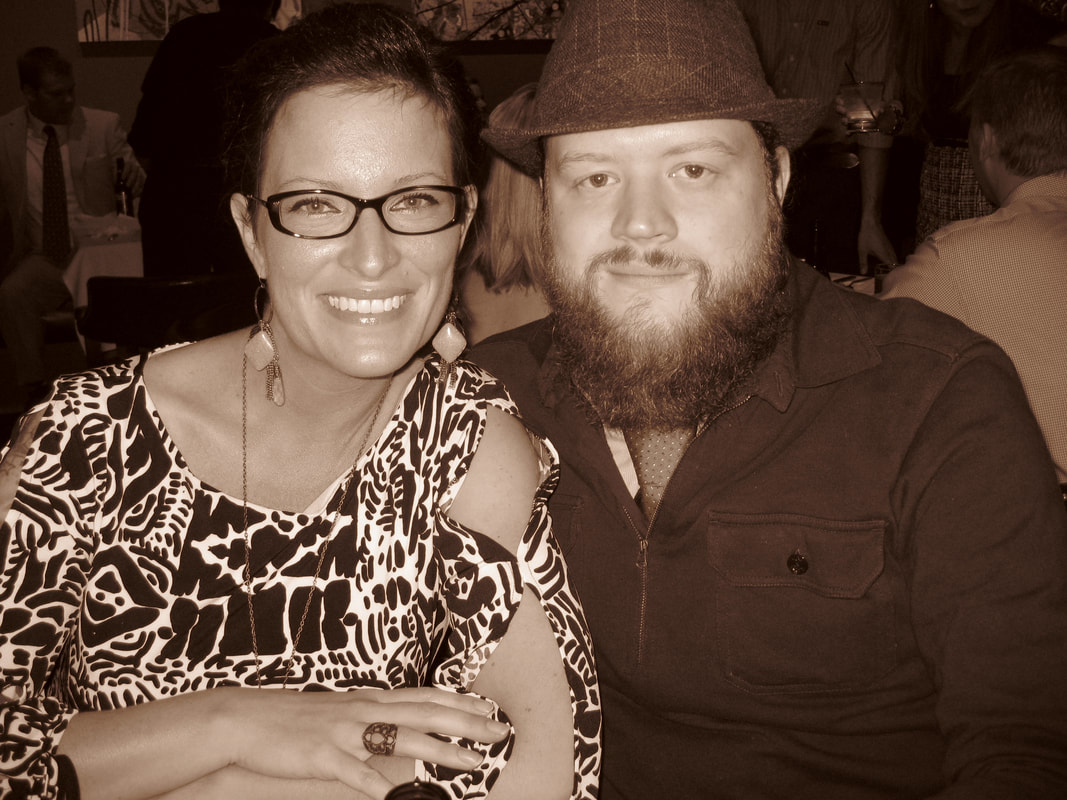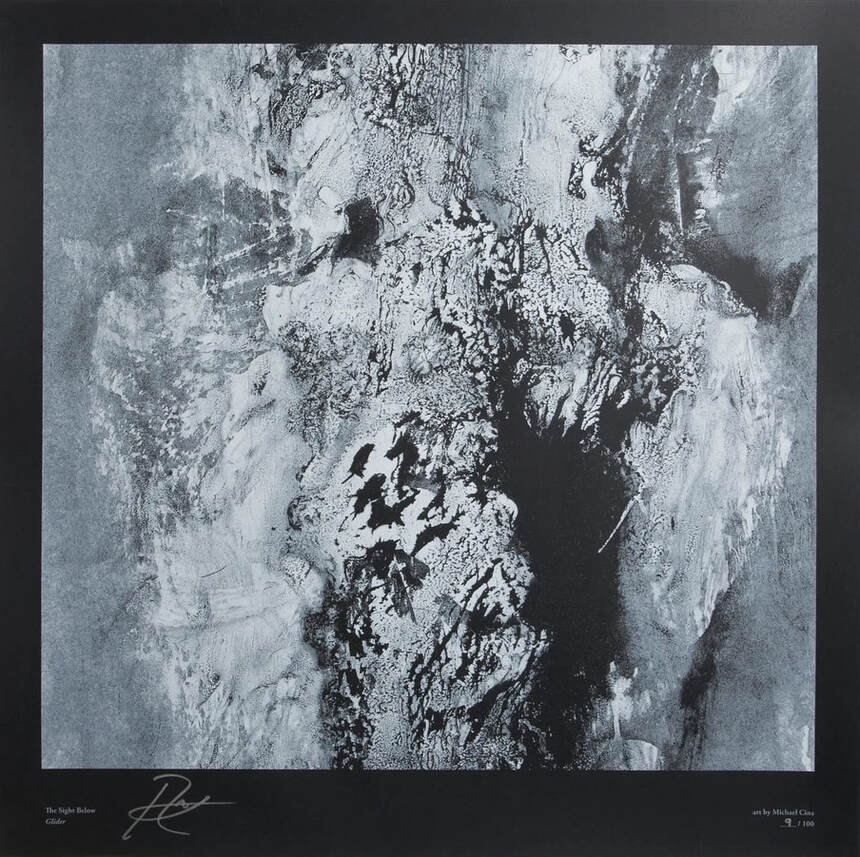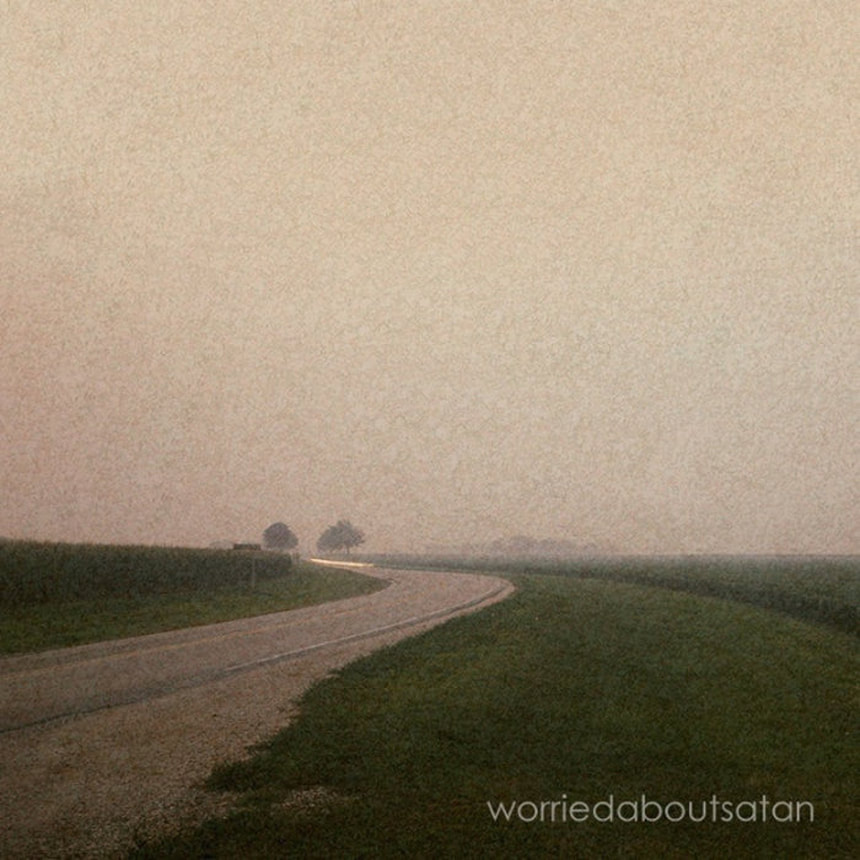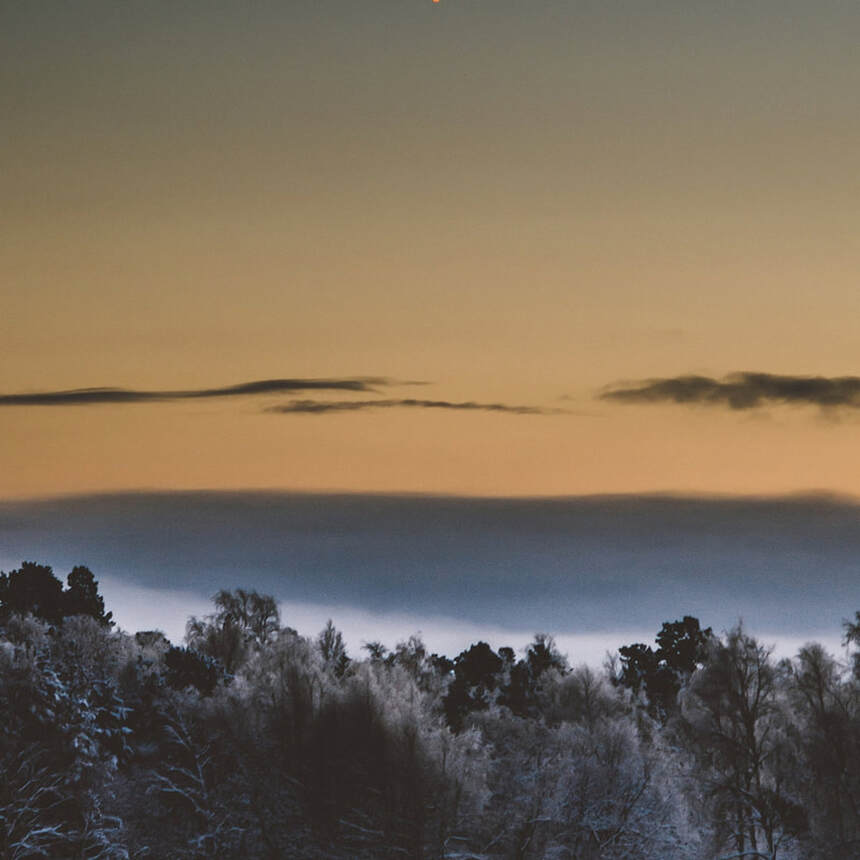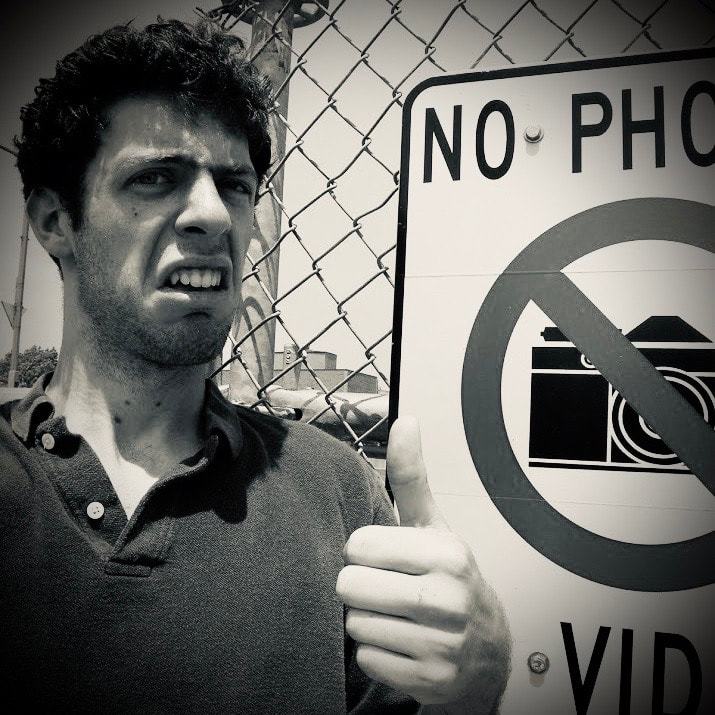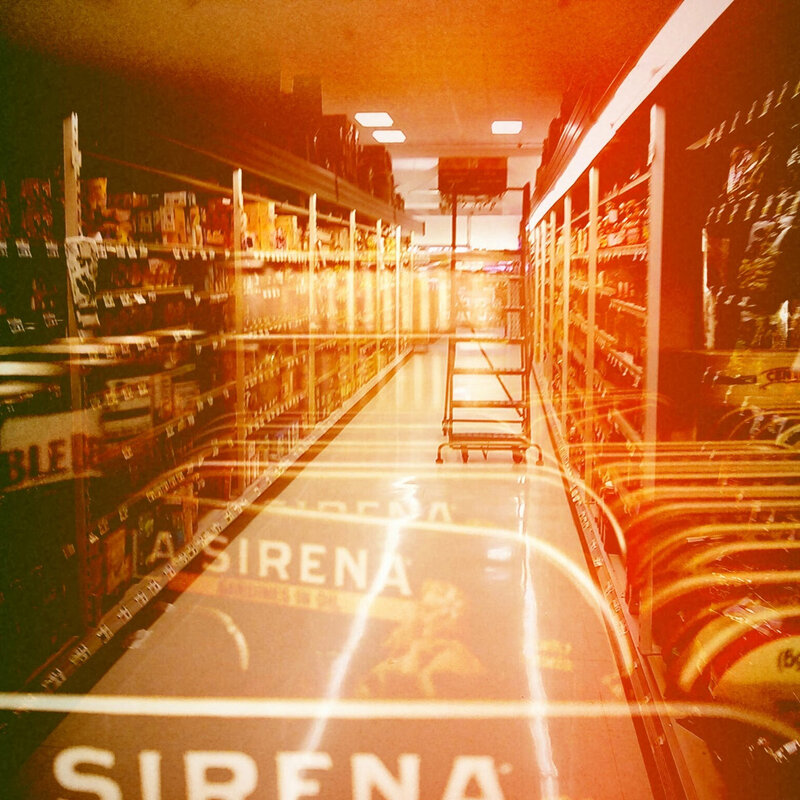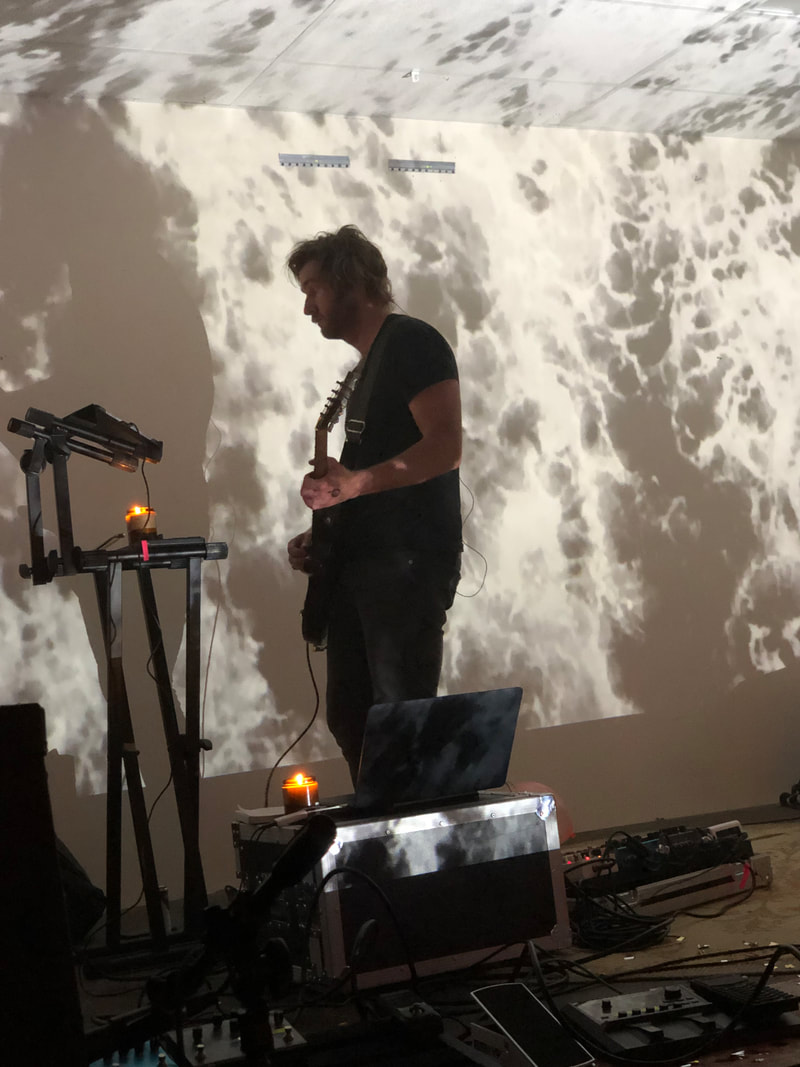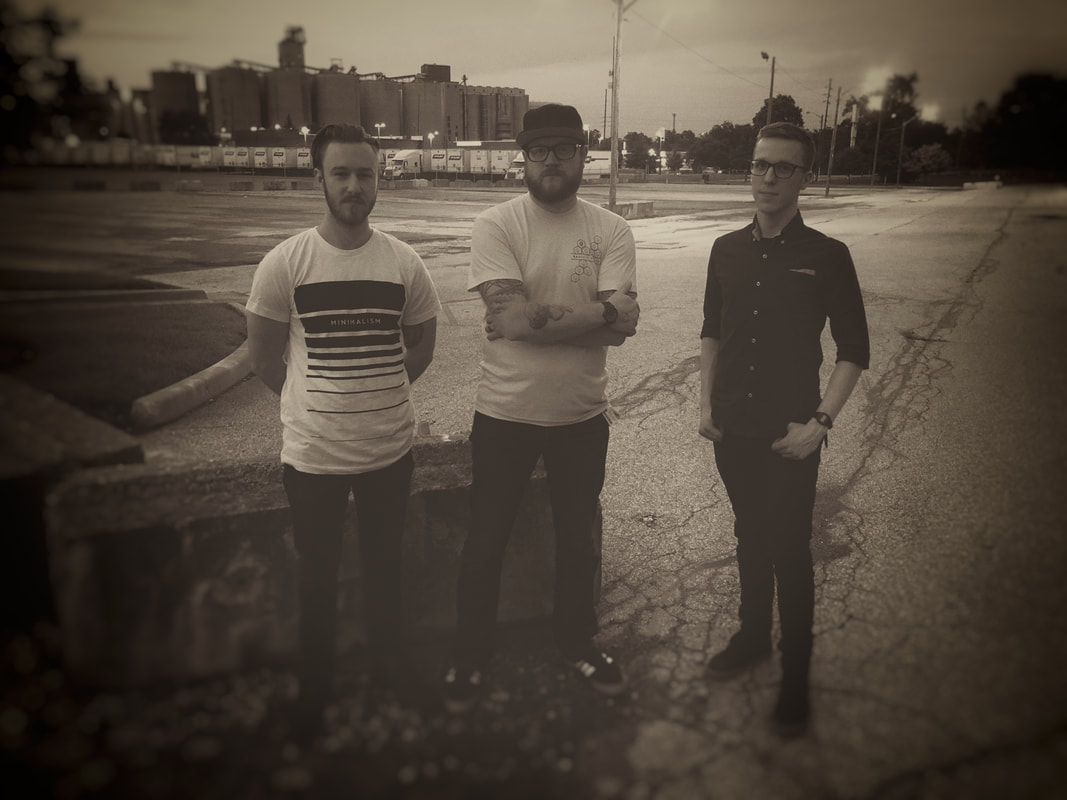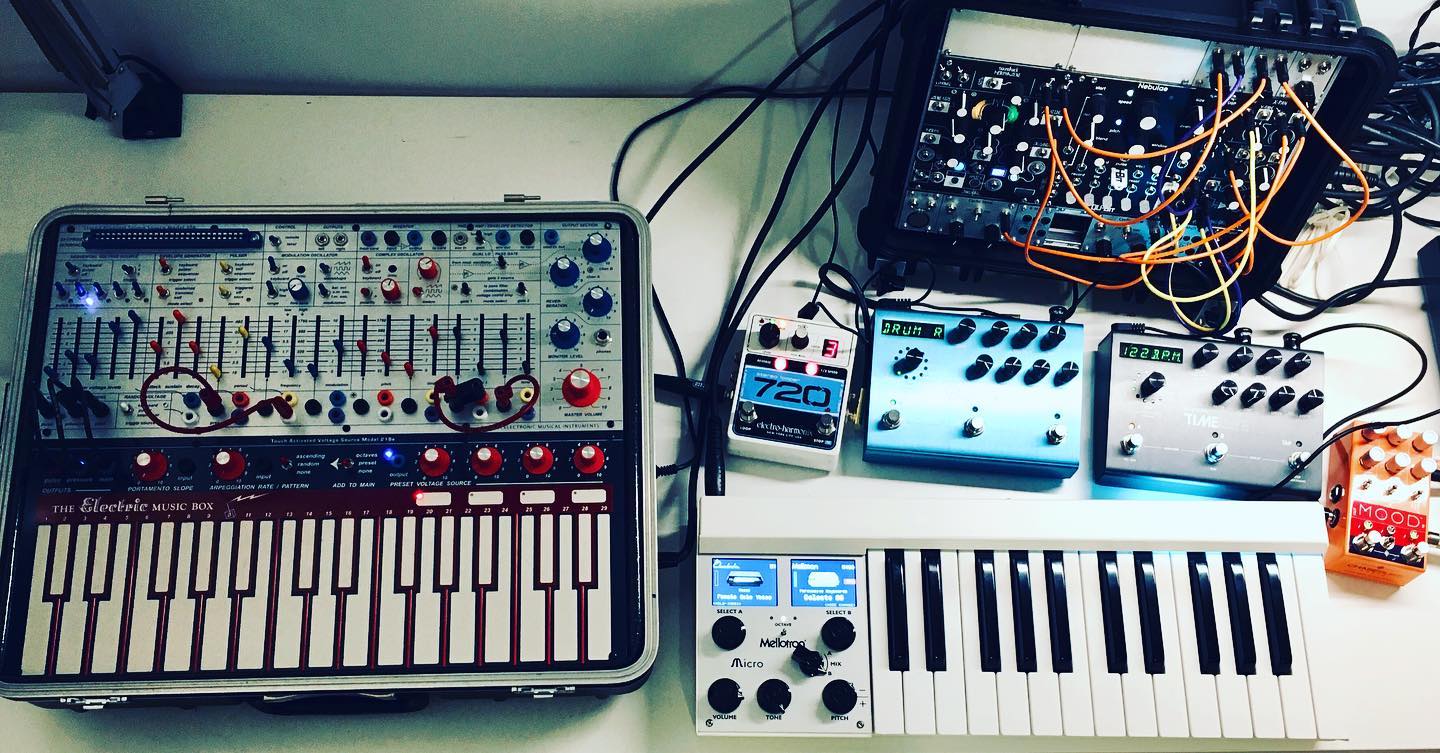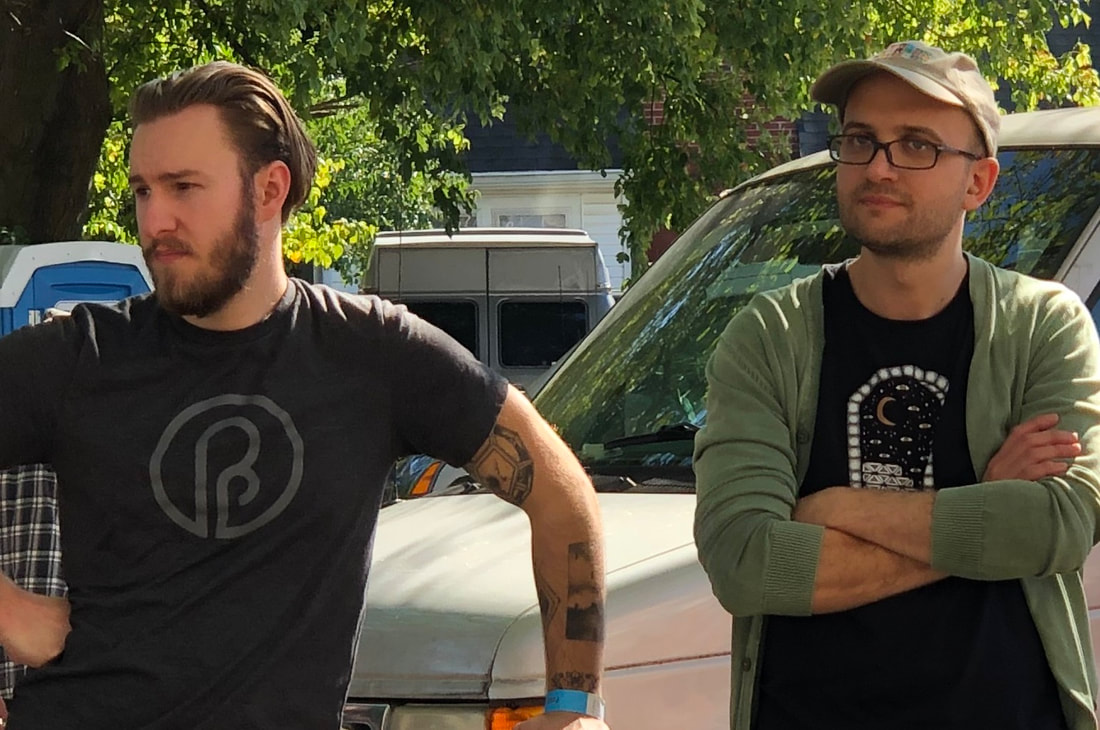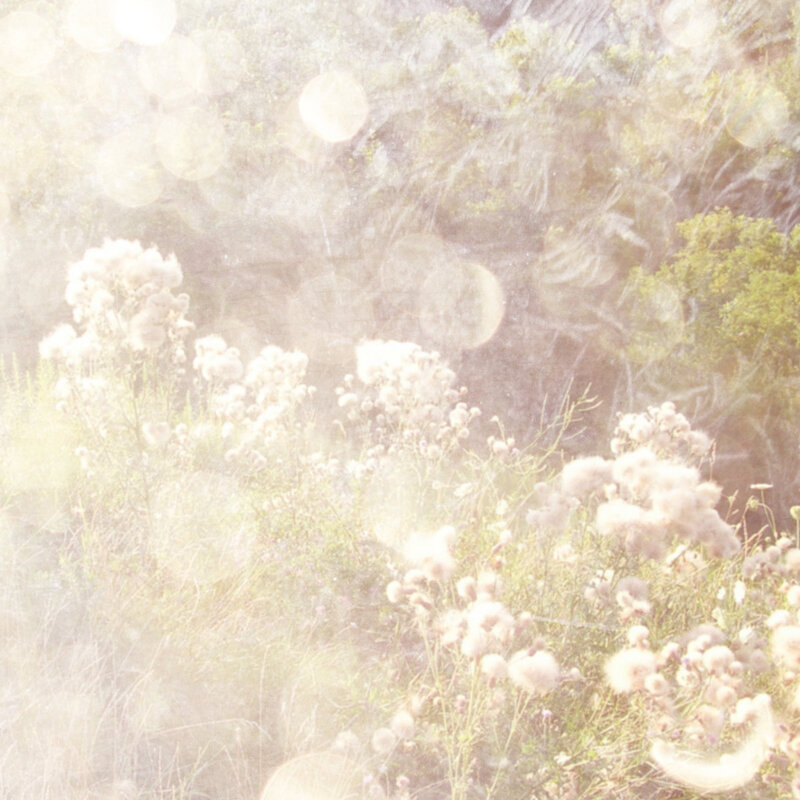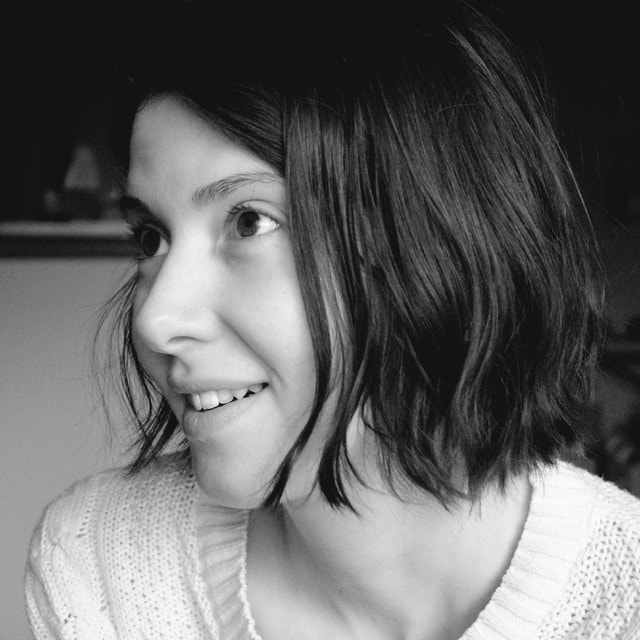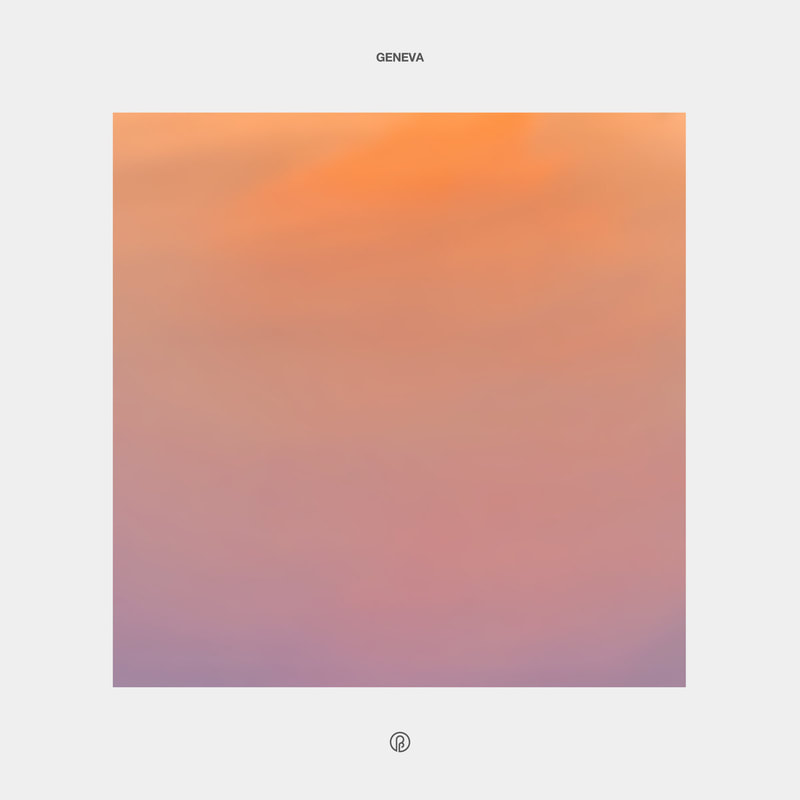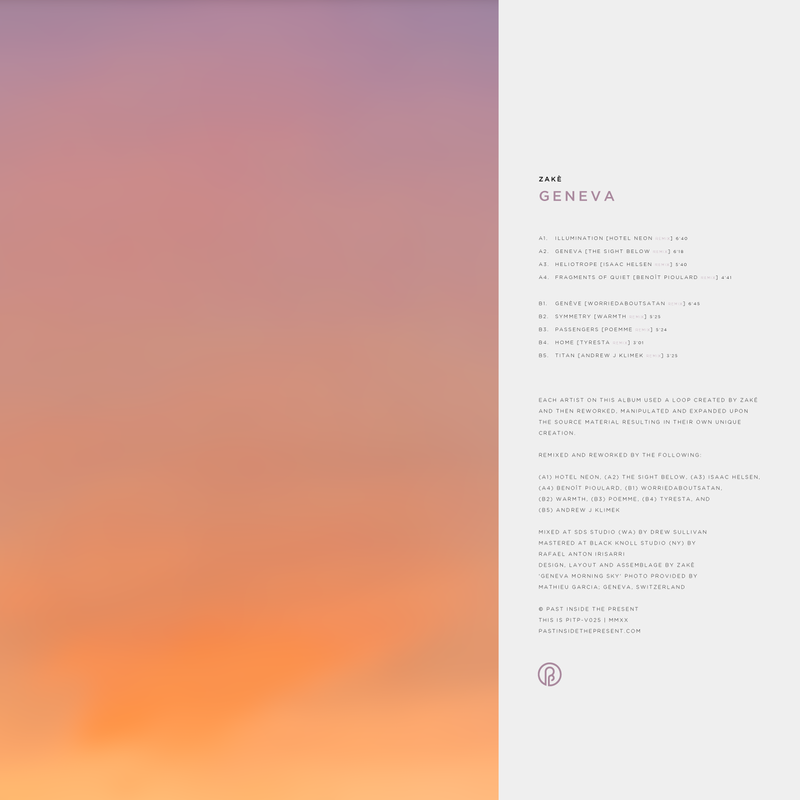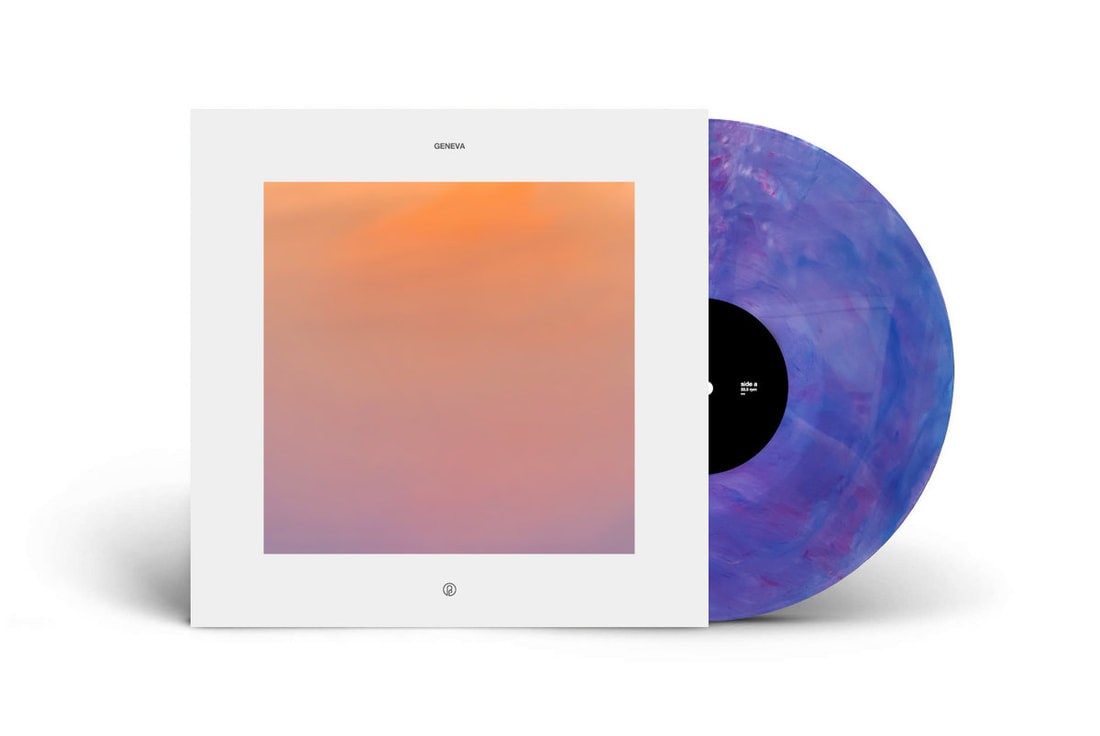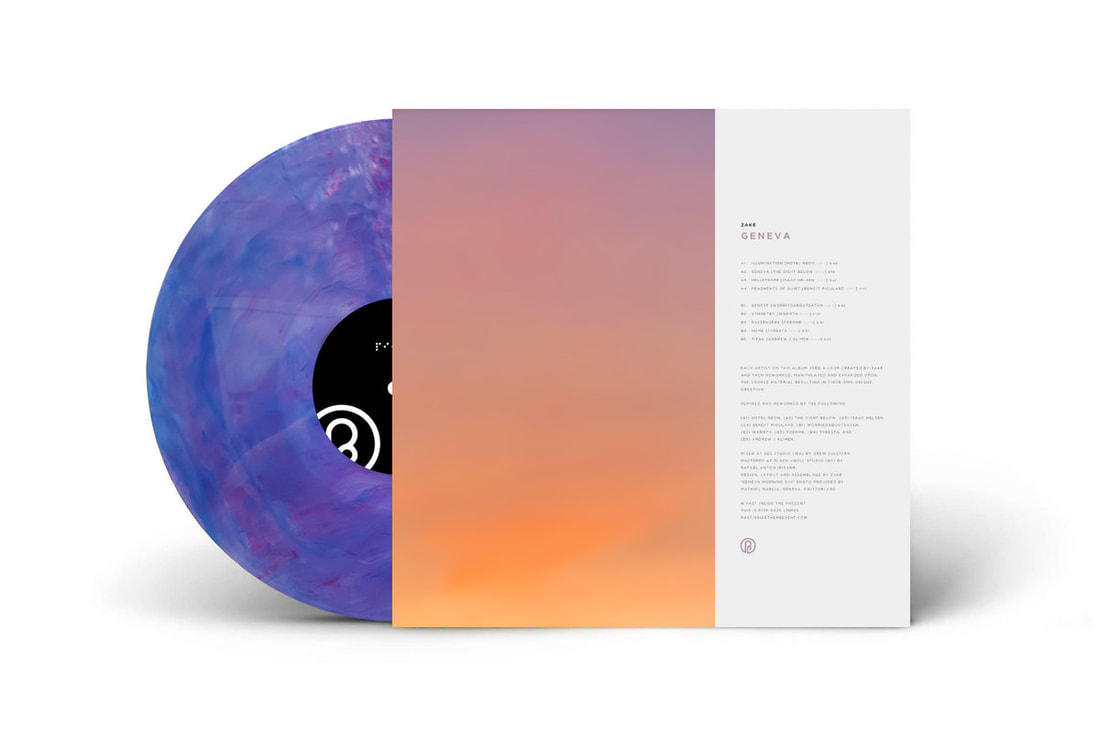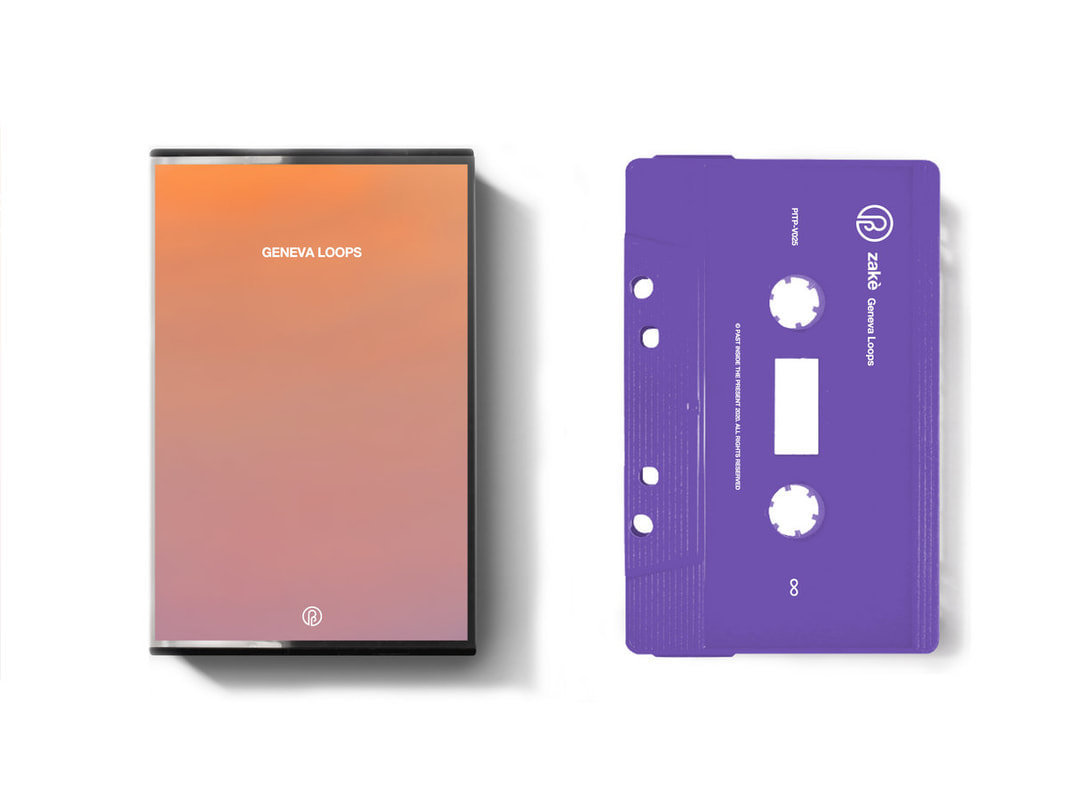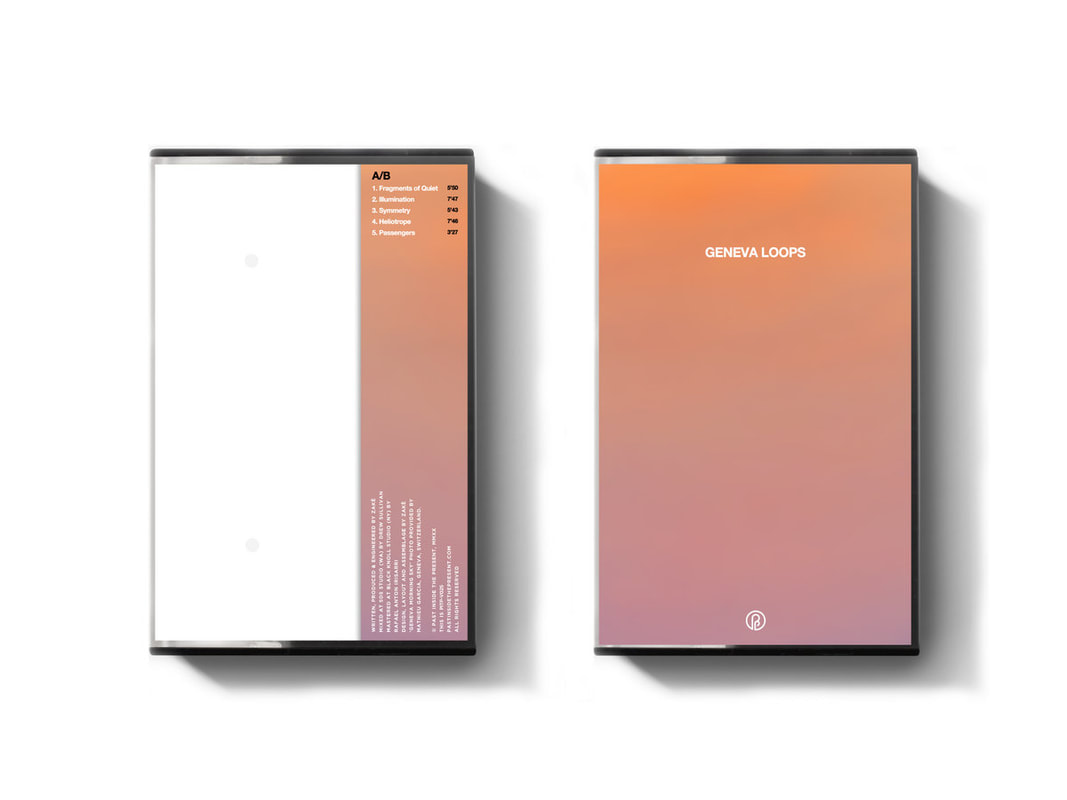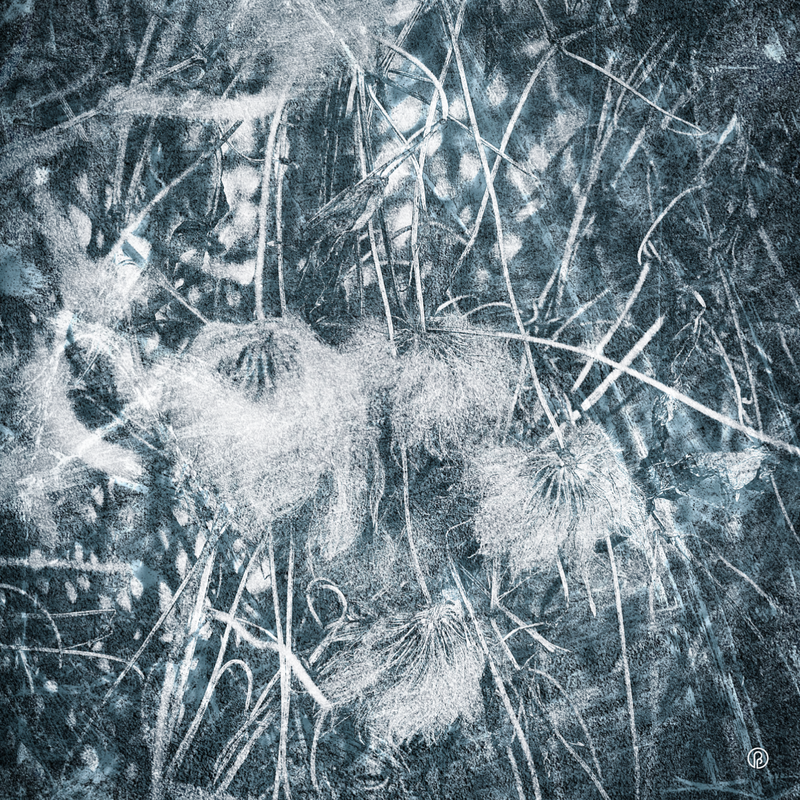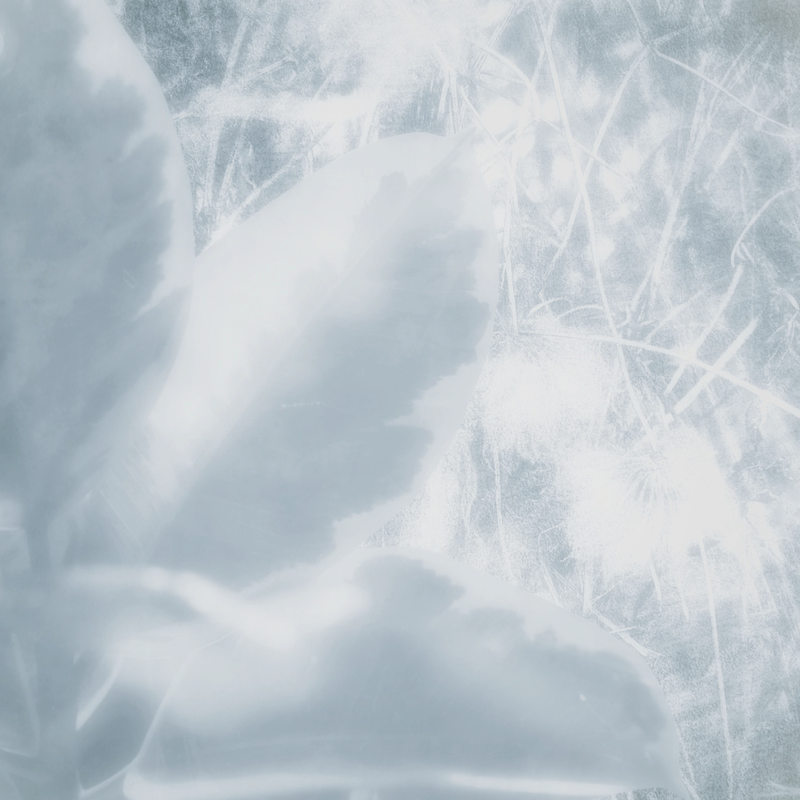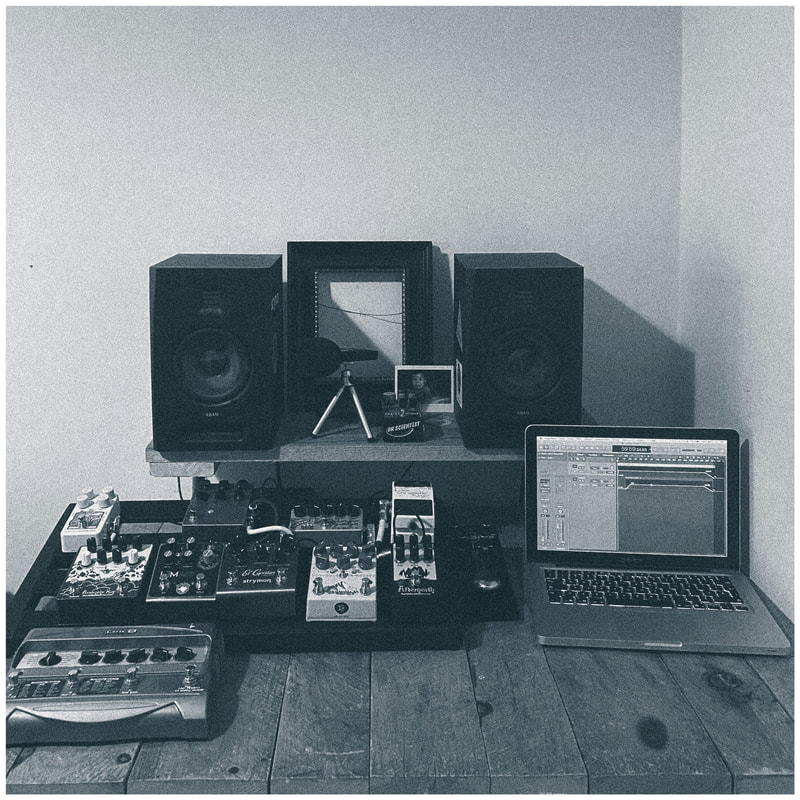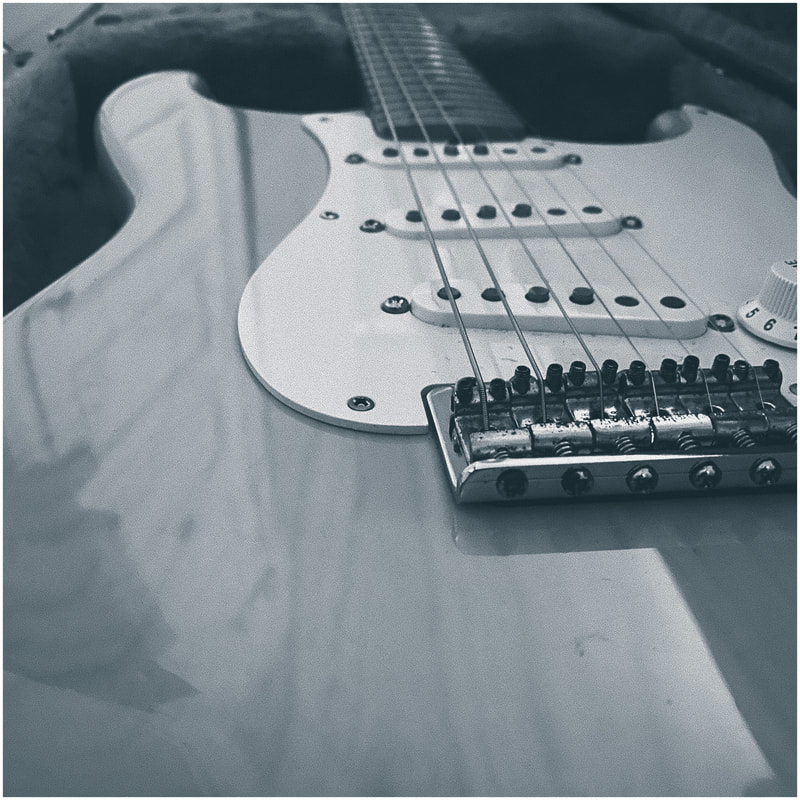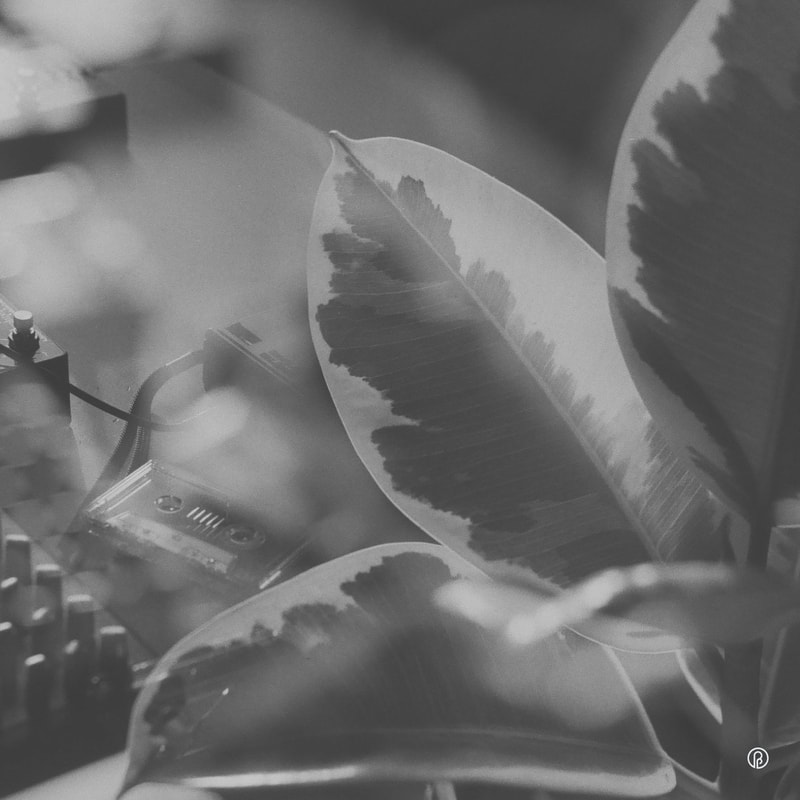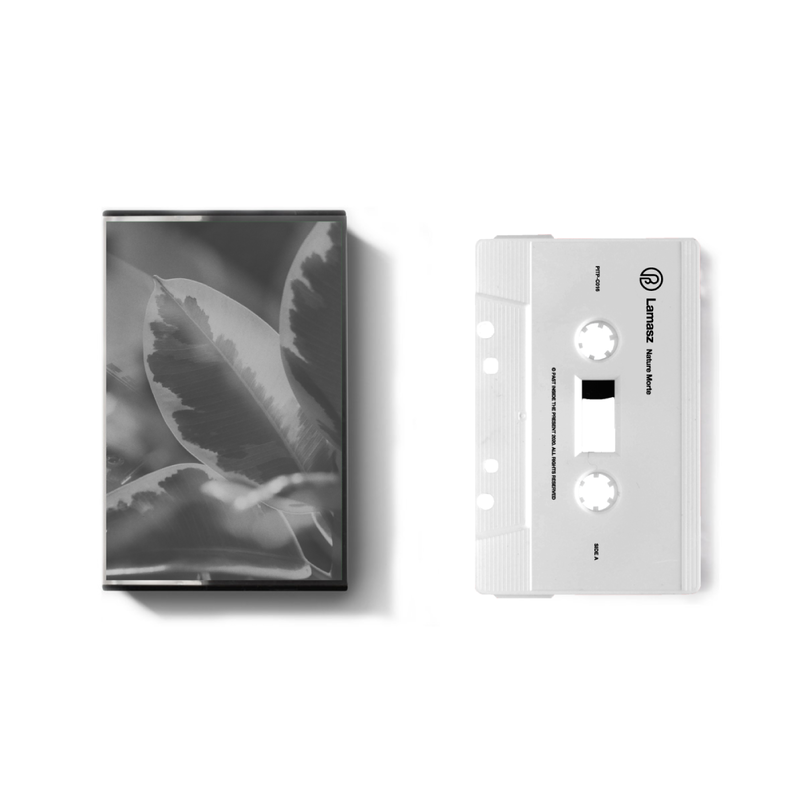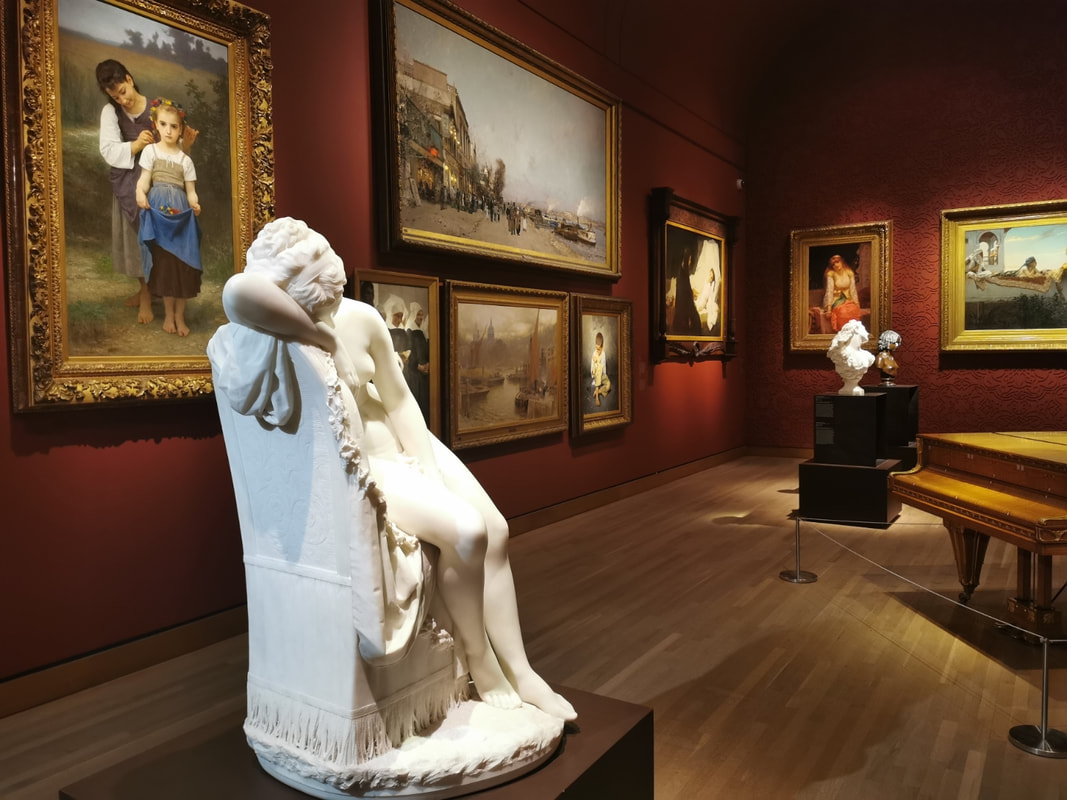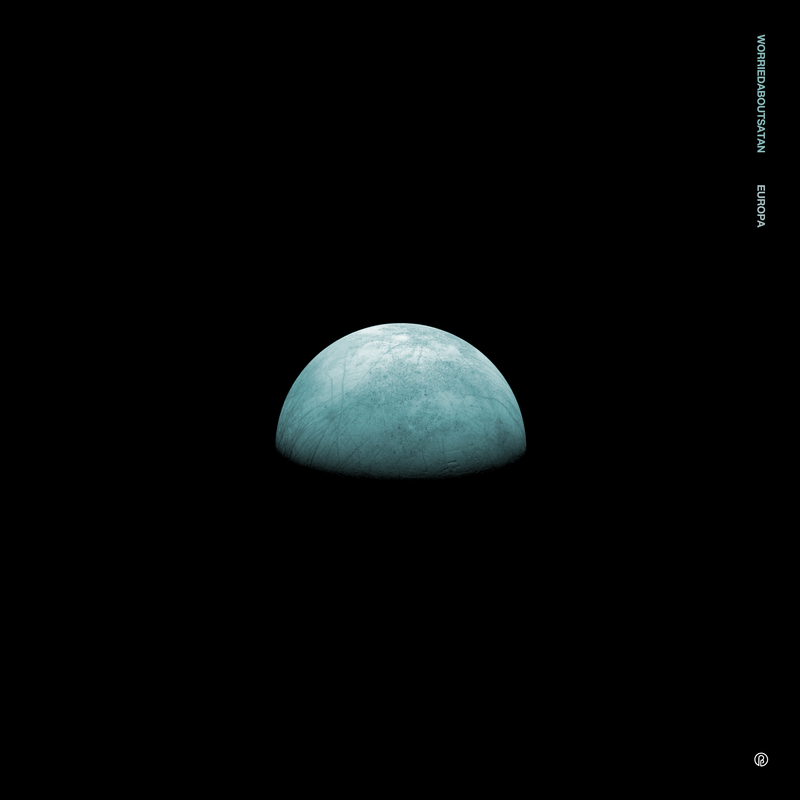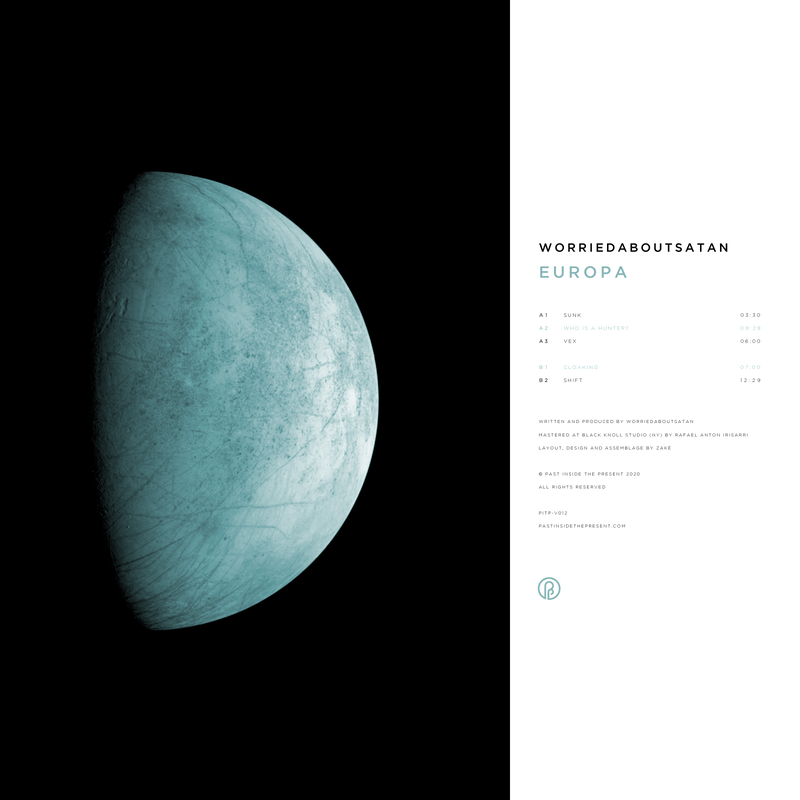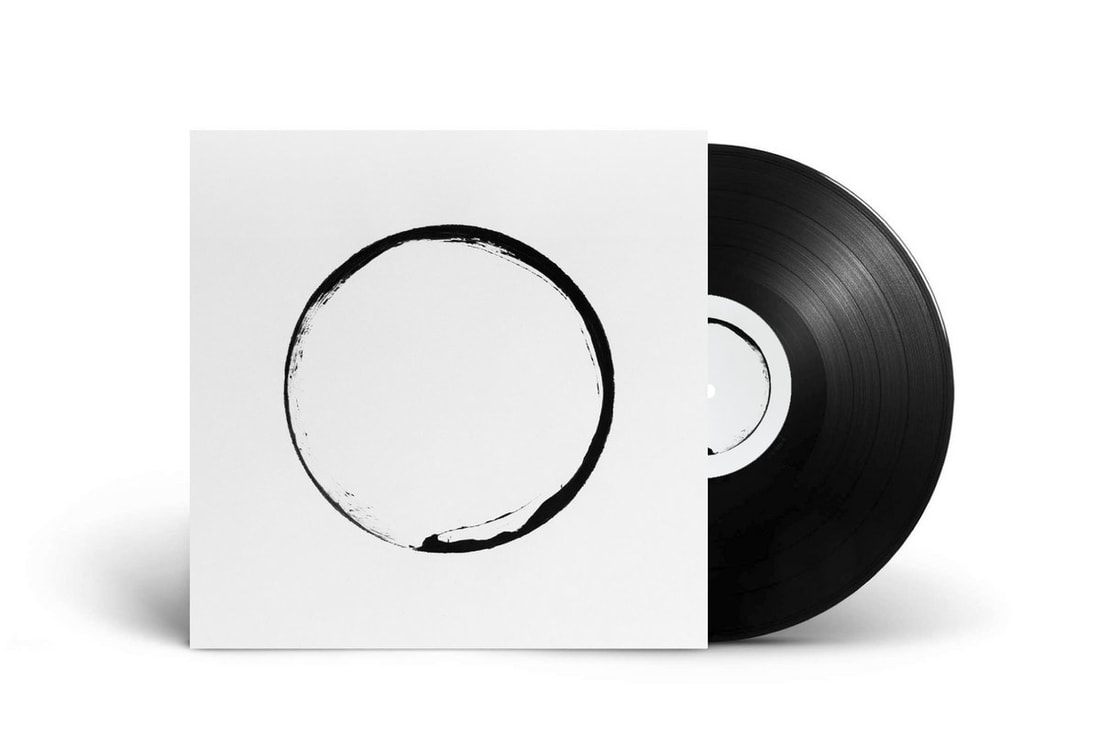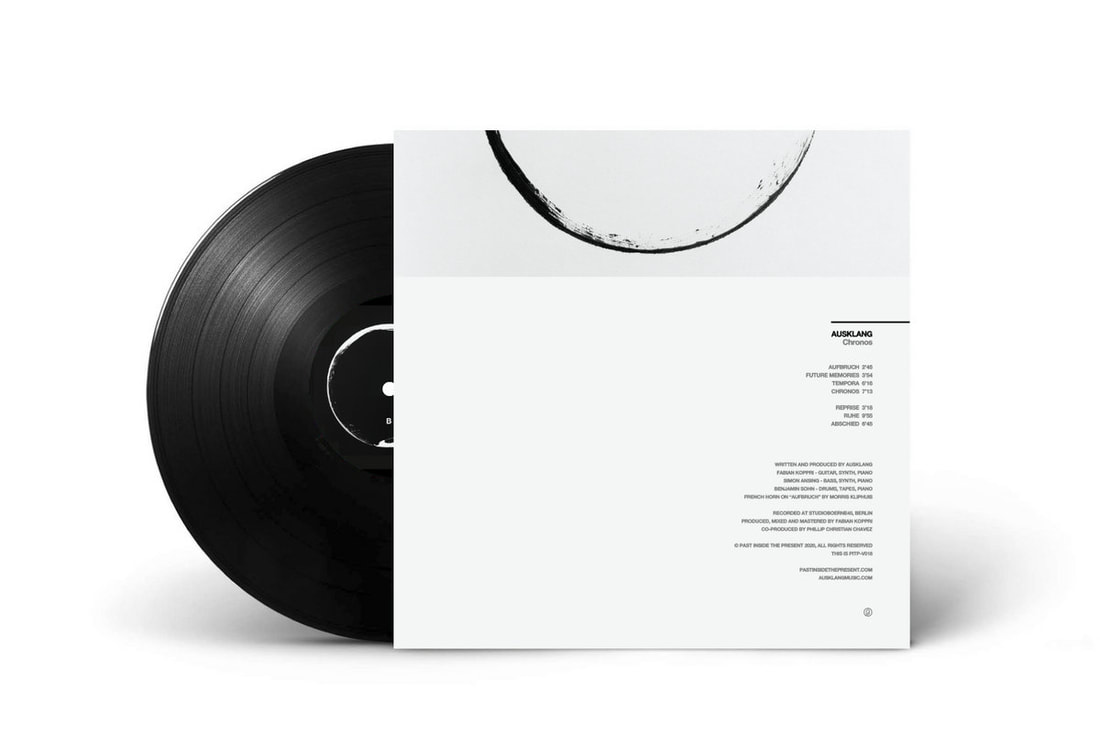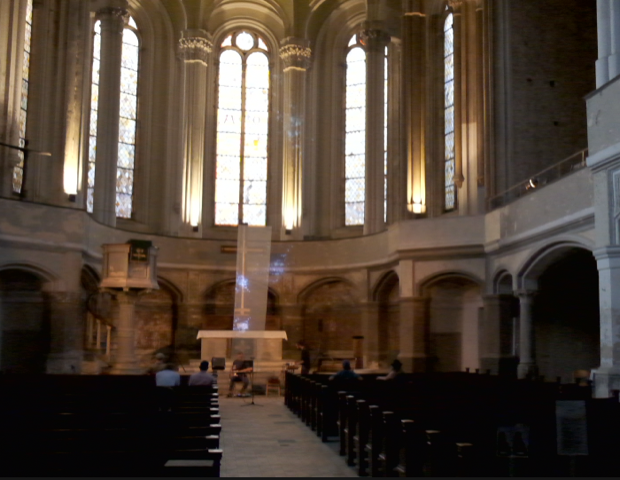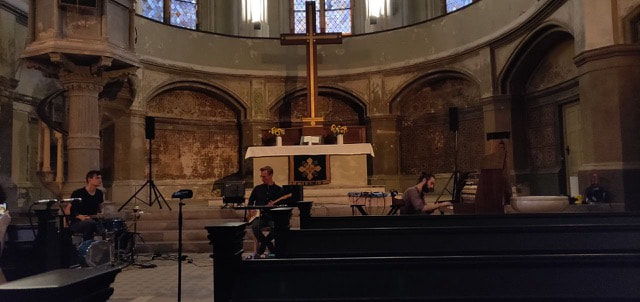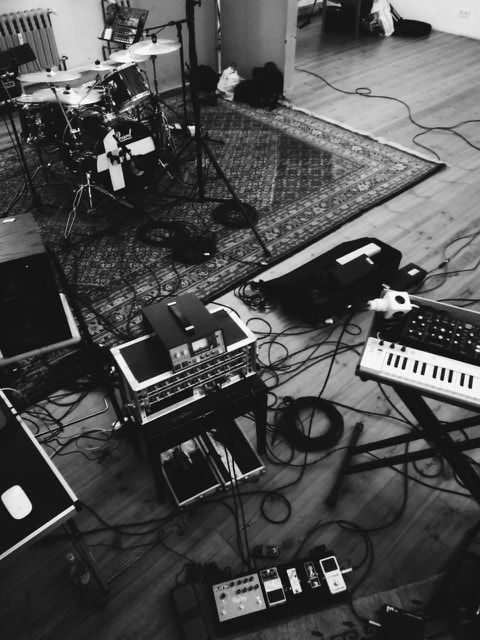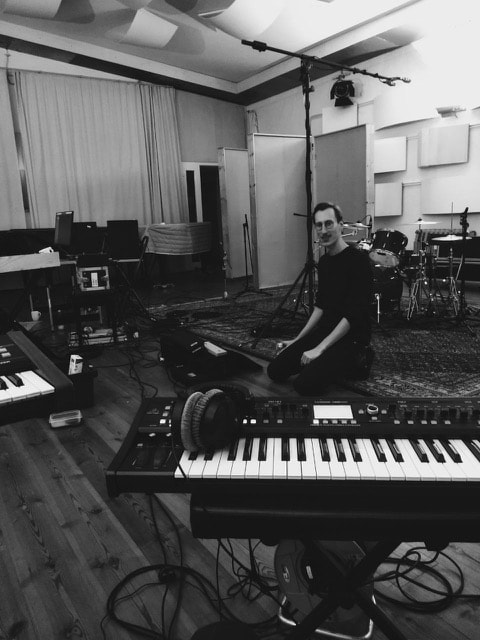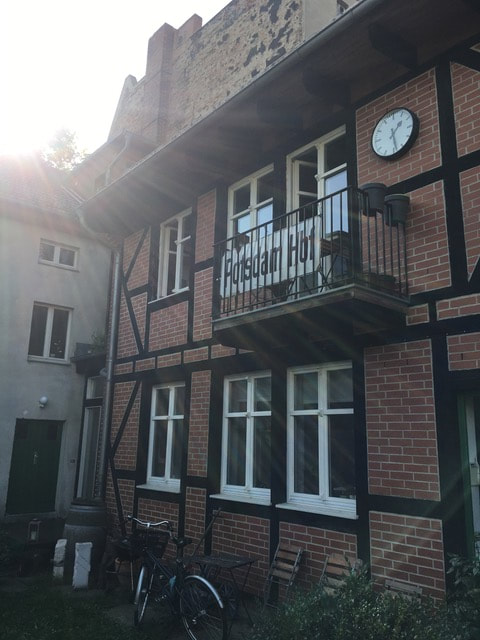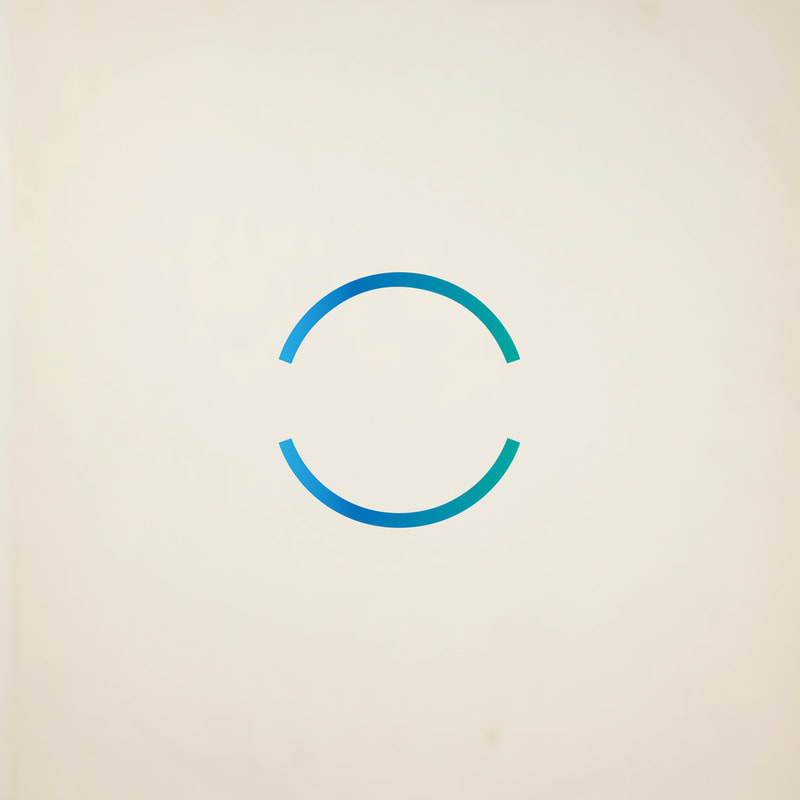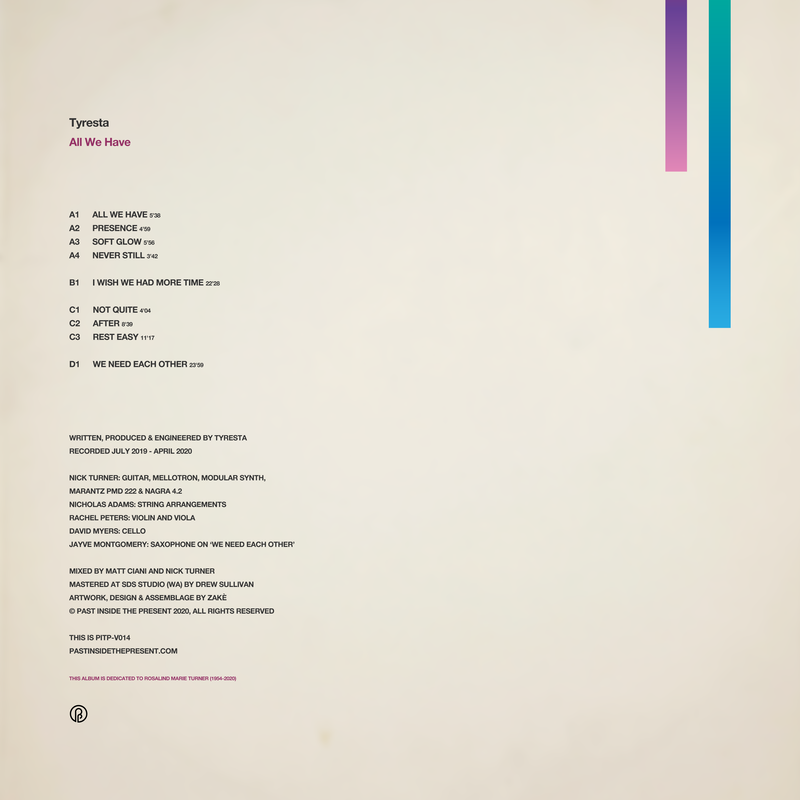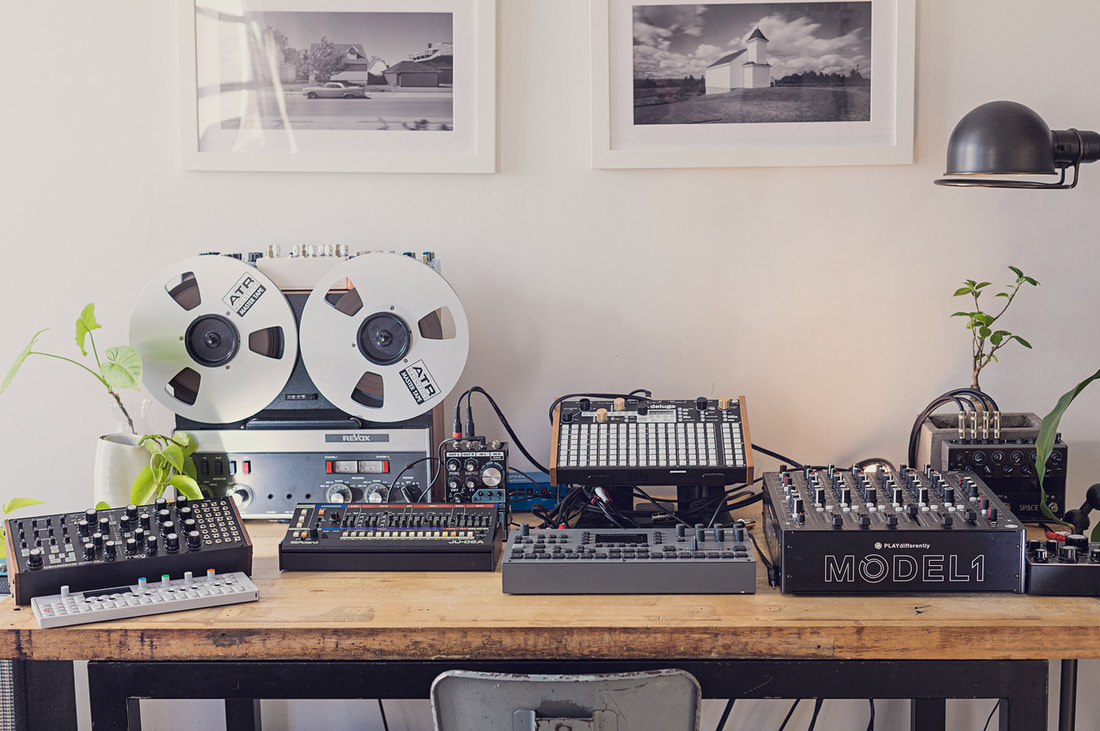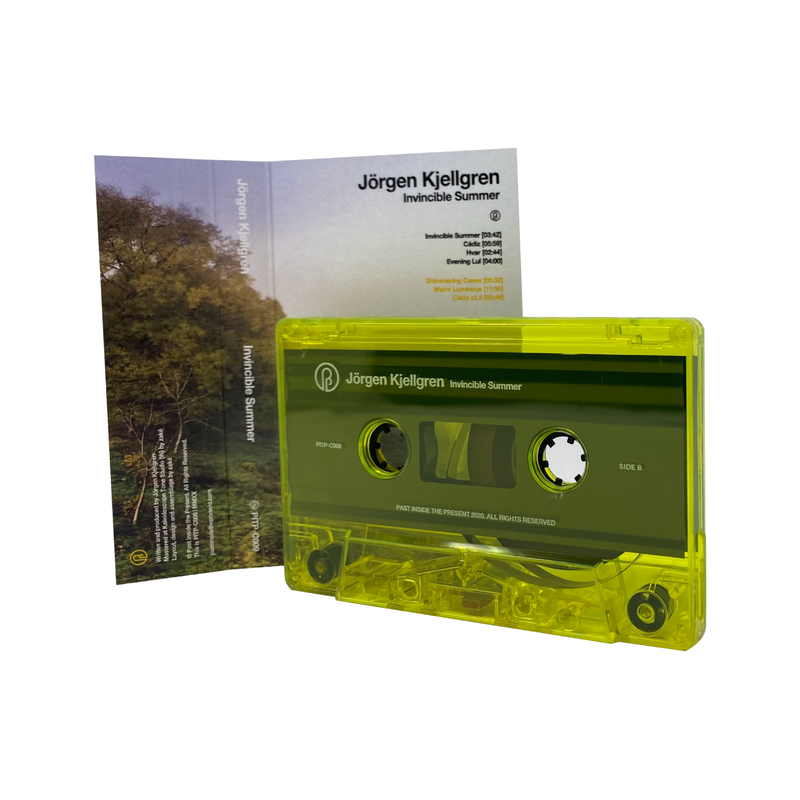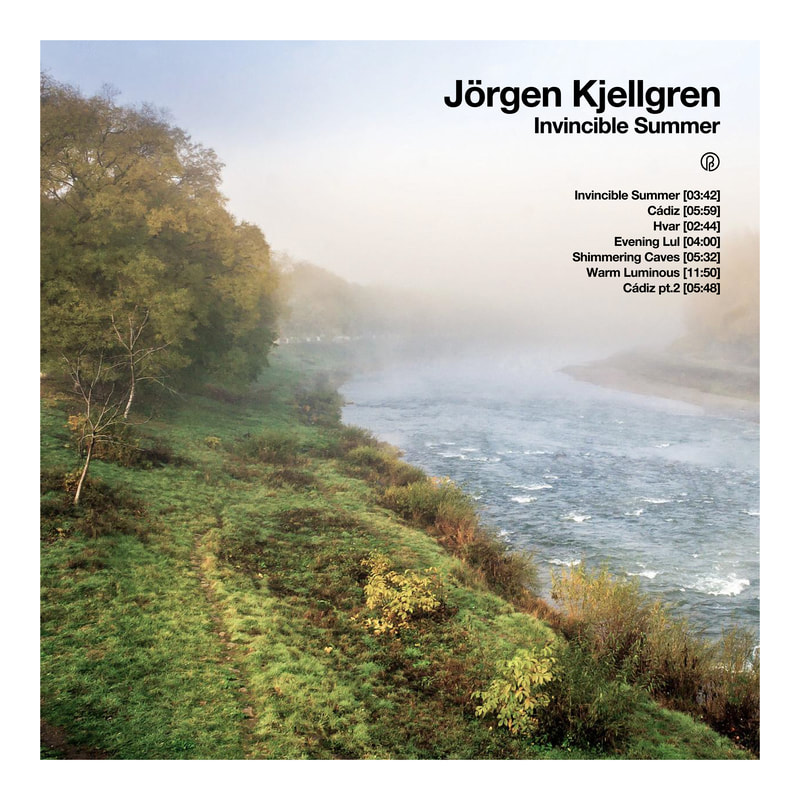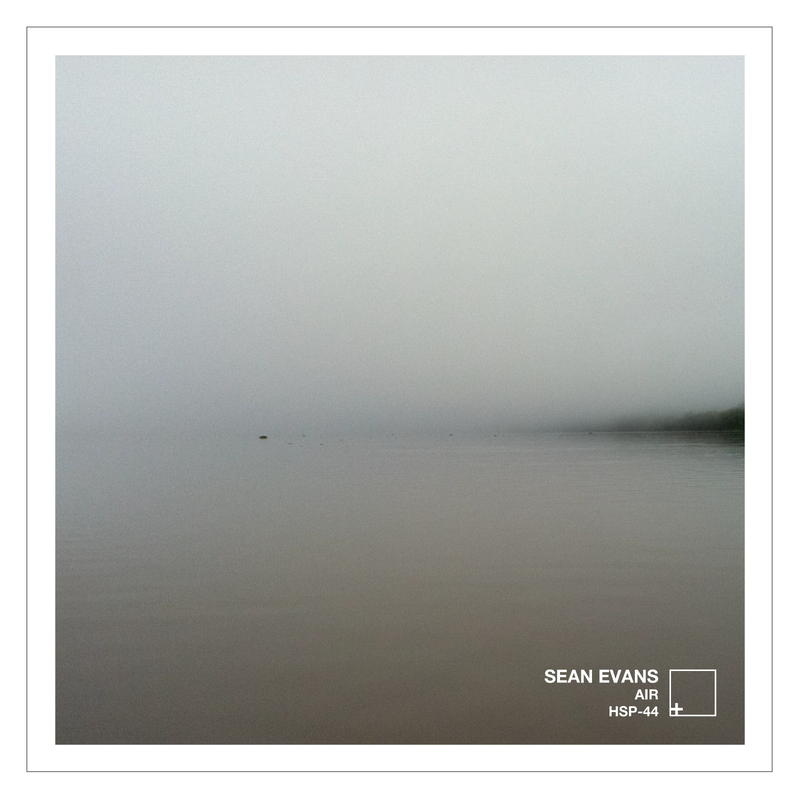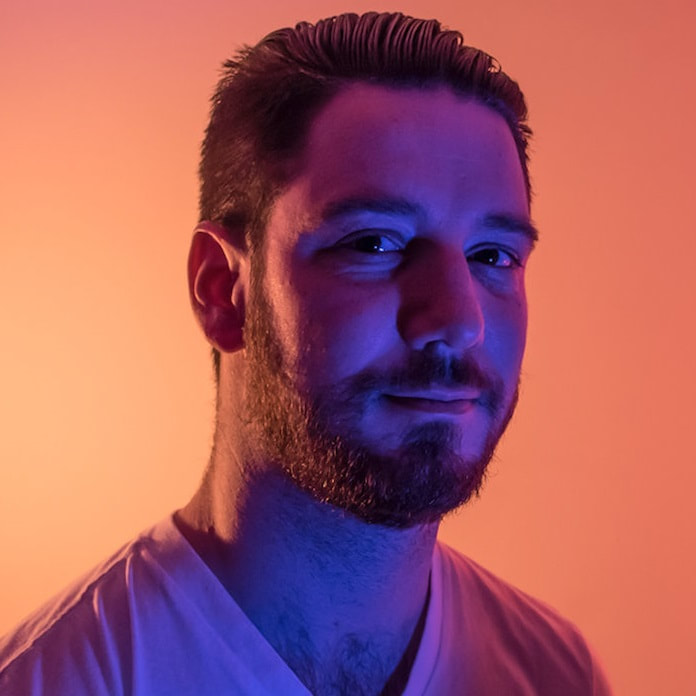|
One of our early releases of 2023 is 'Nurture,' the collaborative album from marine eyes (Cynthia Bernard) & IKSRE (Phoebe Dubar). The two artists decided to ask each other a few questions on creativity and their songwriting process. Cynthia: Our shared love of field recording is what sparked the idea of us creating an album together. How did your love of field recording begin? Do you feel like 'Nurture' gave you new insight into the practice of using nature sounds in your music? Phoebe: I've always loved the sounds of the living world - I spent half my childhood in the country and even now as an adult, I can't spend too long in the city or I start to go crazy. It's why I live in the suburbs. I can't live amongst concrete. I started recording the sounds of nature entirely by accident - in fact, the entire IKSRE project happened at the same time. Five years ago, I was sitting by the stream one day and was struck by the gorgeous soundscape surrounding me. I happened to have my laptop with me, so I opened up Ableton and hit record, using the Macbook mic. That song became "Alone. At Paradise" from my first album, "Unfurl". Fast forward four years to finding the perfect sounds to send to you, (FYI I now use a Zoom H4n Pro, headphones and tripod - no more laptop mic recordings, LOL), and I was definitely more considered in what I captured for you for this project, that's for sure. I wanted to document soundscapes that were unique to Australia. I wanted to send you sounds that you never would have heard before. To give you an aural experience of another place - our birds, frogs, insects, wind through our native trees... I even got a recording of a grunting koala but decided against sending it to you. It's a pretty freaky sound. Cynthia: One of the things I cherish about 'Nurture' is that we have an auditory scrapbook of our friendship being born. Throughout the album process and beyond, we have been able to connect deeply on many things, including creative motherhood. Do you feel your relationship with music has shifted since your beautiful daughter was born? How do music and motherhood fit together in your life? Phoebe: Oh my god yes! One thousand million percent, yes. I went from a full-time funk/soul/disco singer with a party band, who also wrote indie electro jams and played in sweaty clubs, to a sound healer and one woman solo ambient music show. How much more of a shift could there be? But life is all about growth and shifting with the seasons and after 10 years doing that, I felt an immediate shift away from that kind of music making as soon as I became a mum. I've always just wanted to make people feel good with my music, I guess I do it in a far more sustainable way now - rather than party time fun music, I make music to nourish and nurture. And for sure, music and motherhood are totally complementary and exist side by side in my life - whether it be writing silly songs with Stella or nurturing her love of music; or her accompanying me to family-friendly gigs, or on field recording expeditions, it's something that we share constantly and is integral to our wellbeing. Like sunshine. Or fresh food. Cynthia: Name one current obsession/passion in your life that has absolutely nothing to do with music. Phoebe: INDOOR PLANTS! My house is a freaking jungle with plants of every conceivable variety, scattered all over the place. My husband constantly jokes that we need a full-time plant waterer on staff soon. But I love my plant-babies so much and get so much joy from tending to them. I get so upset when one of them gets infested with pests or looks sickly. The ones I'm most proud of are my big Fiddle Leaf Fig, who I call "Nigel" and I grew from about 75cm tall to the towering 3m he is now. And my two Parlour Palms, which I bought on sale at Bunnings (I think it's maybe our equivalent of Home Depot?) in 2014 and they're still kicking! Speaking of, it's time for me to go and water them now. :) Phoebe: You are one of my favourite musicians because you're so authentic and I can just feel your heart in every song you write. It's obvious that making music is in your bones - but do you remember a particular moment in your life when you suddenly realized that you just HAD to make music? Cynthia: Thank you, I feel the same about you! Your heart is undoubtedly infused with your music and is one of the first things that made me fall in love with the audio worlds you create. I can think of many moments when I have had to put everything else aside and create, but I have to mention the first time I felt this pull musically. When I was about 10, I was sitting inside my house in Concord, California and it began to rain outside. I was suddenly filled with the desire to sit on our covered front porch, lean up against the pink stucco siding and start writing a song about the rain and how it made me feel. This moment sticks out to me, still. Not because the song was especially good, but at such a young age I felt a connection to how nature can inspire music and tapped into that. Now, I record the sounds around me and add them to my music, cementing how that particular moment made me feel. And here we are, full circle. Phoebe: We went deep with this album, sharing some very personal stories and becoming close friends along the way. Do you find you need a story in your head before you write something, or not? What are some examples of both - stories and not stories - from idyll, chamomile, Nurture? Cynthia: I love that 'Nurture' was a way for us to grow in friendship together, I am grateful for our beautiful foundation! I would say it is quite split for me. Many times I do have a story in my mind when I sit down to write but sometimes I need to sit down and write without anything on my mind, letting things flow out in a meditative state. When I approach a song like this, often I find the story mid-way or after working on the song. An example of having the story ahead of time is my song from idyll, 'roses all alone.' I wrote it with the intention to capture how much I value my alone time and took field recordings and a line from a poem I wrote on one of my solo dates and added them to the track. I sat down that same evening to start the song and it flowed effortlessly. A song on chamomile where this didn't happen is my track, 'outpourings.' Creating this song was improvisational for me and the story of the track became clear just after recording the main vocal textures and guitar. The story of the song is about improvisation being fulfilling in a different way, there is magic in remaining open to the unknown. With Nurture, every song had meaning from the start as the majority of the tracks began with us sharing our field recording with the other accompanied by a geographical lesson, photos and journal of sorts. I feel like this added to the magic within the songs as we were living vicariously through one another, truly placing ourselves in new environments. 'You'll Grow,' quickly became our song to comfort the earth as the field recordings you sent me were from bushfire-ridden land. This was also the first time I had written songs to field recordings I hadn't captured on my own. It was a beautiful experience to work with your sounds and stories and I can't wait to visit some of the locations with you when I visit Australia one day! Phoebe: I know you love to cook, and entertain. So, tell me this - who are the ten people - alive, dead, even fictional - who you'd invite to a dinner party, and why? (And as bonus points, what would you serve, and what would the first album you would have playing to set the mood?) Cynthia: I have a large family and cook for 7 every night so I don't really want to have a large dinner party right now since I already do most nights, ha. But if I had to choose a few people I would say Mary Oliver, Thich Nhat Hanh, Dolores O'Riordan, Thom Yorke, and you and your family (one part of this that will come true with your visit to California this year)! Not sure how all these personalities would go together but James and I are both Geminis so I am sure it would work out just fine, lol. Oh, and we would definitely make sushi, and likely be playing the album we were currently working on as it would be a good opportunity to check how it translates in a group setting. ;) Inspiration and thoughts behind the making of 'Natura' by Drum & Lace I heard the sound of the cowbells on these beautiful creatures before I even saw them, and was immediately so inspired by it. This was in France while visiting family in 2019, and thankfully I'd brought my field recorder along. I ended up recording 5 minutes worth of cowbells, which became the opening of "Moss" and inspired a lot of the rhythm of the track. "In August 2019, I took a vacation in my native Italy, up in the Emilia Romagna region, and stayed at the most wonderful farm house which was called Prasiano. It is here that I collected/recorded a bunch of sounds of water, chickens and general nature which became the beat and textural basis of the track "Prasiano". The first iteration of "Prasiano" was performed as a 'Live Ambient Improv' on location here (you can watch it here!)." 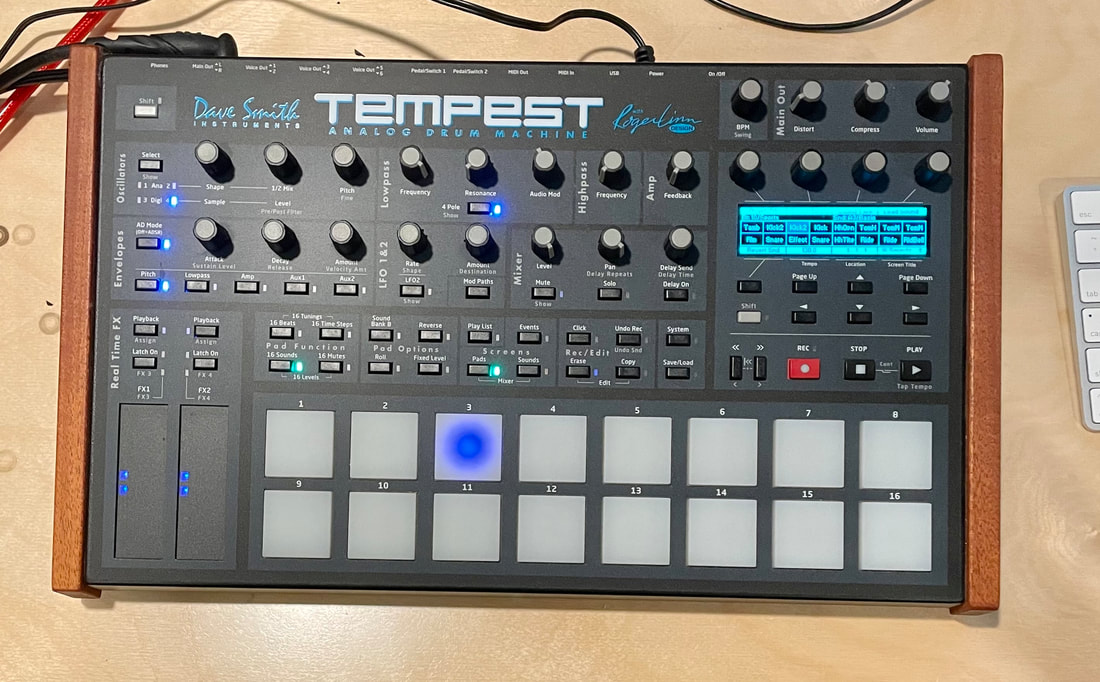 Sequential Tempest, Making 'Oe' Sequential Tempest, Making 'Oe' "A couple years ago, while working on a scoring project, I came up with an amazing drum and bass loop on my (Sequential) Tempest. That loop because the basis and ostinato that you hear at the beginning (and throughout) the track "Oe"." 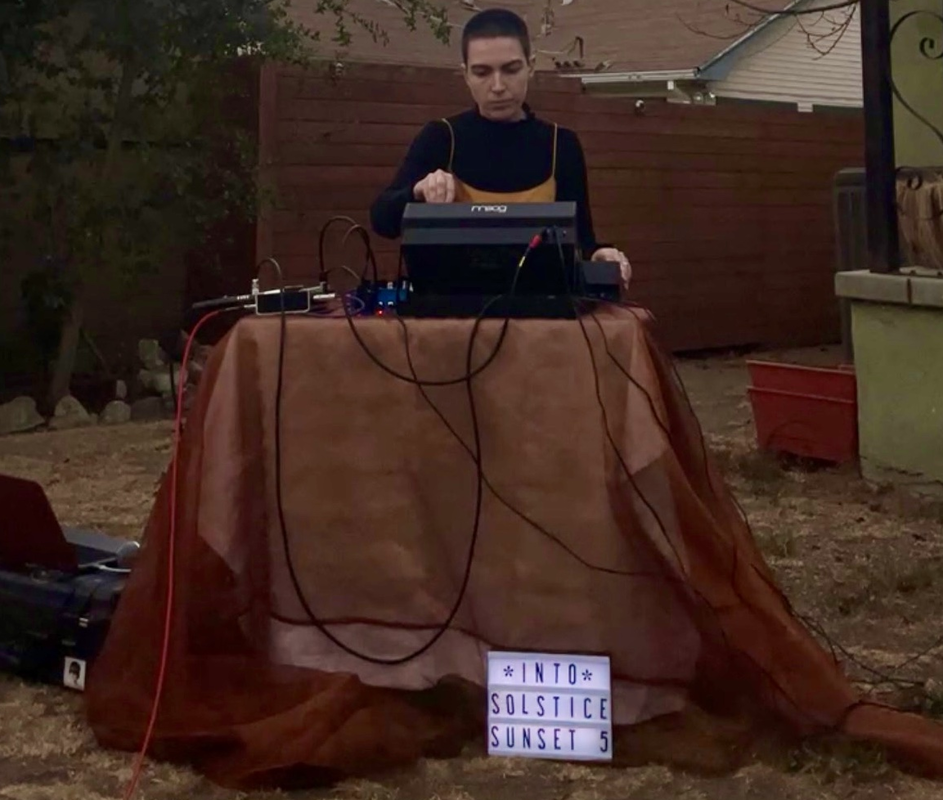 Waxing Crescent Into Solstice Dec 2020 Waxing Crescent Into Solstice Dec 2020 "Nearly a year into the pandemic, I'd been missing performing live and came up with the idea of the 'Into Solstice' performance series, in which I performed at sunset for ten days leading up to the Winter Solstice and broadcast it on my IG Live. It went great- and one of these improvisational performances, which was performed using a Moog Mother32, DFAM and Subharmonicon, became the track "Waxing Crescent". The title of the track refers to the moon phase on the evening that the performance took place." "The pandemic for me started with giving birth to my daughter (born at the end of March 2020), so she was very present and inspiring for the writing part of this LP. I made sure to document as many of the times that she came to the studio to work with me, which was very often in her first year of life, and this photo was from when I was patching my modulars to work on what became "Creatura". She was such a bit part of it, and what it means to me, that her baby cooing and last sonogram are part of the track." "Just an ode to the place I spent the most time at, which wasn't my house, during the writing of this record." As I was working on the track that became "Moss", there was the most incredible moss growing on rocks that I took so many photos of (this being the my favorite shot). When I got home, and had to save over my 'untitled' Ableton session, I decided to call it... "Moss". " I had the pleasure of having the folks of the London Contemporary Orchestra play on my record- they're always exceptional! I wasn't able to travel to London, but we remotely recorded strings at The Church Studios at the end of March 2021 with Edward Farmer conducting and Fiona Cruickshank (of Air Studios) engineering. Shoutout to composer/artist Dabney Morris for the help with orchestration for this. We recorded strings for four tracks - "Armatura", "Canary", "Moss" and "Plantae". "When it came time to figure out what the visual world of the LP was going to be, I was immediately drawn to the concept of the juxtaposition of natural and artificial elements in music and our daily life. So much of the record is based around wanting to use natural/acoustic sounds, but that ultimately end up digitized, and I came upon a style of architecture called "Jungle Brutalism" which to me seemed to capture the right vibe. This was a photo I took at the Getty Center, which I sent to 3D designer Carla Batley when we started working together." "We shot the most amazing photos for Natura with photos taken by Priscilla C Scott. This is just a little bts shot and a thank you to her, and to stylist Claudia Cassina, hair/MUA artist Francie Tomalonis and photo assistant Daniel Hermosillo." "Announcing joining the PITP family!" About the album:
Natura was mixed by Paul Corley (Liminal/Sigur Ros) and mastered by Joshua Eustis (Telefon Tel Aviv). The record features the London Contemporary Orchestra (on Canary, Moss, Armatura, Plantae) and Italian drummer Valentina Magaletti (Nicolas Jaare/Lafawndah) on the closing track, Plantae. The LP was recorded, composed and produced at Drum & Lace's home studio in Los Angeles, primarily during the course of winter 2020 into early 2021. The strings were recorded in London at famed Church Studios, engineered by Air Studios engineer Fiona Cruickshank, and marks the second collaboration between Drum & Lace and the London Contemporary Orchestra, who are known for their extended string techniques and its innovative players. Natura draws greatly from the juxtaposition of the natural vs artificial, exploring this concept through manipulated field recordings, voice, modular synth and string ensemble. The field recordings used had been collected by Drum & Lace over the course of several years, and continue her exploration of how found sound can be choreographed into modern electronica. As a contrast to the natural sounds, Natura also explores how synthesized analog and modular sounds can be made to feel like familiar organic elements, such as a human voice or the call of an animal. The overlap that modern technology has facilitated within sonic worlds was of great inspiration for the LP's visual elements, namely its cover, always treading the line between what is completely artificial and what is natural. Inspiration and thoughts behind the making of 'Distance As Power' by 36 & duenn 36 duenn first contacted me in early 2019, asking if we'd like to work together. He is a very prolific collaborator, whereas at the time, I had only worked with two other producers before. I was busy with my solo material, so initially had to decline his offer. But I liked his music, and we agreed to do something together once our schedules were free. In March 2020, he sent me a batch of 1 minute waveforms, showcasing the sound design he had been working on. The sounds were fascinating but mostly atonal and very experimental. Beautiful chaos. Immaculately sculpted. His approach to music is very different to mine, but I felt I could use his material as the foundation for something unique, outside the zones we both usually operate in. This was around the time the COVID pandemic was really starting to get serious here in Europe and around the world. Countries were locking down their borders, and many of us suddenly found ourselves with a lot of free time on our hands. I tried to channel this unusual energy right back into the music. Despite all the obvious anxiety in the air during this time, I didn't want it to be a completely hopeless record. I found that working on the music with duenn was actually a very positive experience and even with the world falling apart around us, there was great comfort in knowing that two people who have never met, on opposite sides of the planet, could still find a deep, shared connection through sound. Don't get me wrong, it's still a very moody, massively melancholic record (and let's face it, those track titles are hardly motivational are they!) but as I have said in the past, I find the best music skirts the boundaries between hope and despair; Sadness and exhilaration. When these contrasting emotions meet, beautiful things happen. When making music, I'm almost in a trance-like state and things happen with very little conscious input on my part. It's pure lost in the moment vibes. I can't even remember what other music I was listening to at the time, or what influenced this record. It was simply a raw, instinctive reaction to the sound loops that duenn gave me, in the backdrop of an unusual environment we all faced ourselves in. I know that I used a lot more distortion that I usually do, making generous use of Guitar Rig on many instruments. Ironically, no actual guitars were used on the record, even though it does sound like it in places. Another major part were the choral elements, used on most of the tunes. I think they play an important role in the overall melancholy of this record, while giving it that crucial human touch. A lament for times gone and people lost. Beyond that, the mix itself is very dense. Like walking through smoke. Raf did an excellent job bringing out all the small details and I think it really shines on both headphones and speakers. I imagine this record could do some serious damage on a huge system. The artwork was made by duenn's friend, Jun Koshino. duenn and I love minimalism. The original artwork was simply a piece of card, folded down the middle. I then edited it so that the folds also occurred horizontally and diagonally, meaning all parts intersected in the centre. It was edited this way to better represent the concept of the album. No matter the distance between us, we find strength through unity. Obviously things have progressed a lot since the record was made, with much of the world beginning to revert to how things were before the pandemic started. We're all understandably fatigued at this point. But I still regularly return to this record and have played it many times in the 18 months since first creating it with duenn. It represents an accurate flash point of what we were feeling during this unique period in our history and I think it sounds like nothing else in our respective discographies. It's a real honour to finally share our creation with you all. duenn
In early spring of 2020, I sent 36 a handful of one minute waveforms that were equally minimal and experimental. We both understood our sound design output were very different and appreciated the challenge of intertwining our approach of music creation. It was during this time when COVID began spiraling out of control throughout most parts of the world and it became a major influence regarding the sounds you hear on this record. Working on these arrangements was a balancing act of melancholic tones and deep euphoric channeling. As 36 so accurately stated,"When these contrasting emotions meet, beautiful things happen." Several key influences during the Distance As Power sessions were Eric Satie, Sol Lewitt and Katsue Kitazono. Inspiration and thoughts behind the making of 'Keep The Orange Sun' Kévin Connection: The idea of collaborating started in Summer 2020. I have been a fan of awakened souls music and both James & Cynthia's individual projects (James Bernard, marine eyes) for quite some time. I still remember the first time I heard their song ‘paint the sky’ on their album ‘how we heal’ released on Stereoscenic. It blew my mind and filled my heart. That song was on repeat for weeks at home. We started talking on social media and we noticed that we were both fans of each other's music with many shared influences. At that time awakened souls was planning a beautiful release with 36 (The Other Side Of Darkness) on PITP so we ended up talking more and more. It became obvious to us that we needed to make music together. KTOS - A new band: We slowly started to share tracks in Fall 2020. The first track we worked on is the track ‘Rise’ and we felt something was happening. A magical moment was when we shared the first draft of the tracks ‘Any of Those Lies’ and ‘Keep The Orange Sun’. We instantly knew this collaboration would go somewhere beyond a collaboration. The music was traveling to many territories with diverse influences that worked great together. It was one of the first times I could hear Cynthia’s amazing vocals more upfront in the mix and each of us bringing our unique colors and instruments to the songs. Everything was natural and it felt like we were working as a band dreaming of playing these songs live. James' experience and talent allowed us to free ourselves from our insecurities, to let go. We all really became close friends working on that album and I am really thankful for that. Reworks: When the album was finished, we thought it would be interesting to hear a few tracks reworked by friends and artists that we love. When we heard the reworks we received from r beny, zakè & City of Dawn, 36, Innesti, Taylor Deupree, and Patricia Wolf we were blown away. They each managed to bring the tracks to some other dimensions, other solar systems! Everything fits so well together. The Reworks album is the perfect companion to extend the ‘Keep The Orange Sun’ journey. More than that, it feels like an album by itself. I am so grateful to everyone involved. Hope you will enjoy the albums as much as we do. We are excited to see what comes next for us as Keep The Orange Sun! James Collaboration: Each collaboration brings out a new musical side to me and turns into a way to grow. Kévin’s dedication and attention to detail (and lists) helped give us the blueprint as we were exploring how all of the songs would turn into an album. The way we started was very unique as the beginning tracks were free-form guitar ideas from Kévin and it was fun to unlock the puzzle of where to begin with them. IDM: IDM has been a genre that is close to my heart since my first IDM-style release as Influx on Isophlux records back in 1997. I was tapping into my love for IDM when working on percussion for ‘Any Of Those Lies’, revisiting my love of UK future bass music. I used the Elektron Model Cycles for the whole percussion portion of the song, then chopped it up and processed it in Ableton. Shoegaze: The song that I had the most fun programming and arranging was, Keep The Orange Sun. I have always had a love for shoegaze and it was nice to do something different that was a mutual passion for all three of us as well. Cynthia
Origins: I love how each song has its own unique starting point. I can usually think back to what inspired the beginning, what kind of day I was having, what lesson I may have been learning, and usually what the sky looked like too. We all have a few songs that started with one of us on KTOS. Release-Adapt is one of the two songs on the album that began with me. I started it soon after the 'The Other Side of Darkness' sessions and was having a hard day seeing some of our kids go through self-doubt (also, the theme of Any of Those Lies). I struggled with accepting myself for a long time in my youth and young adulthood and feel like many of the words on this album and song titles were equally a letter to my kids and a letter to nurture those past parts of me. Another amazing origin story on the album is Passing Dreams, as it began when James and I had a few rare days alone in a snowy cabin in Idyllwild, California. We had just gone on one of the most magical snowy hikes of our life and then came back to the cabin and wanted to capture what that hike felt like. The guitar parts Kévin added took the song to another level and we love how it turned out focusing on guitar, 303, and voice. Science of Gratitude: Keep The Orange Sun started as a lo-fi indie song idea of mine from many years ago. I have always had the words floating around but never felt the right time to complete the song. Earlier this year when the kids were still schooling from home, we would take drives to pretty places a few times a week to get out of the house and switch things up. We drove to a beach near Ventura and watched the sunset and it was especially orange and beautiful that night. I am in love with sunrises, sunsets, the moon, and the sky and was excitedly taking photos of the moment when I realized I needed to pause and soak it in too. I wanted to hold onto that sunset in my memory and imprint it as something I could go back to. I have read a lot of Dr. Rick Hanson, who specializes in gratitude and he mentions that if we hold onto moments we love with presence for 10 seconds longer than we are inclined, it can help train our brains to hold onto the beauty that matters to us. I ended up writing the main guitar part and recording vocals that same night and James dove in right away as well. Friendship: I can’t talk about KTOS without mentioning that as the album was being made, so was our friendship with Kévin. We talk to him pretty much every single day of our lives and had an amazing chance to meet in person in June when he and his equally creative wife, Claire visited California. We had already finished writing the album by that point and it was so special to get to share a few meals together and be together in nature. While writing the album, we all helped each other grow and of course, James encouraged both Kévin and me to fully embrace being ourselves. Creating music with people you love is incredibly heart-opening, vulnerable and something I cherish. Also, receiving reworks from many artists/friends I look up to was such a special feeling. I'm excited to make more music as Keep The Orange Sun in the future and appreciate everyone who has supported the album already! Inspiration and thoughts behind the making of Vanaprastha New Life
Vanaprastha was inspired by so many different events, changes and progressions it's hard to pin down anything specific - though I guess relocating from the UK to Germany was pretty huge and then starting a family. I would also say that learning more about plant medicine, Veganism, meditation and yoga on the Island of Koh Phangan in Thailand was really progressive for my creative process. Then teaching in a Waldorf school, gardening and engaging with Optimistic visions of the future via people like Ben Gorzell and Daniel Schmachtenberger has been humbling. But mainly I see creative energies flowing from my family, mindful engagement with nature and the books of Peppa Pig. Retiring to the Forest The title Vanaprastha literally means "retiring to the forest" and is the third stage in the Varnashrama system of Hinduism. It represents the third of the four ashramas of human life, the other three being Brahmacharya, Grihastha and Sannyasa. This is my first solo album, the music serves as a release from an old way of life where for many years I was lost and found in the woods of rural Hampshire, England. Lockdown 2020 Whilst making this album I was also creating a record with my wife. Our music as Ampersand is a collage of experimental pop catharsis that incorporates chaotic and often physical percussive elements that wash against colourful melodic textures. It is quite overstimulating and dramatic - so recording Vanaprastha was a kind of antidote to that process. The music on Vanaprastha is deeply layered and mediative. The mix I have made here is kind of the opposite. I curated it around the beginning of lockdown 2020 (whilst working on Vanaprastha). In the evenings after putting my daughter to bed I'd walk in the fields behind our house listening to these songs and remembering a time when life was so free I would seek danger to make it more exciting. This is my soundtrack to changing forms of freedom and gratitude to the luxuries we enjoy everyday. Influences A mix by Alex Smalley 'Everything You Ever Wanted To Know About Silence' -- Featuring MJ Guider - Lit Negative Call Super - Puppet Scene Greg Fox - Preponderance Skee Mask - Calimance (Delay Mix) FORMA - Descent Jon Hopkins - Form By Firelight Blanck Mass - Lung Flying Lotus - GNG BNG Holly Herndon - DAO Raime - This Foundry Oliver Coats - Bambi 2046 Rayographs - My Critical Mind (The Haxan Cloak remix) Colin Stetson + Sarah Neufeld - With The Dark Hug Of Time
Inspiration and thoughts behind the making of Canticles of Bliss
Legend of Zelda
At a young age I've always been fascinated with video game soundtracks as well as the sounds found on the end of maps or even the main menu. Often during the summer I find myself returning to Legend of Zelda, whether by playing one of the games in the series or by listening to a few favorite tracks. For me, there is a lot of inspiration to be found in these digital worlds. They bring back memories of playing Majora's Mask when I was little, real special places in time for me. I find it's nice to go on a nostalgia trip once and a while, especially when I'm working on a piece of music, as was the case here.
The Music of Others
I've provided a playlist of some songs that really stuck out to me when I was recording this album. A few of these artists get heavy rotation when commuting to and from work, reading, or whenever I'm relaxing at home. It's in these moments that I'm able to find ideas for songs. Picking up on a certain sound in a song that I've never heard before is always a real treat, as well as imagining the artists recording these songs in whatever space they were in at the time. In particular, the works of Hildegard Von Bingen played on electric guitar by Noël Akchoté was what really sparked the idea for making this album. Had I not listened to those recordings I probably wouldn't have made these songs.
The Midwest
My studio space is located out in the country, not too far from Indianapolis. For the most part it can be quiet living out here, the sunsets are nice to look at and sometimes in the morning the fog will show up like something out of a Tarkovsky film. There's lots of open space here, lots of fields, grain silos, old barns, it's a good place to daydream. Late in the evenings the cicadas and insects make a nice drone which is nice to drift off to. Plus the summers here have always been a good time for me to record, it's been that way since I've been making music under my name. A very dear musician from Chicago once told me, "The Midwest is the best." BTM WRT Playlist
Canticles of Bliss by Wayne Robert Thomas LP + 11" Lithograph / Digital 06/25/2021 "Initial recordings for 'Canticles Of Bliss' started in October of 2019 at my home studio located just south of Indianapolis. At the start of 2020 I continued recording songs off and on up until late April where I then took a break and then picked up the guitar again in July. By the beginning of August of that year I had everything wrapped up. An additional guitar was added to a track, as well as a mutated brass recording was featured on another. I used an electric guitar for the recordings while utilizing very little effects and a loop station. Quite a lot of the tracks I made ended up not making the cut and a considerable amount of time was then spent listening to a small selection of songs. They were rearranged a few times before I felt they could be finalized. Although the works of Hildegard Von Bingen were an obvious inspiration in the title of this album, these seven songs aren't necessarily canticles in a religious sense. Nor can I sing that well, but instead have found a voice in the electric guitar which I have often felt to be an extension of my body. A few of these songs here were done in one take, often with a loop station accompanying the main riff. Many of the track titles are references to a place here in the midwest, a fictional map to a video game, or a phrase that really stuck with me. I hope for the listener that these songs will at least resonate with them in some way." -- Composed and recorded by Wayne Robert Thomas with an electric guitar at Stan Mikita's Donuts, Aurora, Indiana from October 2019 to August 2020 Design, layout and assemblage and christened by Sir Frizzell (zakè) Mastered and blessed at Schwebung Mastering (Germany) by Stephan Mathieu Muted trombone by Ron-Robert Thompson on 'Just Be Patient With Me' Additional guitar by Andrew Bergman on 'Envoi' "Love abounds in everything" -- © Past Inside the Present This is PITP-V036 | MMXXI -- PITP.bandcamp.com pastinsidethepresent.com Inspiration and thoughts behind the making of Love Me Tender Love Me Tender By Kyoushiro This album theme is based on “Love Me Tender” by Kyoshiro. Kyoshiro actually sings about anti-nu-clear sweetly and sharply. This track is from the 80’ss and was supposed to be released from EMI, but it did not get released due to political reasons. He always had strong messages and his music was so influential to many Japanese people. He challenges authorities and the rotten political system through his creative process which is bold and impressive. Moreover, and perhaps as important, he has so much love and humor in his music. His music gives you love, courage and giggles. I found that his music is sincere. Sincere music is the best of best. My new work is about sincerity and love. If my music can give you some smiles or lift your spirit for 5 minutes, I would be honored. Yamamoto Family The photo above is from my parents. My dad painted these Fusuma doors with painter friends Kakedo Yoshiyuki and Akai. This original image of ocean waves is by Hokusai Katsushika who was a famous Japanese painter from the 18th century. This is my dad and his friend's version and was painted in the 80's. Without my parents' influence, my sensibility for my creative output would not exist. They were always interested in the music/art world from the 60s. They are great thinkers and they have great curiosity. Our house was full of objects and paintings from Minoru Yoshida, Yoshiyuki Kakedo, Dieter Hiessere, Edward Kienholz, Namjun Pike, Takehisa Kosugi, etc. They enjoyed those artist's expressions. They enjoy all different forms of culture of music, history, arts, and performance. They showed me many interesting things. They are, and always have been, very supportive and encouraging. I am very lucky to grow up as their daughter. Electric Dream Developing Program in 2018 I took an extended break from creating music after having children. During the period in my life, I had to think about what I can do for my next chapter. My friend Cornel runs the studio called "Electric Dream Studio" in Melbourne. They opened a program called "Career Developing Program". This program helps you to understand post production and helps you to polish your skills more. Luckily, they invited me to join this program. I learned about sync, composition, and how to use the Native Instrument program, from amazing composers. After attending this program, I composed the tracks you hear on 'Love Me Tender'. I recognize and understand that learning at Electric Dream Studio gave me a new found direction with my creative audio output. I purchased my Komplete keyboard during my time at EDS and is my primary vessel in creating music. Love Me Tender by Ai Yamamoto LP / Digital 04/02/2021 Ai Yamamoto is a Japanese-born and Melbourne, Australia based artist who has been making music since the early 2000’s. With her first album on PITP, ‘Love me Tender,’ Ai composes free structured songs, brushed with gentle melodies using piano, strings, wind instruments, and various textures. Created over the span of 2018-2020, Ai’s careful focus on the mixing process give the tracks a spacious yet intimate sound through mindful cultivation. Dedicating this album to family, friends and her children who have given her their hearts, ‘Love me Tender’ feels much like a love letter, whispering that we can always choose to find a way to be filled with hope (kibou) and find ourselves again. Credits: Written, recorded, and produced by Ai Yamamoto Mastered at Schwebung Mastering (Germany) by Stephan Mathieu Cover Photography by Ai Yamamoto Design, layout, and assemblage by zakè Thanks to Yamamoto Family, Mares family, English Family, Electric Dream Studio, MAV, Tammy and Jessica, Sofi, and friends who have helped me to grow and learn. -- © Past Inside the Present This is PITP-V027 PITP.bandcamp.com www.pastinsidethepresent.com Inspiration and thoughts behind the making of Holographic Prism What is the origin of this work? Where did it come from? As an artist, I feel that music flows through me, and not necessarily from me. Though I am the filter that translates the ideas – unmanifest creations – into their manifest form, I am not really their origin, though they would clearly not take on the same shape without me. Some works feel closer to my personal self, and others feel more distant, belonging to a different realm than that of the person. Some feel more elemental, connected to Mother Earth – this is often the case with those belonging to Purl, my first alias (which has been with me over two decades now). Others still feel more ethereal, connected to non-physical realms or dreamworlds, aspects of our collective consciousness. Shaping the sounds that comprise the first two chapters of what was titled ‘The Sky Trilogy’ in some ways felt like picking up faint signals from some faraway galaxy. It was not easy to discern what shapes the sounds wanted to take, and as I kept on exploring over the course of a few years, vastly different versions took shape for each track. I had a difficult time deciding on what versions to release, and since I had created a lot of sonic material for each track (as is often the case for me) I was suffering slightly over all the unexpressed potential contained within the sounds, especially as I felt that I had kinda missed the mark with most of my versions. The idea came to extract elements and share them with some dear friends and artists whose work I love and admire. I believe twelve artists were invited in total, and seven of them eventually returned with ten remixes that blew my mind and touched my heart. Somehow these sounds were now finally making sense to me when experienced through the unique prisms of the artists involved. I was really moved by the experience; hearing the ideas I had set in motion having been so lovingly received and retranslated. The feeling that I had lost my way with the first two chapters was eclipsed by a sense of completion. As life would have it, almost two years passed from when sounds were sent out to the conclusion of the creative process of this third chapter. I want to thank all artists involved for their patience and support along the way. Each of the remixes touched my soul in a unique way and together they form a beautiful diverse whole that feels emotionally congruent (at least to me). I would like to take this opportunity to briefly share some glimpses of my relationships with the beings who shared this journey with me, and acknowledge some of the memories that come to mind... SVLBRD/Warmth A long time friend and steady supporter of my Purl project, I have had the privilege to work with Agustín Mena to release several records on his labels Archives and Faint, as well as the honor of remixing his music which is very dear to my heart. Every remix he ever did of my tracks have touched me at the core. Of the records we’ve worked on bringing out to the world, one that left an especially deep imprint on me is Violante (Lost In a Dream); a Purl album that had been living as a dreamlike vision inside my heart for 10 years, the sequel to Purl’s debut Cosimo di Rondò. Agus provided the stability needed for this body of work to manifest. That also ended up being the last time for us both collaborating with a mutual friend who left the world behind: the gentle soul and photographic artist Brian Young. The album is dedicated to him. Lav Christopher Landin, one of the kindest and gentlest beings I know. Existing in harmony with the natural world, always giving space to every process, and so each of our collaborative works as Lav & Purl were given years to mature organically and they sound and feel like nothing else I have been involved in creating. At one point we also formed the label AMONE together, a project which has been resting quietly since the second release. Christopher also takes wonderful photographs, and I’m delighted to have one of his stunning shots of the Milky Way as artwork for an extended version of the Sky remix by Slow Dancing Society. Slow Dancing Society “My soul has always known his music.” That’s how I felt on that auspicious day when I first put on a Slow Dancing Society album, tears in my eyes. Drew had written me a one-line email that day (something about the low-end of a Purl album) and seeing his artist name in his email address immediately stirred something within me – like a memory of a different life. Incredibly kind and supportive, Drew has since become a close friend, and he and his family even opened up their home to me and received me as a guest during my last odyssey across North America, just prior to the world shutting down. I’m blessed for Drew and his music to be a part of my life, and I am looking forward to sharing more of the results of our musical worlds colliding... Coppice Halifax I had been appreciating the work of Brian Grainger already for a long time when our communication in words started. One of the many music friends I hope to meet in person, Brian is as nice and thoughtful as he is brilliant. I do feel that the analogy of gardening is quite apt when it comes to creating music; if I have a modestly sized garden of sounds growing, then Brian is single handedly running a large scale farming operation! Several of his work titles even reflect this theme, such as Verdant Compost, where our sounds would first combine in a pair of Purl reworks of Coppice Halifax’ sonorous progeny. In addition to his music and analog photography (which I am also deeply fond of) Brian does audio mastering as The Analog Botanist, and so I employed him to master the entire trilogy. His friendly and generous spirit infused the project as much as his personal imprint on the audio. Late in the game, a hauntingly beautiful 17 minute Coppice Halifax odyssey of Celestial Entropy touched down to put the seal on the remix album. Deflektion A timeless moment comes to mind; it is around midnight, and I’m sitting with Olle Hallqvist on a rock by a perfectly still lake with the moon up above. We are participating in a Love Forest festival, deep in the dark Swedish woods, with sounds from the perpetual trance dance floor echoing across the lake being transformed into angelic ambience as they reverberate from trees and the still water. Exploring inner worlds through sound, Olle and I released three albums together as Purl & Deflektion: Growing & Rest In You, released by Dewtone Recordings, and Celestial Bodies, a self release. Creating music (or doing anything at all) with this lovely gentleman is always a delightful adventure where one can be sure to expect the unexpected. Innesti The music of Innesti has been a healing presence in my life since the early release In Currents stirred something within me. It always feels so natural connecting with this profoundly talented artist who has been quietly emitting emotionally transformative ambient works for a few years now. I look forward to more opportunities for exploring meeting points between our worlds in the future. Svartholtet Around the time when I was sending these sound elements out, Herman K. Hulleberg wrote to me expressing resonance with Purl and inquiring about the possibility of a collaboration. Seeing that he had named his new ambient project after a forest growing near his home; a place which he said was a great source of inspiration for him (not to mention that he is also a member of a most lovely pop band called Ludvig Moon), my heart said to send the sounds over to Herman and see what would happen. It feels so perfect to have his spacious and melodic take on Celestial Entropy a part of this project, and I hope to meet up with Herman on my next trip to Norway. Arij Moka A continual part of this journey has been a close collaboration for creating the artworks to all three chapters. Arij Moka is one of the pseudonyms of Alexander Lux, a multidimensional artist and most generous and kindhearted soul. I can’t remember where our connection actually began (lifetimes ago in a different galaxy, I’m sure), but ever since I became aware of Alex’ visual work I have been mesmerized. It is impossible to narrow down my impressions into words, but a few descriptive markers would be: intricate, emotional, dreamlike, divine, psychedelic, playful and hypnotizing. It is often a bit on the darker side (from my point of view) and often exploring extra-terrestrial elements (an aspect that seems to form a natural connection to this trilogy) yet, whether they are dark or light, all of Alex’ creations feel like expressions of his soul. I cannot find words to accurately describe their significance to me. Despite the fact that we don’t speak a common language, our hearts seem to understand each other perfectly, and working with Alex I am constantly reminded that what really matters is the love of the process and not the result. I’m continuously blown away by the endless creativity that this hard working family man is able to channel in his limited free time, and I feel so honored and happy to be able to collaborate with him. I also want to extend a word of thanks here to Zach Frizzell, for always believing in this project and for helping me get all this visual and auditory art shaped and imprinted on physical matter. It means so much to me. So, hearts joined in the creative process of inner discovery (of which every being is a part in some way or other), we continue to go into the unknown, allowing ourselves be opened up to new possibilities and new ways of seeing, being and expressing, and we also get to share our love and appreciation for one another along the way; this is how I like to view every co-creative process, and life as a whole. I’m immensely grateful to Alex, to all remixing artists, and to my lovely friends at PITP who made the physical expression of this work a reality. Thank you all. Now, let’s look up at the stars above and feel what they might stir deep within our collective memory... Ludvig Cimbrelius (Purl) Holographic Prism
by Purl LP / CD / Digital 03/19/2021 'Holographic Prism' is the final chapter of The Sky Trilogy by Purl – a three chapter volume of works, exploring collective dreams of celestial origin. "Every being on this planet lives with the infinite vastness above every day. We call it the sky, and we look to it for beauty, for solace, and perhaps for a moment forgetting about the details of our lives and just taking in the grandeur of it all. Our collective consciousness contains countless stories about the origins of life and of this realm we inhabit as human beings. Many of these relates to the heavens above, as different cultures have often named the celestial bodies in our vicinity (and some more distant ones) after the gods and godesses of mythologies past. We have multitudes of stories of divine beings inhabiting celestial realms, as well as of advanced alien civilizations inhabiting distant star systems. I don't know where the sounds and ideas that eventually unfolded as The Sky Trilogy comes from, or what their purpose is. In some ways it feels like a distant transmission that I could not quite receive fully, with missing fragments and unclear parts. By once again disseminating these sounds in order to pass through the unique prisms of the minds of the other artists involved, yet another image has emerged that perhaps is the most true. I am grateful to them all." -- Ludvig Cimbrelius Credits: Source material and sound production by Purl Remixed, produced & engineered by the following: SVLBRD (1), Lav (2), Slow Dancing Society (3, 7, 10), Coppice Halifax (4), Warmth (5), Deflektion (6), Innesti (8), and Svartholtet (9) 'Selections: Holographic Prism' 12" Credits: Features five of the ten tracks from Holographic Prism. Edited and mastered specifically for vinyl. This limited edition 12" features reworks by: (11-A1) Merope (SVLBRD Remix), (12-A2) Merope (Lav Remix), (13-A3) Merope (Slow Dancing Society Remix), (14-B1) Celestial Entropy (Coppice Halifax Rephrase), and (15-B2) Celestial Entropy (Warmth Remix). Vinyl versions mastered at Black Knoll Studio (NY) by Rafael Anton Irisarri CD/Non-vinyl versions mastered at White Pillar Workshop (OH) by The Analog Botanist Artwork created in a collaboration between Purl and Arij Moka Assemblage, design treatments and layout by zakè -- © Past Inside the Present This is PITP26 | MMXXI PITP.bandcamp.com pastinsidethepresent.com Inspiration and thoughts behind the making of 'The Other Side Of Darkness' TOSOD Production History (36 Perspective) Me and James have been in contact for a few years now and we've been threatening to do a collaboration for a while. I'm a big fan of his recent ambient work, but also really dig his early 90's techno projects like Influx, Cybertrax etc.. By the way, he's sitting on some unreleased gems from this era, so if any labels want some incredible acid/techno tracks from the 90s to reissue, contact him! That shit is the real deal. Anyway, we started the collaboration proper around June 2020. He sent me some loops he made using his 6 string bass into a pedal-board, all done in one-take. They were really nice and because they were improv pieces, they had a freeform flow, completely un-quantized. Plenty of space for me to add my own synths, melodies, etc.. I sent him some pieces, mostly unfinished, and even though they were already sounding pretty good, I felt like they needed something extra to elevate them to the next level. Around this time, I heard James' other project Awakened Souls, which he writes and co-produces alongside his wife Cynthia AKA marine eyes. She sung on a couple of tracks like "Paint The Sky" which is a devastatingly beautiful tune. When I heard it, I suggested that we should ask her if she'd like to be involved. Thankfully, she agreed instantly and from that point on, all 3 of us co-produced each track. We'd send each other instrumental tracks and give them to Cynthia, who would write and perform the vocals, and also play guitar on them. We'd then listen back and finalise the arrangement as needed. Cynthia's addition to the team made a massive difference. You have to be careful when using vocals with ambient music as it can very quickly turn into some really dire New Age stuff. I spoke to her and suggested trying one-shot phrases, similar to how Burial used vocals in his earlier music. Just something short and meaningful, to encompass the emotion of the track, in as few words as possible. However, she had full creative control to write the lyrics/melodies and we ultimately left it in her hands. Of course, she nailed it, first time, every time. I remember the tune "Past Self" started as a demo I sent James. I think I said something like "the tune has potential, but sounds too much like a solo 36 track and I don't really see a place for it on the album". I'd completely forgotten about it actually. Then one day, they sent me a track they'd been working on, which sounded familiar. Cynthia added the vocals straight over the original demo and I was just blown away. It completely transformed the track. This is the power of collaborating really. It's having the confidence to let others take the reigns and bring it to places you couldn't think of yourself. It felt so familar, yet also completely fresh. Like hearing it for the first time again. As far as I was concerned, the tune was finished. I resisted all temptation to return to the project and change things, because it encompassed something so pure in that moment. This happened a lot during the project actually. I'd produce in the evening here in the UK, send them some tracks, wake up the next day, check my messages and see James and Cynthia's dropbox links waiting. They'd take the previous material, work on it during the early hours in the US, and turn it into something so unique and beautiful. Then I'd do the same to tracks they wrote, until we got them where they needed to be. The general aesthetic and overall theme of the album quickly came into focus and it was finished in about 2 months. We sent it to Raf to handle the final mastering duty and it was ready. Again, I can't overstate what a pleasure it was to work on this album with them. It was one of the easiest, most utterly friction-less project I've been involved with. It's very rare to have an album just write itself so effortlessly, but that's how it was with TOSOD. I think it's one of the most beautiful projects I've been involved in and I really hope listeners enjoy hearing it as much as we enjoyed making it. TOSOD (36 After Dark Versions) When we finished the album, James sent me a message asking me how I felt about them doing some self-remixes for it. I remember thinking to myself that these people are fucking machines. We'd just spent months working on the album (while handling all the other real life stuff that was happening during the time) and they were ready to go again! I always thought I was pretty prolific, but the work ethics of these guys is just something else. Anyway, I told them that I'd love to hear their remixes and I'd consider doing some myself at a later date, after I had a break and caught my breath. About a week later, I started work on my own versions... I guess I'm just hopelessly addicted to this whole music making thing too. The 36 versions originally started out as pure drone remixes, similar in style to other reinterpretations of my music I've done in the past. I'd use a granular sampler with various pitch shifts, tape delays, filters effects to reshape the sound. I used the full wav mixdowns of the original tracks, which were then transformed into something new. Then I'd use these drone versions as the basis for further original production/composition in my DAW. Each track was written in the same order as the original album, directly influencing the next one. It was designed to be heard as one continuous album, but I still wanted each track to be enjoyable enough to hear on its own, rather than blending into each other aimlessly. These tracks were written in Autumn, but I kept returning to them and finally finished them late 2020. It had 3 revisions in total. The COVID-19 pandemic was starting to enter the 2nd wave here in the UK and I remember thinking about the first lockdown and how surreal it was to see such empty streets. No traffic on the roads, very few people walking around outside... And the ones you did see were so terrified that they'd cross the road when they saw you, just to avoid getting too close. I'm a pretty introverted person, but even I felt sad to see people become so disconnected from each other. The funny thing is, I use earplugs at night to drown out any outside noise and help me sleep, but because the streets were so quiet, I didn't need to use them for a while. But then I actually found myself missing the sounds of traffic, people talking outside etc.. So I incorporated lots of field recordings of cities, rain.. Basically, everyday sounds I missed, used to fill the space of the music and make it feel alive again. What I find fascinating about these versions is how different they sound to the original album, while still using the entire TOSOD LP as the backbone for it. The shape of an album is determined by a few decisions made early in the project. It's a butterfly effect that ripples, until the final destination becomes something entirely unique. It's why I like the idea of revisiting music, particularly early versions of tracks, which perhaps had different motifs to the final version. You can take tunes you love and send them to new and surprising places. It got me very excited to hear where Cynthia and James would take theirs. They didn't disappoint! (TOSOD) Cynthia Bernard Strange Jewels: When James and Dennis asked if I would try vocals on a track of a project they were just starting, the muse quickly jumped in. I recorded and arranged the vocals for ‘Past Self’ in an afternoon from our bedroom studio while our kids were doing online school. Soon after the guys heard what I did, it became apparent I was going to be a part of the whole album. I often woke up at dawn smiling that I was even getting the opportunity to make an album with two musicians I look up to. There is a quote from Liz Gilbert that reminds me a lot of how creating TOSOD was for me, “The universe buries strange jewels deep within us all, and then stands back to see if we can find them. The hunt to discover those jewels––that's creative living.” Getting fully immersed in the moment allowed me to go to that magic creative place. Looping + Sound on Sound techniques: I started playing guitar and writing songs when I was 16 but it wasn’t until James surprised me with a BOSS RC-505 for my birthday in 2016 that my vocals started to feel like a separate instrument. Although I don’t use it as much as I used to, it was instrumental in my creative path. On TOSOD, I did a lot of sound on sound textures with the Strymon El capistan and a volume pedal using both my voice and guitar. I had just started getting into this style and it is incredibly meditative for me. After I have a session, I always feel like a better human being. Vocals: It feels freeing to sit down and never know if I will create wordless vocal textures or be inspired to write lyrics. When I do use lyrics, I usually end up singing one or two line mantras that act as messages to myself or loved ones. The words on TOSOD were meant as reminders during an intense part of the pandemic, often lines I jotted down in my journal- that each day it’s up to us to start again, that we can let life take us by the hand and surrender to the unknown, that missteps are often the path home, that we can brush up against our past self and feel as if it is another person in a bit of a beautiful way, signifying our growth or on the flipside, acting as a nudge to take more time to nurture ourselves and the ones we care about. Listening and Musical Research: I’ve always been enamored with hazy, ethereal vocals in shoegaze, ambient and electronic music and was listening to Julianna Barwick, Zoe Polanski (listen to Violent Flowers if you haven’t yet), Thom Yorke (always), Lucy Gooch, Hope Sandoval and Cocteau Twins during the TOSOD sessions. I have always been a music researcher, (I even used to rip library music cd’s just to expand my collection back in high school). I am constantly inspired by our peers in the ambient community, making time to listen to new music regularly. Confidence: Being home on a more regular basis has made it increasingly important for me to find healthy ways to get lost in the moment amongst the often busy landscape of family life. Creating and producing music has become my main way of leaning into solo time and creative connection with James. The remix album for TOSOD was the birth of my solo project, marine eyes. These are my first remixes and I fell in love with the process, understanding more about production, chopping samples and creating layers of textures with my voice. Just after these remixes were finished, I couldn’t help but start to work on my first solo album which will be coming out this coming Spring on Stereoscenic. All of the music I made in 2020 taught me to trust my intuition, believe in myself and allow me to identify with my musical side in a way I hadn’t prior. (TOSOD) James Bernard Viola da Gamba: One of my primary influences and how this project started for me is my love of the bass Viola da Gamba. It also influenced my music early on (it sounded like centuries of longing, love, loss and pain in each note). In the mid-90’s, I was at a Tower Records in the village of NYC on 4th & Broadway and they were playing Jordi on the speakers and I had to ask what it was because it moved me so much. The specific album was ‘Tous les matins du monde’ and I bought it on CD that day. Over this past Summer I finally purchased a six string bass, something I have wanted for the majority of my musical career. I started experimenting with six string bass sound on sound recording techniques in the spirit with what I was drawn to from Jordi’s playing combined with Frippertronics, specifically the Fripp and Eno album ’No Pussyfooting’. Some of the bass textures I created ended up being the catalyst for TOSOD to come to life. The Covid Pandemic: There is no denying that we all suffered/suffer mental and emotional impact from the Covid Pandemic. Creating this album in the Summer of 2020 was a source of comfort and gave me purpose and direction to finding joy in each day, using music as a way to connect with a friend who lives overseas and instill an even deeper musical connection with my wife. 36: Ever since Cynthia first introduced me to Dennis’ music back in 2015, I have been a fan of his use of space, sense and atmospheres. We have spent countless drives, dinners and nights listening to 36 and to create with him is an honor I will cherish. Minimalism and early 90’s ambient: I am constantly striving to learn how to say more with using less notes. Since my 1994 album, Atmospherics, my approach to ambient has always been one that allows for the emotion to come through with as little distraction as possible. It would be easy to work on one song forever but the real challenge is knowing when to stop, let go and let the song take its journey. I am very inspired by ambient records from the mid-90’s, specifically M.L.O ‘lo’ and Pete Namlook’s early works. Hope: As Cynthia began crafting lyrics/mantras for this project, TOSOD started to take on a sense of hope for where we would be right now. A sense of hope that we would be past some of the truly dark days that we’ve collectively experienced and recognize the possibility in ‘The Other Side of Darkness.’ The Other Side Of Darkness
by 36 & awakened souls 2xLP / 2xCD / 3xDigital Album 02/15/2021 ‘The Other Side of Darkness’ is a collaborative album from 36 and awakened souls. The project began with James (awakened souls) sending Dennis (36) a few bass loops he made and quickly evolved into a collaborative project with Cynthia (awakened souls) as well. TOSOD is a contemplation on how holding space for hard emotions is ultimately what leads us towards the light. Amongst a year filled with uncertainty and a landscape none of us have ever lived in, the lyrics and feelings captured in the songs act as mantras reminding us of our common humanity. All of the songs on the album were written in the Summer of 2020. In addition to the main album, the artists also wrote their own accompanying versions of the entire The Other Side of Darkness album, essentially turning the main album into three unique interpretations. All tracks are collected into one extended long-play for the digital version. The 'After Dark" versions by 36 revisions The Other Side of Darkness into a rain-drenched neo-noir, reflecting on the bleak backdrop of a difficult year. It is a highly emotional, deeply personal work, which was written to be played continuously from beginning to end. The ‘Other’ versions by awakened souls uncover the numerous sides of Gemini husband/wife duo, James and Cynthia. Ranging from deep drone, dub and acid to compositional ambient and shoegaze, this album traverses many moods. James revives his late 90’s electronic moniker, Influx for two dance-floor focused versions while Cynthia debuts her solo project, 'marine eyes' for three lush and emotionally raw versions. -- “Owning our story can be hard but not nearly as difficult as spending our lives running from it. Embracing our vulnerabilities is risky but not nearly as dangerous as giving up on love and belonging and joy—the experiences that make us the most vulnerable. Only when we are brave enough to explore the darkness will we discover the infinite power of our light.” -Brene Brown -- 36 & awakened souls are: James Bernard - Bass Guitar, Rhodes Cynthia Bernard - Vocals, Vocal Textures, Guitar Dennis Huddleston - Synthesizers, Strings, Steinway Piano -- All songs mixed by James Bernard and Dennis Huddleston Written and performed by 36 & awakened souls Mastered by Rafael Anton Irisarri Artwork by John Hobbs Design by 36 -- © Past Inside the Present This is PITP-V039 | MMXXI PITP.bandcamp.com www.pastinsidethepresent.com Inspiration and thoughts behind the making of 'Clouds And Waves' by Ecovillage Los Angeles In Autumn 2019 we did a mini tour with Ludvig Cimbrelius and long time collaborator Gayle Ellett. The City itself and all the people we met made a huge impact on us. The trip overall was very inspirational on so many levels and we had lots of surreal experiences. Doing beautiful trekkings in Topanga Mountains and Santa Monica Mountains gave us inspiration and material for over three albums alone. We also did an amazing road trip to Joshua Tree with beautiful scenery and endless horizons. We almost feel that we can say that for Ecovillage as a duo it is like before and after LA. Our creativity and that inner fire for taking our music to the next level has definitely increased a lot since that visit. It is definitely an interesting place, but of course like any other city it has both heaven and hell in it... It is something strange, extreme, magical and bi-polar about California, just like Ecovillage can be sometimes. That place truly is a mystery to us and the change it made on the way we look at our music is almost overwhelming. This journey around California has been as much an outer journey as an inner journey. Life is a journey. And after all, it is the journey itself that matters. It is both the starting point and the goal. On the deepest level the end is built in the beginning. Becoming Parents Peter got his first son (He has two daughters) and Emil became a father for the first time in 2020. Really life altering experiences that put everything in perspective and have taken our music to deeper places and inner rooms we had not explored before. As a parent you have no choice but to evolve and grow as a person and it helps you a lot with the beautiful art of forgetting yourself. You also have less time to create so you have to be really dedicated and effective. You have a new responsibility and you got to sacrifice for others to make them feel safe and loved. All this gives your music more substance, sincerity and meaning. We almost quit the ecovillage project in 2016 as other family situations took over and we were focusing more and more on the contemplative life. Peter played some rough sketches in 2017 we had made earlier and Emil said they were way too good to not be released, that's where it all started again. The result was Sacred World that was released on Constellation Tatsu in 2018. Meditation/Contemplation Music for us is a must, it's almost like a drug with huge highs and lows. One day the new track you are working on sounds like the best track ever created and the next day the worst. It can be an emotional rollercoaster and very challenging to create an album. You put so much energy, emotions and passion in it that you can feel totally drained after. You can be all over the place with emotions like euphoria and total despair on the same day. For us meditation has been a way to balance our interior life and we are both meditation instructors. We both have been meditating on a daily basis for many years and it helps to keep us grounded, it also helps with creativity and to inspire our lives in general. To be out in nature is easily one of the most inspiring things to do and the perfect place for meditation. To be out in the stillness of nature goes hand in hand with contemplative life. You could say our mission has always been to try to create timeless spiritual music and meditation has definitely helped us to achieve what we want. We are trying to express the inexpressible which we artists are doomed to fail at anyway but at least we try our best. Truly great art can take you beyond the finite and get a glimpse of the infinite. For us music will in all ages stand supreme as the highest expression of what is the deepest in one self. A great artist can remind us that art, ultimately, is not about word-explanations but just intense experience. Hopefully Ecovillage can give the listener an experience of any kind, if so, we are beyond thankful. 7 Tracks that inspired this album John Coltrane - Welcome Manual - Ica Keith Jarett - Spirits 4 Boards Of Canada - Zoetrope Federico Durand - Canción De La Vía Láctea (Milky Way Song) Ulf Lohmann - Nicht Die Welt Altars Altars - At The Harbour All tracks written, composed and produced by Emil Holmström and Peter Wikström
Mixed by Emil Holmström and Peter Wikström Track 2 Co-produced by Gayle Ellett, additional flute and guitar by Gayle Ellett Recorded from October 2019 to September 2020 in Topanga and Umeå Mastered at Kaleidoscope Tone Studio (IN) by zakè Design, layout and assemblage by zakè -- © Past Inside the Present This is PITP-C008 | MMXX PITP.bandcamp.com pastinsidethepresent.com Inspiration and thoughts behind the making of 'Woo'd Early' by Free Dust Tascam Portastudio 414 MKii / Creative Constraints The Free Dust project is built on a creative constraint: everything I make for this project is made by recording electric guitar through a few pedals to cassette 4-track. I am devoted to the Tascam Portastudio 414 MKii. My wife found this specific one, I call it “SCABS” (see photo), in the attic of one of her old apartments a decade ago… a former roommate must have left it behind. I took it into my care and have been obsessed with it for years. I have used it for all sorts of projects… it was featured heavily on Catch a Blessing. In that case I recorded things to the tape machine and then manipulated and mixed them there before bouncing back to DAW to do more editing and layering. In Free Dust projects, it is more simple… everything goes to the Tascam, I write and record everything there, and then bump it back only to do final mixing. Having a limitation for the number of tracks I have to work with helps prevent option paralysis, and sometimes tend to over-work files by adding too many layers. The 4- track system creates a need for economy. I sort of see the Tascam like a poetic form, like a haiku. It is limited but powerful. Part of the power comes in the limitations. the ol' Tascam Morning Recording / Routine I was a night owl when I was younger and I spent a lot of time recording between 11pm and 3am. As I’ve gotten older and settled into my career as a teacher, I have grown to love early morning recording sessions and having a very reliable routine. I often have 2 days a week without classes and on these days, studio days, I will wake up at my normal time, 7am, and do my morning stuff: shower, eat breakfast, etc. Then I go down to the studio and will work for an hour or three. I find there is a kind of clarity that comes for me in working in the morning. The world feels quieter. My dreams from the night before are sort of lingering there. It is peaceful. That is a space that fosters rewarding studio time for me. I also think having a routine has become a very central part of my practice as an artist. I really thrive on knowing I have allotted time to go into the studio and work on music, as I also thrive on knowing I have allotted times that I will be doing the work that I need to do to pay the bills. Having both of those spaces in scheduled times throughout the week has made them more separate and also more rewarding. an image from inside my studio during a morning session The “3 Times as Much” Rule / Voracious Listening I love ambient and experimental music, but I often try to listen to anything and everything BUT ambient and experimental music when I can. I find things I love in basically any genre of music and I feel that the more I listen to outside of the genre I am working in, the more ideas I can come back to my own work with. I had a poetry professor in college, Dan Beachy-Quick, who insisted that if you want to be a great writer, you have to read 3 times as much as you hope to write. He said something to the effect of: “If you are going to write a poem, read 3 poems first. Don’t just read them, study them. Try to learn how they work as best you can. Find usefulness in learning about their engineering.” I love that this rule basically demands that in order to be creative, you are expected to absorb and study work just as much as you are expected to create it. Being a creative person can relegate people to a cult of originality, but I love that this rule demands the opposite. Studying how others do their work, learning from that, and then making your own thing with different techniques is… brilliant, resourceful, practical, studious. So, I am always listening to all sorts of music and I am always scouring for ideas in what I am listening to. A voracious ear hears things everywhere like casting a wide net catches all sorts of fish. Having Fun! / Loving “errors” Making music can be a serious matter for some folks. If that is how they want to approach it, I am glad it works for them that way. After many failed attempts at making music like that, I have learned it doesn’t work for me to think too much about what I am making. For me, when I get very serious, which is to say, very cerebral about what I am making, I often find that I stop having fun. When I stop having fun, I stop making work I love. There are many musicians I admire who make work that is full of complex thinking, but for me, I have to work in a place that is more built on impulse, on playing around, on joy. Even in the sleepy slow motion songs as heard on Woo’d Early, I have to come to the session looking for joy and lightness and humor as often as possible. Sister Mary Corita Kent and John Cage have a wonderful list of rules to be used in the creative classroom (if you are unfamiliar with these folks, please check them out!). Rule 9 is “Be happy whenever you can manage it. Enjoy yourself. It is lighter than you think.” This has also meant, for me, to relinquish control at times. Allowing errors to find their way into musical recordings has become a way for me to maintain that lightness. Loving an error is loving the truth, which is to say, nothing is perfect but everything deserves love. Even a few sour notes here or there. The more I try to do this the more human my music feels to me and that is a quality I am enjoying trying to put into my songs. Chicago Chicago is a complicated and beautiful place. Economically, politically, ideologically… it is all over the map. Mega rich, super poor. Diverse but profoundly segregated. Colorful but persistently gray (especially in the winter!). All of these converging and complex qualities have undeniably shaped my music and my life in the 7 or so years I have lived here. We live on the Northwest side and have grown to love this area of the city because it is close enough to the city center to go there when we can, but also close enough to some really wonderful forest preserves and natural spaces. I don’t think people often associate Chicago with nature, but the city and surrounding areas are littered with natural spaces. Wild coyotes roam the outskirts of the city and can often be seen on the wooded shoulders of the expressway. Deer thrive in the woods that rumble in the wake of low-flying jets landing just miles away at O’Hare, one of the busiest airports in America. It is a place that demands a certain kind of tenacity to thrive here, but also a place that has its own kind of radical hospitality. I love it. 'Woo'd Early' by Free Dust Limited LP / Digital 01/29/2021 For a year, in 2015, Matthew Sage (aka M. Sage) cataloged near-daily recordings made with a very narrow creative constraint; electric guitar and a few pedals, all recorded and mixed directly to cassette 4-track. Eschewing the often complex studio gadgetry and computer editing that he relies on for his primary project, Free Dust became a respite that offered room for technique to fall away and for pure expression to surface. He collected and released more than two-and-a-half hours of this material throughout the year as quarterly digital downloads; this body of work was then re-released as a double-CD in 2019 on his now-defunct label Patient Sounds. Now, Past Inside the Present presents a new collection of Free Dust material, the first proper LP for this project. Woo’d Early is a succinct diurnal counter to the sprawling dusk-settling realms of Archive; these fluttering dawn-oriented guitar works, using the same constraints that originally defined the project, were recorded in the very early mornings of late Summer and early Fall 2019. Instead of cerebral evening ruminations, these are billowing guitar atmospheres as casual morning ponderings. Where Archive was a diaristic account of acclimating to a new life in a new city, Woo’d Early is mornings having adapted. Reveling in the constraints presented by restricted gear, Sage explores melody and texture with an inquisitive, sensitive, and casual curiosity. Not without their hiccups, complications, and delightful quirks, these mostly-docile reflections are a mottled silver sliver of the complicated peace that mornings and maturation present every day; the tender and gray midwestern sky, chalky and pale before the rustling of the day has shaken off the evening’s inky dust. -- Written, recorded and produced by Matthew Sage Recorded in Chicago, Illinois in 2019 Mastered at Schwebung Mastering (Germany) by Stephan Mathieu Photography, design and assemblage by Matthew Sage Created using electric guitar, electronics and magnetic tape design -- © Past Inside the Present This is PITP-V013 | MMXXI PITP.bandcamp.com www.pastinsidethepresent.com Inspiration and thoughts behind the making of 'Process' by Tobias Karlehag Prior studies and touring as a percussionist A huge section of my musical career was just that: making a musical career through a more set path through music studies. I’ve spent 10 years studying across the world from Sweden to New Delhi. I’ve developed a musical repertoire in Swedish traditional music as well as Middle Eastern meditation and percussion. My education gave me a sense of a secure career path, but throughout it I felt like I was shutting off a part of myself creatively. Over the years I had the opportunity to dip into electronic music, electroacoustic composition, and sound design while playing with friends, doing a few film jobs, and working within performance art. These moments playing brought out deep feelings that I had been missing artistically in my normal work. Through more and more consideration over my school years, I was more inspired to do something with this other side of my musicality. Then came a breaking point when I was set to begin my master’s education in Spain. It was a dream set up. Perfect teachers, perfect school, everything that I needed logically to continue my classical education career. I decided to take a jump in a new direction; to leap into something unknown: this creative part of me that had been growing all of these years. Ambient music The following autumn after leaving my masters program, I found myself with all this time that I previously gave to school and to helping other artists realize their dream projects. I started to look for inspiration. Eventually I stumbled across ambient music through this amazing podcast called, “Sound and Process” by Dan Dirks. This flame, or better said, forest fire, sparked within me. All of this new music. All of these new artists. I had never heard of any of it but it felt like home. That fall, I got deep into modular synths, algorithmic composition, and generative music. This combination grew up into my own approach to ambient music. I would love to give a shout out to a special few that opened this new world to me: Marcus Fischer, Federico Durand, Elaine Radigue, and Emily A. Sprague. Thank you for your music. Also Dan Dirks, thank you for your amazing work on your podcast, as well as everyone involved and creating the lines forum. Alsace I would also love to mention a really special memory right within this musical and personal change for me. In September 2018 I attended an artist residency for ten days in Alsace, France. With six other artists branching over several artistic disciplines, we stayed in this beautiful wooden house on the mountainside outside of a small village called Metzeral. The residency was artist-run and lacked any specific agenda. Nothing waited to be presented or reviewed which I think was crucial to the experience and atmosphere. We started each morning with an exercise, game, or activity, led by one of us to start the day.This gave us a chance to get a glimpse into someone else's world and expression. The rest of the day consisted of individual artistic work, conversations, walks along the mountain sides, and meals among friends. The Change, PROCESS With all this, the album has come to represent a transformative process for me both creatively and personally. It’s been an adventure, discovering new creative depths within me, as well as taking scary steps in exciting directions that left my comfortable career path. It’s been a humbling process. Though I dedicated years to classical and traditional music, it feels like I have started back at the beginning in some ways. I’m still grabbing all the past parts of me and now composing my own music. It’s such an exciting process, as now all artistic decisions and the outcome are on me. I think that this realization in unison with my change of artistic direction humbled me greatly and really changed who I am today. I would say that this period of time was the start of PROCESS. Behind the Music, A Spotify Playlist Process
by Tobias Karlehag Limited LP / Digital 01/15/2021 Tobias Karlehag is a multi-instrumentalist and sound artist from Gothenburg, Sweden. With his solo project he creates spacious ambient and drone music through algorithmic compositions and improvisation. In his debut album 'Process' he shapes a still and meditative state with modular synths, electric guitar and various electronics with underlying narratives. The music is the result of a shift where the inspiration for his work comes, partially from field recordings, chance and his own reflections on flow and break-up.creditsreleases January 24, 2021 Artistic idea, composition, recording and mixing by Tobias Karlehag Mastering by Linus Andersson Photography by Anton Alvin Graphic design by Julius åsling This release is possible through funding by KulturRadet Vinyl pressed at Spinroad Vinyl, Gothenburg, Sweden Thanks to Zach Frizzell & PITP, Jacob Snavely, Rasmus Persson, Anton Alvin, the community at Vrångsholmen and Statens Kulturråd. Special thanks to my friends and family from near and far, you know who you are, both for what has been and for what is to come. -- © Past Inside the Present This is PITP-V029 | MMXXI PITP.bandcamp.com pastinsidethepresent.com THE PRESENT WITHIN THE FUTURE I got to know Past Inside The Present, thanks to my friend Agus Mena (Warmth). I remember him telling me about a new record label that would be interested in reissuing his album Parallel. I accessed the link on the website and immediately fell in love with the aesthetic, photography, the artists involved, and I immediately realized that this would be a good, healthy place with potential where I could make friends. I spoke to Sita Ostheimer about this label, and it is the first time that we have recorded an album specifically to send to a label. Of course, we tried our luck. And finally, here we are with a new family that supports musicians in a special way that few do. PIANO AND ORCHESTRA I have been lucky to have a brother who is also music lover. We were in contact with music from a very young age. We were always attracted to Punk, Hardcore, Heavy, and Rockabilly music. In the mid-nineties we started to be interested in electronic music and Trip Hop and we discovered the Kranky and Warp labels. We were then drawn to Arvö Part, Craig Armstrong, Ryuichi Sakamoto, and the soundtracks that Joe Hisaishi created for Takeshi Kitano films. All that music was full of orchestrations, pianos with a lot of drama. At that time I was playing drums in the Trip Hop band Maydrïm, and I started playing the double bass in a self-taught way. My brother played hard techno records at big festivals and sampled orchestrations from old movie soundtracks he had on vinyl. Contact has a lot to do with all of that. My contact with the music that I love, and my 5 years of contact with Sita Ostheimer. NORMALITY AND PALM TREES I have a weakness for plants. I worked as a gardener when I was a teenager and was able to pay for some of my first instruments thanks to these jobs. Now I am lucky to live in a beautiful place surrounded by coconut trees, Strelitzia, Ficus, Phoenix and Washington palms. Sometimes when I record music, I do it with the door of my house open, where I can see the palm tree that appears on the cover of “Contact”. I think that plants do not understand pandemics, and they have always been well cared for even during our confinement. This image is a tribute to those plants that brought peace and tranquility to my life. Contact
by Pepo Galán & Sita Ostheimer LP / Digital 12/11/2020 This is Pepo's and Sita's first debut album as a true collaborative effort under both artists' names. Contact is in appreciation and gratefulness of their creative, ever growing partnership. Pepo Galán and Sita Ostheimer have collaborated in one way or another since 2015. Pepo composed music and furnished accompanied arrangements for Sita's dance creations and Sita recorded her delicate vocals for several of his solo albums. Written and produced by Pepo Galán Pepo Galán: Piano, Synth, Voice, Guitar & Field Recordings Sita Ostheimer: Lyrics and Voice Lee Yi: Synth, Cello, Additional Guitar & Effects Macarena Montesinos: Additional Cello on 'Distance' Recorded between Berlin and Málaga Mastered at Black Knoll Studio (NY) by Rafael Anton Irisarri Photography by Pepo Galán Layout, design & assemblage by zakè -- © Past Inside the Present This is PITP-V028 | MMXX PITP.bandcamp.com pastinsidethepresent.com Inspiration and thoughts behind the making of 'Pathways' by Pallette MEMORIES AND THE PAST Almost all of the ambient music that I make is influenced in some shape or form by my own memories, or the past. Sometimes the music is influenced by someone else’s memory, or an event in history. When the music is influenced by my own memories, the memories are of moments in my life, specific events, certain days that stand out to me, specific people or old friends, memories of strangers or people who I don’t know too well. I like to attach an ambient track, or album, to a certain memory, or era, and when I listen to that track or album, that memory, or a collection of memories, are brought back to me. I also use field recordings quite a lot. These field recordings are like capturing a memory in a bottle. For a whole year from 2019 – 2020 I made short recordings each day, or whenever I felt I should be recording something. I would record parties, the ambience of airports, people talking in the distance, traffic, the sound of the wind moving through the trees, animals, a lighter being ignited, a door shutting, even the sound of a microwave beeping when the food had been zapped. It sounds a bit weird but the idea of being able to record a moment in life and then listen back to it later is so pure to me. Some of these recordings appear throughout the music I make, some of them do not. The recordings that do appear in the music are just as important as the music itself, even if the recording lasts only a few seconds; I added them in for a reason. IMAGES I like to take pictures of everyday things and the people that are in my life. I use film but also my phone’s camera. Sometimes a certain photo will stand out to me and I’d get an urge to make music based around that photo. Images are really important to the music I make, whether they’re my images or someone else’s. I adore the work of Gordon Parks, Mikiko Hara, Francesca Woodman, Eve Arnold, Carrie Mae, Shin Noguchi, Enrique Metinides, Rinko Kawauchi, Justine Kurland, the list would go on and on, but their work inspirers me greatly. I think images and their relation to music in general is a universal thing; writing and music also have a deep connection, but that’s a story for another time. EMOTIONS AND COLOUR I tie many emotions that I feel to sounds. I also tie sounds to colours. In ambient music, I try to connect a certain emotion that I feel to a specific melody, or atmosphere. Occasionally, I do this with a certain colour. I try to make the music sound red, or blue, or black, depending on what tone I’m going for. Most of the ambient music I make consists of looped melodies made by myself. I want these atmospheric loops to illustrate an emotion, a colour, a certain feeling. Sometimes these emotions I aim to describe are happy ones, sometimes they’re sad, or hopeful, or loving, or somewhere on the vast emotional spectrum. I try to do a good job of it. I’m not the best at certain aspects of music making, but I try to make the sound as good as I can. If I’m unable to capture these emotions and memories, images and colours, then I need to keep trying. All of these things are essential to the music. Pathways
by Pallette LP / Digital 11/27/2020 'Pathways' is a collection of four stunning loops created by the artist during an introspective period of his life. These majestic, consonant arrangements breathe slowly as fleetingly beautiful melodies; a gorgeous account of ebb and flow repetition. Pathways is cautiously sanguine and equally melancholic of which many today can personally and intimately relate to. A universal desperation and yearning for hope in a dispirited civilization. Written, recorded and produced by Pallette Additional production by Damien Duque Design, layout and assemblage by zakè Mastered at Schwebung Mastering (Germany) by Stephan Mathieu -- © Past Inside the Present This is PITP-V031 | MMXX PITP.bandcamp.com pastinsidethepresent.com Inspiration and thoughts behind the making of 'Six Postcards & Other Stories' by Carlos Ferreira Modern Japanese Literature In recent years I have been devoting myself to reading Modern Japanese Literature - Haruki Murakami, Yasunari Kawabata, Jun'ichiro Tanizaki, Yukio Mishima... just to name a few of my favorites. Although the approach of these authors is always very diverse, I find among all some elements that converge and dialogue with each other. I identify a lot with their conception of time present in the works. There seems to be a tendency to value the moment lived, “here-now”. Also, the detailed description of nature, which is not only a background, but an active part of the narratives... they seem to me elements in common with approaches to ambient music, of using the environment as a trigger for experiences. Andrei Tarkovsky's Landscapes Tarkovsky is one of my favorite film directors for sure. The natural landscapes of his films seem to act as projections of an inner world - the filming in sequence / the extended time, the use of silence as an aesthetic resource to embrace the viewer, placing him actively in the center of the narrative... These are things that I try to explore in my music, in order to put the listener in a deep and emotional listening experience, offering a different sensorial space. Cassette Culture Let me note that I love cassettes! They have noises, crackling sounds, hiss, etc. They are reminders of what life is like – organic, finite, imperfect. From the beginning, the whole concept of “Six Postcards & Other Stories” was related to its physical format. As I tried to work with the idea of making 'sound postcards’, something that contained a very personal message and was also portable, cassettes are perfect for that. Therefore, many of the layers and textures of this album were obtained through tapes, as well as its mastering. Six Postcards & Other Stories
by Carlos Ferreira Cassette + Postcard Set // Digital 11/06/2020 “I am fascinated by the idea that time is not linear, and that it cannot be measured quantitatively. The intensity of each moment lived makes it unique. This makes me rethink my own existence as an individual, as well as my relationship with all the things that surround me. "Six Postcards & Other Stories" is a soundtrack for these thoughts. Each postcard represents a fragment, a memory of an indefinite time. They are soundscapes that aim to make the listener create their own images, acting as triggers for experiences.” - C.F. Written, produced and mastered by Carlos Ferreira Design, layout and assemblage by zakè Postcards by Fernanda Ishida -- © Past Inside the Present This is PITP-C015 | MMXX PITP.bandcamp.com pastinsidethepresent.com Inspiration and thoughts behind the making of 'Seamless' by Endless Melancholy MY GUITAR Not a secret that I am a bit of a guitar player. But I never used it too actively for Endless Melancholy recordings. This time, at one point of the recording process I realized that something was missing from the picture. So I decided to take my guitar and put some finishing touches. I didn't use it excessively, but it is present throughout the whole release adding some really nice notes to the soundscape. I really enjoyed the process, and it really pushed things forward with the recordings. To me this is one of the key things why the whole release sounds as it sounds in the end. SPACE AND TIME As simple as it gets. This release is highly inspired by the space theme, hence the track titles. Our planet is a beautiful place to live, and the majesty of the universe has always been a great inspiration for many artists. THE IDEA OF BLENDING GENRES At one point after releasing my previous album 'A Perception of Everything' I faced the question: "What do I want my new music to sound like?" It's not a secret that my early recordings mostly were piano-based instrumentals, while starting from the year 2015 I slowly shifted to making ambient soundscapes. At some point I really got into the synth sound too. So, rather than trying to choose one certain direction I decided to go with a complex approach and combine everything I liked about the sound of instrumental music into one release. I was really inspired and driven by the idea of creating some sort of an 'ultimate Endless Melancholy release'. So I came up with these two longform tracks, where ambient soundscapes seamlessly flow into slow piano chord progressions, which then give way to heavier synth parts. I spent endless nights crafting these 20 minutes of music. And I can say that this release is my most carefully produced, thoughtful and mature work up to date. Seamless
by Endless Melancholy LP // Digital 10/23/2020 ‘Seamless' a new EP from Endless Melancholy, a solo-project of Oleksiy Sakevych, who currently resides in Kyiv, Ukraine. Endless Melancholy is previously known for releases on such labels as Preserved Sound, Dronarivm, Thesis, Sound in Silence, and, of course, his very own Hidden Vibes imprint. ‘Seamless is a reflection on our admiration of the universe and its eternal beauty. The gaze of humanity has always been set towards the stars. The majesty of the universe has always been a great inspiration for many artists, and this is my humble dedication to it.' - Oleksiy Sakevych. Seamless consists of 2 longform compositions. Each of them presents a variety of moods and sonic forms, which were created using the electric guitar, synths, piano and strings, all carefully recorded and wrapped in the warmness of analog noises and sound effects. Written and produced by Oleksiy Sakevych Mastered at Schwebung Mastering (Germany) by Stephan Mathieu Layout & design treatments by zakè -- © Past Inside the Present This is PITP-V032 | MMXX PITP.bandcamp.com pastinsidethepresent.com Inspiration and thoughts behind the making of 'Geneva' by zakè A PHOTOGRAPH The origin of Geneva was based on a photograph. Most often, I create music and then artwork follows, but for Geneva, the artwork was the genesis. The title itself is based on the photo that was captured in Geneva, Switzerland by Mathieu Garcia. When I first viewed the photo, it immediately inspired me how the world could be so beautiful. It is this photo that influenced and initiated the audio output of Geneva, at least in the loops that were created for the artists to expand upon. Initially set out to be a solo record of arrangements, I halted all production based on an idea I had while working on the tracks. I wanted to invite friends and influential artists to take part in this endeavor with me. I chose friends and colleagues that not only have a positive influence on me personally, but artists that have a positive impact in the genre of ambient music. THE INFLUENCERS In no particular order, here are the artists that reworked, manipulated and expanded upon the source material resulting in their own unique creation and some back history on how they influenced me. Benoît Pioulard I'll start by saying the best $24 I've ever spent. My wife and I took a trip St. Louis. It was a very cold evening on November 5, 2011 at a small venue called 'Off Broadway'. We bought advance tickets for $12. For $24 we had the opportunity to witness one of the most beautiful nights in recent memory. It was a night featuring A Winged Victory for the Sullen with the ACME String Ensemble, Benoit Pîoulard, and Ken Camden. AWVFTS was amazing as expected, but what really impacted the evening was Benoit Pîoulard’s set. The visuals, his gentle voice, the sounds.. It left me speechless and was one of the best sets I've ever seen. My Pîoulard obsession came into full swing that night and I have celebrated his works since. It deepened when only a year later, Thomas collaborated with Rafael Anton Irisarri to form Orcas. The Sight Below Glider. Glider. Glider. Oh my, what a release that was, is, and will continue to be. This was my first introduction to Rafael Anton Irisarri. This album was released in 2008 and my wife bought me the CD from Ghostly as a surprise. It absolutely blew me away and has been on regular rotation ever since. I remember back in late winter 2018, just when I was tossing around the idea of starting Past Inside the Present, I was in communication with Raf. (Which blew me away that I was even talking to him over the internet!). I can't remember how it came about, but we decided to jump on a phone call and talk a bit. I'll never forget that night. Honestly, I was shaking when I hit 'call' and heard the phone start to ring. I was in my car, in my driveway. (I have a lot of kids and wanted absolutely no distractions, ha!). Rafael and I talked for almost 2 hours about everything from mastering, to distro, running a label, promoting, etc. Two things came about from our conversation; 1) I was scared to death to start a label and 2) I just talked to freaking Rafael Anton Irisarri. Fanboy aside, this man gave me two hours of his evening to talk and advise me. Since then, Raf has been an incredible confidant and advisor, but most of all a wonderful friend. As you know, Raf has mastered many albums on the PITP imprint and I am forever grateful for everything he has done and continues to do for PITP and I. worriedaboutsatan Labcoats and Patty Hearst. The year was 2006 when I illegally downloaded ‘EP1’ by worriedaboutsatan from the website ‘The Sirens Sound’ (Sorry Gavin). I have since made up for that misstep by celebrating and supporting team satan. I often discovered many artists on The Sirens Sound, but then would scoop up anything physical by the artist. (Oddly enough, I discovered 36 from this platform as well!). Back to Labcoats and Patty Hearst. These two songs were on constant repeat, along with the entirety of EP1. If you would have asked me 14 years ago I’d be working with Gavin, I wouldn’t believe it, but if you asked me two years ago I’d be working with many of my favorite artists, I wouldn’t believe that either! Warmth Home. Agustín Mena. One of the kindest gents around, Agus and I connected back in early spring of 2019. For the years leading up to our conversation about doing something together, ‘Home’ was an album I regularly played. It was so immersive and perfect. Less than a year later, he dropped an impeccable album titled 'Parallel'. Parallel never received a proper LP release, so that is how his album came about on PITP as 'Parallel Inflection", released on the one-year anniversary of Parallel. 'Parallel Inflection' is condensed compositions from Parallel and included two previously unreleased arrangements from the Parallel sessions. Thank you Agus for who you are. Andrew J Klimek Andrew is a kind soul. I've always enjoyed his works and his label Stereoscenic immensely. Andrew and I are known to pass ideas and little samples of tracks we are working on from time to time. Lately, Andrew has been experimenting with drone arrangements, which are incredible. I've always felt honored communicating with him and felt it would be wonderful to have him on Geneva. He runs a tight, focused label and is no doubt a big influence on how we operate at PITP. Hotel Neon The amazing gents of Hotel Neon. The audio output of this supergroup will forever amaze me. Each individual of Hotel Neon also releases solo works that are equally astounding, but when you put these three gents together, some unbelievable things happen. I was introduced to these wonderful lads by good friend Marc Ertel. When first starting up PITP, Marc encouraged me to connect with them. He made an introduction and I checked out their works. How I missed them on my radar cannot be explained, but when I first heard 'Context' I was absolutely floored. Since then, PITP released an exclusive two song ep and I had the pleasure of hosting 'An Evening of Ambience' that featured Steven Kemner. I also was able to hang with the guys at Post. Festival in 2019. I am excited to see what these guys do next and hopefully we can do a proper release in the future! I am honored that they took the time to provide a rework on Geneva. Isaac Helsen Ah yes, Sir Isaac Helsen. Our relationship started basically when PITP first started. His song, 'The Extent of the Observable World That is Seen at Any Given Moment' from 2018 was played on repeat many nights. I messaged him and we jumped on a call about a possible release. This song was going to be the first physical PITP release on 7". We both decided though, through several discussions, that we both equally dislike 7" records. The minute you put the needle down and relax, you're getting back up to flip it! Perhaps laziness, perhaps cost, but we ultimately decided against it. That's where his split 12" 'RAS' came about with one of my favorite artists, Wayne Robert Thomas. What a lovely album. In short, Isaac's passion and view of PITP mirrored mine, so I asked him to be my partner. I can write an entire article on Isaac and what he means to me, but we can save that for our Rolling Stone article that will never happen. Tyresta Nicholas. It's what I call him when we are having a serious conversation. Doesn't happen too often, but when it does, he is Nicholas. Nick is another close friend and partner of PITP. He's our in-house mental health counselor too, although he won't admit it. Prior to PITP releasing cassettes (Something I initially vowed never to do), I saw so many ambient artists releasing cassettes. I decided to take the plunge and publicly asked on PITP's twitter for ambient tape recommendations. Tyresta commented. I purchased. The rest is history. Nick's passion matched Isaac and I's and he has been with us pretty much since the beginning. Again, I can write an entire article on Nick and what he means to me and we will save that for the Rolling Stone article. ha! Poemme Angela is was of those people you will meet and immediately know how genuine and kind someone is. I’ve celebrated her many lush works over the years, especially ‘Moments in Golden Light’ when I was curating the list of artists to take part in Geneva. It just so happens I caught Angela just finishing up the final touches of ‘Frozen Passages’ and had time to take on this little endeavor. She accepted the offer to rework a track and I couldn’t believe the result. She is truly an incredible artist and person. Geneva
by zakè LP // Cassette // Digital 10/09/2020 Past Inside the Present is pleased to present an extraordinary compilation titled, ‘Geneva’, showcasing the works of some of the most prolific and prominent ambient artists of our time. Intentionally chosen for their positive impact in the genre and influential previous works; nine artists exhibit their masterfully crafted sounds based off a simple loop that was provided to them. Each artist on ‘Geneva’ used a loop created by zakè and then in turn reworked, manipulated and expanded upon the source material resulting in their own unique creation. ‘Geneva’ includes familiar PITP artists, (Benoît Pioulard, Hotel Neon, Warmth, worriedaboutsatan, Isaac Helsen & Tyresta) in addition to several artists appearing for the first time on the PITP imprint (The Sight Below, Poemme, & Andrew J Klimek). Mastered at Black Knoll Studio (NY) by Rafael Anton Irisarri, ‘Geneva’ is a compelling and inspirational paean to various forms and patterns of the ambient genre. -- Tracks 1-9 are featured on 'Geneva Remixes' LP Tracks 10-14 are featured on 'Geneva Loops' Cassette Geneva loop remixes and reworks by the following: (1) Hotel Neon, (2) The Sight Below, (3) Isaac Helsen, (4) Benoît Pioulard, (5) worriedaboutsatan, (6) Warmth, (7) Poemme, (8) Tyresta, and (9) Andrew J Klimek ‘Geneva Loops’ written and produced by zakè (tracks 10-14) -- Mixed at SDS Studio (WA) by Drew Sullivan Mastered at Black Knoll Studio (NY) by Rafael Anton Irisarri Design, layout and assemblage by zakè 'Geneva Morning Sky' photo provided by Mathieu Garcia; Geneva, Switzerland. -- © Past Inside the Present This is PITP-V025 | MMXX PITP.bandcamp.com www.pastinsidethepresent.com Inspiration Jefre Cantu-Ledesma This artist is a major influence in my creative process. He inspires me by his versatility and audacity to push boundaries. One of my favourite album, On the Echoing Green, immerses you in a shoegaze and dream pop haze with a touch of lo-fi. You are transported to this nostalgic place with the noisy and melodic guitar effects. The second album, Tracking Back the Radiance, is a much more subtle record but hypnotic all the same. Experimentation
I enjoy alternating with the order of my pedals. Sometime, the simple act of changing their positioning on the pedal board can trigger a different sound. I am constantly searching for a new and interesting sound all the while ensuring the specific esthetic I have worked to preserve. I believe that the esthetic of a piece of art can transcend the art itself. It is with this belief that Ruptures was created. A non-exhaustive list of things that directly inspired the album Nature Morte.
Things. Things is the name of a novel by George Perec, a french author who set boundaries in his creative process in order to create unique pieces of art. You've perhaps heard of his most famous work: La Disparition (Vanish'd in english) - a three hundred page novel written without the letter “E”. It is truly an unreadable narrative but the creative process is interesting; sometimes the result is amazing, where a perfect balance exists between the means and the end, like his book Things. I decided to imitate Perec, limiting myself to the use of only one cassette tape loop for each track. On certain tracks like Esquisse, there is no manipulation, whereas on others such as Relief, there is a lot. There is virtually no mix in my DAW. The loops are processed live with the use of pedals, an effect processor and an analog EQ. I wished to keep things as simple as possible because I discovered that when endless possibilities are at my disposal, it interferes with my slow creative flow. Still Life. I work part time at a Fine Arts Museum. Naturally, being surrounded by a lot of paintings, greatly influences me. I often find myself going before opening hours. The experience of being completely alone in a room, filled with so much beauty and history is wildly enriching. I am in no way a painter but I am deeply moved by the technicality of the paintings, especially the dutch Still life of the seventeenth century. I named the tracks of the album as if I were, myself, painting a Still life; a musical one Hi Gavin! It is a pleasure talking to you today. How are you doing?
W: I'm doing good, thanks! A little tired and a little sad that summer is kinda tailing off, but all good nonetheless. We are really excited to welcome worriedaboutsatan in our PITP roster. Please tell us a bit about yourself and how did you come to release this album on PITP? W: Well, I'm Gavin – I make music from a little home studio in Saltaire, a little village in the north of England. It's a world heritage site as it was a model village built in the Victorian times, so it's a bit weird living here, but I grew up just down the road in another little village, so it's not the biggest change in circumstances I guess :) I started making music as worriedaboutsatan in 2005, and have been kinda chugging along ever since. I think PITP popped up on my radar as we both swim in the same ambient circles, and I just got chatting with Zach one day I think – I had loads of material I remember, and I kept looking at that lovely logo and thinking “god damn I wanna be on that label!” haha! ‘Europa’ is amazing, congratulations! Let’s talk about it. What is this album about and what does it mean to you? W: Thanks! I really like it too. It kinda happened by accident, as it was Zach that floated the idea of a little introduction album, so Europa is somewhere between a re-issue, a best of, and a new single. It's a nice mix of the older satan catalogue and two new tracks too, but it's been programmed to flow like an original record, which is awesome. Who Is A Hunter? & Cloaking were actually part of a single from a few years ago, but a label that was supposed to put it out on vinyl never did, so I was always a little annoyed at that, as those tracks were made especially for the format, so when Zach suggested including them on Europa, it was one of those full circle moments! Beautiful how it all fell into place. The album is a perfect blend of ambient, drone, techno and post-rock. What is your approach when it comes to mixing these different genres? W: It's a strange one, as I started out in a post-rock band – y'know, the OTT overblown type, so when that band split up, and I started making electronic music, I kinda had that post-rock vibe in mind, but was trying to replicate the emotive quality through something other than a band format. I think I was a bit fed up with bands in general, and just wanted to experiment with electronics, which is how satan was born – coming at ambient, drone, electronica and techno, but from a post-rock background, so it's all I've ever known how to do! I'm always up for having a little look at a certain genre and seeing if there's anything I can pinch or bend to the satan sound, so it's nice to keep a fresh ear as to what's happening. Tell us about your process and influences for this album. W: As it's a compilation, the influences range a little more than usual, but the processes were still the same – just turn on bits of gear and see where they take you! Influence wise, Shift (part 1) was born out of a project which was attempting to make something long, flowing and free- form, rather than strict four-to-the-floor stuff like, say, Who Is A Hunter? Vex and Sunk, the two brand new ones, were more experiments in synthy, slow-core techno stuff and floaty ambience respectively. I guess most satan stuff starts as an experiment in something, and then it kinda falls into place as it goes along. Let’s talk about the beautiful artwork and ‘Europa’. What is your relationship with space and how did ‘Europa’ end up being the album title? W: Zach suggested Europa, and I think at one point he didn't know if it was any good or not, but I loved it straight away! I always think of myself as more European than English anyway (that's what a German side of the family will do to you), and I just really loved that word and the stark image of the moon itself on the cover – which is some more incredible work by Zach. Oh, and also – Europa is the moon they travel to in the not-so-successful-but-I-still-love-it sequel to 2001: A Space Odyssey, 2010. Properly underrated film, Helen Mirren's great in it. What is your favorite track on the record and why? W: Ooh, tough one. I really like Shift, but I'll say Vex as it's a new one. It was the first time in a long time where I sat down with a guitar and played stuff that was hovering around the same key as the synth, but wasn't necessarily the same chords or notes – I remember thinking “oh shit, yeah – you can do this can't you?” haha! Really nice guitar bits on that one. In general what inspires you to write music? W: Kind of anything really. I think I'm a melancholic person in general, so when it comes to making stuff, I'm never going to ply a trade in major chords, so I like to try and see what I can do with the more subdued end of the musical spectrum. Sometimes I'll just get an idea and think 'yeah, I should try that!', and see what I can mold it into. Other times I'll just sit down and try to kick off with a small idea and see where it heads. What are you listening to these days? Any artists that you admire and continue to be inspired by? W: Yeah, I'm listening to quite a fair bit at the moment. I like to listen to a lot of stuff across genres as well, as I think it keeps you on your toes a little more. You can always tell when people only listen to techno, or just ambient or whatever. I think I'm too restless for that, so I will load up a Carly Rae Jepsen album or something. I mean, she's amazing – something like Too Much, or Gimme Love has had more impact on me than a lot of the big ambient/ drone guys. Also really like FRKTL, she's awesome. Her new record is just incredible – it sounds so ferocious, yet has this heart to it as well. Also really like that new Hayley Williams album, that new Charli XCX one as well, and more often than not I'll bang on a bit of HTRK – I could listen to them all day, I really could! Their atmospheres are just beautiful. They have a real yearning quality to them that's so hard to replicate - they just leave stuff up in the air, and only bring it back down when it's totally needed. A live show/tour for this record would be such a great experience. Do you miss live shows? When we can put social distancing behind us, is playing ‘Europa’ live something you want to do? W: Hell yeah! I think 2020 is the first year since 2004 where I've not played a live show, and it's horrible! Playing live was always something I really believed in doing, and making it much more of a live show than a lot of electronica guys do. There's a tendency to just load up a laptop and sit there, poking at buttons for an hour, so when I first started looking at a new live set, I ditched the iPad, and bought a drum machine, as I wanted things to look and sound a lot more organic – I wanted to get away from just triggering loops of Garage band, and get a bit more hands on. I've been doing a few live-streams on Instagram & YouTube, but it's not the same as being on stage in front of people. It's nice though, don't get me wrong, and it's been great to play some guitar for people over the past few months, but I'm really itching to get back onstage with all this stuff and play for people. I'm not going to be one of these douchebags who play gigs during a pandemic though, that's just so daft. Thank you for taking the time. Any last words you want to share with people out there? W: No worries! Hmm... last words? Erm. How about Up The Villa? (it's a football thing) " Music and architecture are my main fields of interest. Producing an album like 'Chronos' is more or less like building a house from setting the foundation to final decoration. That’s why I’d like to present to you the places that we as AUSKLANG connect to the most and that inspired making this record. Zionskirche This wonderful 19th century Church has become our musical home. It’s the place where we had our very first concert and since two months we started a series of live sessions every Thursday night. It’s not a regular show but people can come in and stay for how long they want. Soaking in the atmosphere and tranquility of this space. When we start playing we don’t know what will happen as everything is improvised. There’s space for vulnerability and space for magic and conversation in the music that is being created in these fragile moments. The building itself displays fragility as it was heavily damaged during World War 2 and you can still see the scars. During the peaceful revolution in 1989 it was a secret gathering place for political activist leading towards change. We feel very blessed to be able to play our music in this special place and it continues to inspire us for making new music. For example we share the recordings of our live sessions with our patrons on Patreon. Studioboerne 45 I‘ve discovered this brick building on my first walk through Berlin-Weissensee, a rather quiet district far away from the rushing and hip areas of the town. What seemed at first sight like a rather usual side street later unveiled as a creative hub for many leading musicians. I found an open door and stumbled into an Italian guy who explained to me that this was his sound studio. He showed me around his place filled with analog audio gear of all ages. At this time I didn’t know that he was Francesco Donadello and had worked with most of my musical idols like Hammock and A Winged Victory for the Sullen. It feels to me like a perfect coincidence that we were later able to use the recording room in this building to record our album 'Chronos'. Behaimstrasse Only one street away I’ve found my own little Studio for working on my music and sound projects. It feels like a hidden world, a pitoresque brick building in a side street backyard.
The turbulent world stays outside while I lock myself in this room to produce music. There are several audio engineers working here and we share a lot of knowledge and gear which is a great support. Here I’ve spend endless hours working on mixing and mastering the tracks for „Chronos“. Everytime I felt like I couldn’t continue working due to lack of time or creativity something new and inspiring came across my way. Like this one day when I’ve found an interview with Sigur Rós producer Alex Somers in a staple of old Sound magazines talking about his work on “Kveikur”. I’ve learned some very creative techniques that I used in Chronos straight away. On 'Abschied' for example I’ve slowed down the piano track to half speed and half pitch making it and slow-motion like second layer. Thank you Alex ;) Hi Nick! How are you and how is life in Chicago? T: Hello! I’m doing ok. It’s difficult to remain grounded when things feel so volatile and untethered. Though systemic racism, police brutality, and pandemics existed prior to 2020, they have been in the forefront this year and it’s frustrating when people resist doing what needs to be done in order to solve those issues in the long run (defunding the police, community investment, universal health care, etc.). Tyresta started around 2016. Please tell us more about yourself and this project. How did the relationship with PITP start? T: 2016 was a year full of ups and downs for me. I got engaged and was married to my partner. My mom was diagnosed with Pancreatic cancer a month before the wedding and Donald Trump was elected president a few months after that. I sought refuge in music making as a way to cope with what was going on around me and hopefully help others do the same. I’m a clinical social worker/therapist so I think a lot about healing, self-care, and growth. The idea for Tyresta came when I was on my honeymoon in Sweden that fall (Tyresta is a forest within the city limits of Stockholm). I listened to the audiobook about Brian Eno’s Another Green World by Geeta Dayal on that trip, which I found particularly inspiring. I definitely identify with the title “non-musician” which Brian Eno popularized. I took guitar lessons when I was younger but I am woefully inept when it comes to music theory and production, which is why experimental music is so appealing to me. Formal training shouldn’t be a barrier for creative expression. As far as PITP is concerned, I was on Twitter one day in early 2019 and saw that Zach had posted about wanting “ambient tape recommendations”. I sent him a link for one of my tapes and the rest is history. Though my tendency to over-engage with social media is mostly detrimental to my mental health, I am grateful I was on Twitter that day. Congratulations on the new album! It’s your first physical vinyl LP. It’s actually more than an LP it’s a 2xLP! How does it feel? T: It feels very surreal. There are so many amazing artists out there that don’t get the chance to release their music on vinyl (let alone a 2xLP set) so I feel very lucky and fortunate. I am immensely grateful for the PITP team for taking a huge chance with this release. I can’t thank them enough for their encouragement and support. ‘All We Have’ is really intimate and personal to you. If you are willing to share, could you tell us more about this album and what it means to you? How did you put all the tracks together and what was your process for that record? T: The title was inspired by the idea in Zen that “all we have” is the present moment. The past is fixed and the future has yet to occur. Through ruminating on the past or worrying about the future we miss what is happening right in front of us, which causes us to suffer even more. I attempted to approach my mom’s three and a half year battle with cancer from this mindset. We didn’t know how long she was going to live and I wanted to be as present as possible for whatever time we had left with her. I wasn’t always successful but my mindfulness practice definitely helped me to show up for her even when it was painful to do so. I started writing the album at a time when her cancer was relatively stable. We were somewhat hopeful that she was going to be able to live a lot longer than we initially thought, which is why Side A of the album feels a bit brighter and hopeful. After a few months of writing and recording, her cancer began spreading again and she started a really brutal episode of treatment, which lasted up until her death in February of 2020. Sides B and C on the record are about the last few months of her life and what we were going through emotionally as a family. Both trying to remain hopeful while also knowing she was very sick and spending more and more time in the hospital. Side D is sort of an epilogue and is a commentary on the state of the world as a whole. Fear drives things like racism, oppression, and hoarding behaviors (including wealth, power, and control) and we continue to devalue collectivism, mental health care, and the cultivation of emotional intelligence. You invited a few friends on the record. Tell us more about these contributions! Do you like collaborating with other artists? T: I really enjoy collaborating with other artists. Especially those that are more formally trained in music composition, theory, and production. Nick Adams provided string arrangements and had two of his friends record cello, viola, and violin parts for some of the songs. Not all of those parts made it onto the album but a few did. Jayve Montgomery plays Saxophone on the final track “We Need Each Other”. This track took many forms over the course of the year it took to write and record the album. Jayve’s sax added another layer of emotional depth to the song, which solidified the track for me and it ended up being one of my favorites on the album. The mix of guitar and mellotron is really well crafted on the album. Do you have a go to setup or favorite instruments/gear for making music? T: I try not to have a “go to” set up for music making. I mostly just see what I’m compelled to pick up in the moment and then start experimenting. For this record, I focused on guitar, mellotron, and my Marantz PMD 222 field recorder/tape player. I also used an Electro-Harmonix looper on many of the songs. Though much of the music I have released as Tyresta has been focused on modular synths, I barely used them on this record. Let’s talk about Fallen Moon Recordings [a PITP digital only sublabel]. Please tell us more about it and what is your goal managing that label? T: PITP receives a lot of demos and some of them are great but don’t really fit the sound palette we are going for as a label. In May of this year, I suggested that we start a more experimental side label and offered to head up the project and the others on the PITP went for it. My goal is to showcase a broad range of artists and as much as possible try to transcend the confines of contemporary ambient and drone music. I am also trying to find ways of collaborating and showcasing artists with marginalized identities. It is often the case that white, cis-gendered, male artists (myself included) get the spotlight in experimental music, which doesn’t accurately represent the wealth of diversity amongst artists in the scene. Thank you for talking with us today. Any last words you want to share with people out there? T: No problem. Thanks for the interview. Interviews like these help me understand myself and my music better. And for those reading this interview, thank you for your interest and please take care of yourselves and others.
Missing my family
Sometimes it’s hard to live far away from my family. This year I couldn’t visit them ( I live in Brooklyn, they are in Italy), and often I’ve been thinking of them. This album is inspired by my first memory of us as a whole. I was three years old, just visited my mom late at night at the hospital, my brother was born. Walking home with my dad the wind (Vento in Italian) blew out of my hand a comic book and all the pages flew around. I remember trying to catch them and crying, being very confused about everything that was happening around me. From this very vivid memory, I composed all the songs as a tribute to Celina, Ferruccio and Stefano, each track being somehow a transposition in music of the faded images I have in my mind. Tape A dear friend of mine found a Revox A77 tape machine on the street. When he left NYC he gave me that and for a long time I kept it in a corner, with no intention to use it. Then one day I turned it on and started washing my music through it. Instant love. Since that moment I use different kinds of tape medium (mostly cassettes and reels ) to obtain a particular sound. I embraced the limitations of single take recordings on tapes, preferring the spontaneity of the performance rather the perfection of a postproduced sound. This idea freed me in an incredible way and helped me produce a lot more music that is true to myself. Some artists that influenced me are William Basinski, r beny, and Amulets. Time Vento has been composed in March and April 2020, during the lockdown. Being forced home, with no social pressure, pushed me to explore new possibilities in music. Ambient music and soundscapes became a sort of necessary tool to evade my apartment room. Dilated time and days allowed me to learn and experiment, Music was a meditation and a healing process. The urgency of filling time with something meaningful pushed me away from distraction and made me focused on using my instruments as a daily journal. I now spend at least four hours a day composing or experimenting. A Playlist of Favorites: Hi Jörgen! How are you doing?
JK: I'm well, thanks! The sun is out, and I have some time to chill and do a bit of reading. I kind of overdid it with my pre-vacation book shopping this year, and now I'm struggling to keep up :) You live in Sweden, how is life over there at the moment? Did your summer change because of the Covid-19 situation? JK: We had plans to go to Portugal this summer, originally. But when Covid-19 hit, we quickly decided to stay in Sweden. Which, as it turned out, was what the government decided we should do also. I've had a great summer with my family, staying close to the ocean and just kicking back. Speaking of summer, congrats on the new album' Invincible Summer'! It's a powerful name if we consider these strange and difficult times around the world. In the album description you shared that it came from a quote by Albert Camus, please tell us more about that! JK: Thanks! The quote from Camus is, "In the midst of winter, I found there was, within me, an invincible summer." I've carried it round in my head for a few years. To me, it describes what happened inside of me when I met my wife, and we later turned our two small families into a more regular sized one. Like, there was a thawing happening. In the context of Covid-19, I think the quote speaks of hope and perseverance. Things can seem very bleak, and there's so much heartbreak, loss, and fear. But even this is not forever. What was your process and influences for writing this album? JK: The album is made up of tracks I've collected over maybe six months or so. They are meant to capture memories or remembered emotions and moods from time spent with my family traveling in the summer. The track titles are places we've been to, mostly. In a way, the album is a love letter to my family, as cheesy as that may sound. Gear wise, it's mostly my OP-1 and a few guitar pedals. I've been making stuff on the fly, on trains, in summer cabins, wherever. Then I've resampled things through pedals, slowed them down, things like that. There's so much music I listen to all the time. I don't think I had any specific artists that I tried to emulate on this album. But I've been listening to a lot of H. Takahashi, Federico Durand, Green-House, Laraaji, Josh Mason, Senoy, Julia Bloop, Lungfulls, and xJK. lately. Currently, I'm on a bit of a lofi tangent. We'll see how that affects upcoming projects. This album feels deeply meditative. How do you approach making this type of music? JK: First of all, that's a great compliment to me. Thanks! I don't know that it's something I do on purpose, that meditative thing. I do try to "do less" when I work on a track and just let it happen. I guess you could say I try to discover tracks rather than make them if that makes any sense. Also, the whole meditative thing could just be a reflection of my inner tempo. What would you say are the ideal listening conditions for this album? JK: Probably when you're moving. Train rides should be good, but also walks along water or in the forest. And maybe early in the morning? Do you have a personal favorite track on the record? Which one would it be and why? JK: Evening Lul, I think. Such a banger! You have a track on the PITP comp "Healing Sounds II", how do you see music and charity work fitting together? What are your thoughts on helping people in need through art? JK: I was very honored to be asked to contribute a track on that comp. As an artist, I think there are a few good things about projects like that. You get to help to raise money and help people in need, and at the same time, your music may offer some solace to the listener. In times like these, when the world seems filled to the brim with worry, I hope ambient music can have a function beyond your average "work focus" playlist scenario. You are part of a music duo called Little Boxes. How do you approach working in a pop duo compared to your solo ambient project? JK: Little Boxes is the band I have with my wife, and it's completely different than my ambient stuff. We do a more electronic pop kind of a thing, where I get to sing harmony and play guitar and stuff in a more structured setting. My wife is a great singer and producer and writes great lyrics. The original idea was to see how much of a ruckus we could make between the two of us. Quite a bit, it turns out. It is also an awesome way to spend time with someone you love. You just open a bottle of red, fire up the gear, and make an evening out of it. Then there's the collaborative aspect, where the end result is something that we'd never had come up with on our own. What are you listening to lately? Do you have any recommendations for us? JK: I've been going back to what got me into electronic music in the first place. So Teebs and Evenings have been getting some airtime this summer. Also, the new Duelling Ants release is great. Then there's Meitei, Khotin, Ulla Straus, Golden Retriever, Josh Mason again... Thanks for taking the time to talk to us! Congrats again on the wonderful album. Any last words for people out there? JK: My pleasure! I hope people enjoy the album, and I also hope people try to find a moment every day to just let go of whatever is going on currently (I know there's a lot) and enjoy a little peace. Three Things that Inspired the release of 'Air'; by Sean Evans My Wife I got married last august to the most amazing person. My wife, Klee Larsen-Crawford is an amazing visual artist (www.Kleelarsen.com) and is constantly inspiring me to do new things. When we moved in together a few years back, she pushed me to finally get out of my home studio method and invest in a proper studio to make music in. The effect on my output has been immense and really leveled up my writing and mixing techniques. She's the most supportive person i've ever met and none of this would be possible without her. She is the coolest. Internet Radio With all the streaming services available to us, We're really spoilt for choice when it comes to playing whatever music we'd like to. For the past few years, I've been luky enough to be involved with a few great internet radio stations in the likes of NTS in London where i was lucky enough to do a few shows, and No Fun Radio in Vancouver where I had the pleasure of producing my show MELT for 2 years. I've discovered so much music simply by diving deep into other peoples shows, which is initially how I discovered PITP and HSP. After buying a record from PITP and sending some emails, I was lucky enough to end up with a release on the label. Everyone who works there is so nice and welcoming. It's enough to give you faith that the music industry still has some good people in it. Here's a link to all my old shows: https://www.mixcloud.com/nofunradio/playlists/melt-no-fun-radio/ Spiritual Jazz I've got a really great group of friends that keep an awesome messenger thread called "JAM ALERT" as a way to keep each other up on all the great new music we find day-to-day (two of those pals, Will and Danny actually have songs featured on this mix, they rule) Through that group, i've been going deeper and deeper into the world of spiritual jazz via some amazing artists like Alice Coltrane, Sun Ra and Pharoah Sanders. The use of cascading piano, heavy drums and percussion and sublime horn parts have really re-shaped what I used to love about jazz. and there is no doubt that so much of it informs the music that I make. It can be really easy to get stuck into listening to drone/ambient all day long and I find that this music keeps me searching for new ideas and techniques. Current Listening & Digital Mix TRACKLIST
Dan Blackburn - September 20th Contours - Keld ft Abel Selaocoe & Callum Connell Will McFarland - Melbday2017 Blod & Arv & Miljö - Untitled Sister Bernice Dobson - If I Can Just Make It In Forest Management - Following, Forming Anne Annie - さまよう Pharaoh Sanders - Greeting To Saud Sean Evans - Repetition Fresh Bread - estate_eternal_loop Bobby Caldwell - My Flame (Sean Evans Slo-Mo Edit) Bobby Hamilton Quintet - Dream Queen Ana Roxanne - Nocturne |
Archives
March 2023
Categories
All
|


